
THE GOLD PERSIMMON
STACEY
LEVINE'S MICE 1961
THE SCROLLS OF DEBORAH
TOP


STACEY
TOP

All we wanted was a really good magazine.
About books. That was full of the really great stuff. So we made it. And we really like it. And we hope you do, too.
Because we’re just getting started.

Award-winning historical novelist


“Crafted with vibrant imagery and stark contrasts between the past and present. McCann treats important topics... with grace The BookLife Prize








PRESIDENT, EDITOR IN CHIEF
Sarah Kloth
PARTNER, PUBLISHER
Debra Pandak
DIGITAL DESIGNER
Corinna Kloth
CONTRIBUTING EDITOR
Wyatt Bandt
Christina Consolino
Michele Mathews
Anthony Carinhas
FINANCE MANAGER
Jane Miller
For Advertising Inquiries: e-mail sarah@shelfmediagroup.com
For editorial inquiries: e-mail media@shelfmediagroup.com



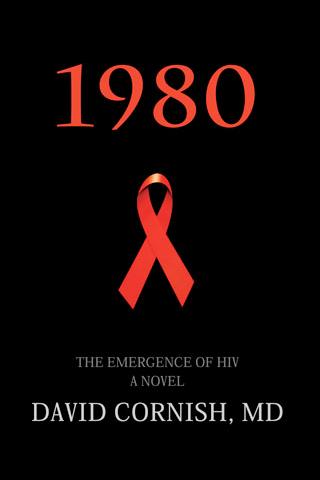
2003: THE TIME-LOOP DEVICE
Nolan Emerson, PhD, is a brilliant young theoretical and experimental physicist who is a professor at the University of Geneva, and the lead scientist at the CERN particle accelerator. He is a leader in the areas of general relativity and quantum mechanics. Dr. Emerson devises an experiment so radical and revolutionary that it seeks to unlock the astounding, complex, and mysterious secrets of Einstein’s space-time. Ultimately, his work challenges the fundamental notions of consciousness and of the concept of reality itself.
«(AUDIOBOOK available! See DavidCornishBooks.com)«
1918: THE GREAT PANDEMIC
Major Edward Nobel’s mission, as a physician, is to help protect American troops from infectious ailments during the First World War. However, his unique vantage point in Boston allows him to detect an emerging influenza strain that is an unprecedented global threat. Eventually, the 1918 influenza pandemic killed up to 100 million people, and became the worst natural disaster in human history.
1877: A NORTHERN PHYSICIAN IN SOUTHERN UNGOVERNED SPACES
Colonel Charles Noble is a US Civil War veteran, and an Army surgeon reservist. Extreme violence in the former Confederacy, in anticipation of a national election, has caused President Grant to send additional federal troops to the Southern states. Terrorists are determined to counter Noble’s good intentions, as they threaten the civil rights, and the very lives, of all who oppose them.
1980: THE EMERGENCE OF HIV
Dr. Arthur Noble is a brilliant first-year medical resident in San Francisco. Noble encounters a strange new ailment that seemingly appears out of nowhere, and delivers its victims a most horrible merciless death. Dr. Noble struggles to find answers to the medical mystery, even as many researchers and society refuse to believe that it is a serious public health hazard, or that it even exists.
14 New Release Roundup: Spring 2024 By
Corinna Kloth46 Read Across America Month: Sharing Books from the 50 States By Michele Mathews
72 Top 10 Must-See Libraries around the World By Michele Mathews
81 Interview with Esther Goldenberg On Book 1 of The Desert Songs Trilogy: The Scrolls of Deborah By Christina Consolino
89 Interview with Stacey Levine
On New Novel: MICE 1961 By Christina Consolino
95 Interview with Lindsay Merbaum
On her Writing and Mixology! By Christina Consolino


As we emerge from the cocoon of winter, there's a palpable sense of renewal in the air. The birdsong grows sweeter, the flowers begin to bloom, and there's an undeniable anticipation for the vibrant season ahead. Spring brings with it a sense of possibility, of growth, and of new beginnings. And what better way to embrace the spirit of spring than with a good book?
In this issue of our magazine, we celebrate the arrival of spring by delving into the world of independent books releasing this season. From captivating debut novels to thought-provoking works of non-fiction, indie authors are bringing fresh voices and innovative storytelling to the literary landscape. With each turn of the page, we invite you to explore the diverse array of indie books that are set to enchant
and inspire readers in the months ahead.
As we navigate through the pages of this issue, you'll find interviews with indie authors, reviews of upcoming releases, and recommendations for your springtime reading list. We'll explore the themes of growth, renewal, and transformation that are so inherent to both the season of spring and the world of literature.
So, dear readers, as you venture forth into the blossoming world outside, don't forget to take along a book or two to accompany you on your journey. And who knows? You may just discover your next favorite read among the pages of an indie gem.
Enjoy the issue!

“911– What’s Your emergency?”
“We’ve got a shooter in the mall. Send help.”
It’s November 13th in Lincoln, Texas. Scores of people are flooding into the food court at the local mall for a bite of lunch while shopping or out with friends or on a school trip with teachers. Suddenly, a lone shooter emerges from the shadows of the hallways and opens fire with his assault rifle. Mass chaos erupts. Lives are lost. Dreams are crushed and statistics grow in the nation’s epidemic of gun violence.
In his latest novel from Archway Publishing, The Ripple Effect, awardwinning author, John Crawley explores the devastating repercussions caused by a mass shooting. It is about the lives and deaths of the victims and the casualties to their families, also victims of the horrendous act.
In this twist on a plot, we know who did it, we just don’t know who will stop it. Maybe you?

Available at Amazon, Barnes and Noble, Archway Publishing and at a bookseller near you.
www.johncrawleybooks.com


Right after Mark’s next-door neighbor is murdered, he gets a new neighbor—the beautiful but mysterious Sylvia, who has just arrived from London. Mark is drawn into a mutually obsessive relationship with Sylvia. She is secretive regarding her past and Mark’s friends caution him that she can’t be trusted. But Mark won’t listen to his friends or to the priest who later claims that Sylvia is a deadly threat.
Mark is enchanted by Sylvia’s beauty and charm, even though dating her has its challenges. Whether it’s performing gymnastics on the ledge of the Golden Gate Bridge, creating an embarrassing scene at the wedding of Mark’s best friend, or shocking Mark with her unusual sexual proclivities, Sylvia never misses an opportunity to make a bad first impression.
When Mark first meets Sylvia, he tells her, “You’re the girl of my dreams!”
Sylvia smiles and responds with a warning—“Be careful what you wish for.”
“The Vampire Girl Next Door is a choice pick for one looking for a romance with a supernatural twist, highly recommended.”Burroughs


In The Vampire Girl Next Door, Mark fell in love with Sylvia, the beautiful, but quirky girl next door, not realizing that she was a vampire who killed his last neighbor.
Now, in The Vampire Girl in London, they fly from Mark’s San Francisco to Sylvia’s London. They tangle with terrorists, are shadowed by a CIA agent, and are pursued by a vampire-hunting cult. Even more challenging, they must cope with living in a mansion full of Sylvia’s vampire friends—some of whom she can’t really trust.
And Mark still has to deal with Sylvia’s sexual hijinks. Will Mark and Sylvia’s love be enough to survive it all?
“The Vampire Girl in London would satisfy supernatural fans and I’m once again entertained by Arbib’s fascinating couple, Sylvia and Mark.”
Lit Amri, Readers’ Favorite Book Reviews
www.thevampiregirlnextdoor.com
Available at Amazon.com in paperback and Kindle. Paperback and all e-book formats available on author’s website.
Check out these titles from

"A beautifully engaging fantasy teeming with dragons, fae, magic, and the importance of family and friendship. A joy to read from beginning to end!" – Julie Boglisch, author of the Elifer Chronicles, the Requiem of Stones series
"Augello (The Revolving Heart) has crafted a sweet, funny character study centered around a fiery animal-rights polemic." – Booklife



"This magical eastern European crime caper is filled with crackling romantic suspense, priceless artifacts, stoic philosophy and a truly stunning character arc." – BestThrillers.com
Born to a white mother and Filipino father in California's Depression-era labor camps, Connie Castro Jackson overcame racism and embraced her psychic gifts, inspiring many with her journey.


Check out these titles from

"A rare novel. An outstanding debut.” –Jamie Ford, New York Times bestselling author of Hotel on the Corner of Bitter & Sweet
"Despite its dark subject matter, Mary Dunnewold's FINE, THANKS: Stories from the Cancerland Jungle is an eloquent, poignant, lifeaffirming and surprisingly witty memoir well worth reader's time."
– IndieReader
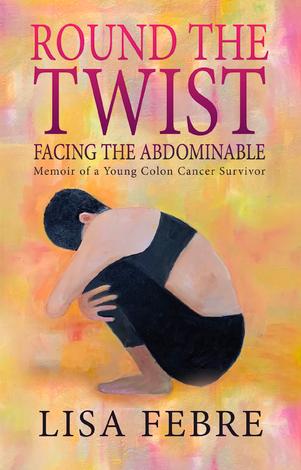


In 2021, 47-year-old vegan Lisa faced Stage-4C Colon Cancer without symptoms. Despite harsh treatments, her optimism and raw honesty shine through her survival story.
"Women Within is an intricate and engaging examination of three women connecting in an unlikely situation with flowing prose, stellar characterization, and vivid scene setting in a small package that's sure to stick with you long after the last page." –Manhattan Book Review



"Aislinn Givens leaves a settled life in Manhattan for an unsettled life in Singapore. That painting radiates mystery and longing. So does Clifford Garstang's vivid and simmering novel, The Last Bird of Paradise."
– John Dalton, author of Heaven Lake and The Inverted Forest
After The Glades' fire, a ledger exposing powerful men's involvement in sex slavery threatens to explode, putting Maddy Reynolds in grave danger.


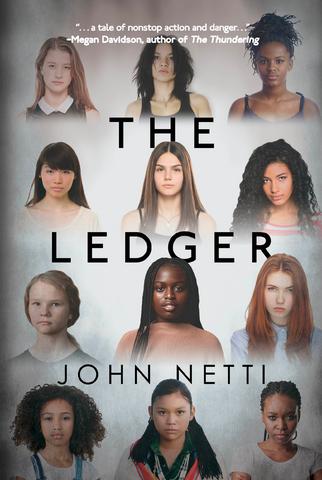
"Intriguing premise! Almost immediately, the reader is drawn into the innovative world of Watching: art heists, astral projection, gangsters, time warps, GBI agents, and mind melds. This is a fun ride."
– David Buzan, author of In the Lair of Legends
"Breakage is one of the year's best crime thrillers."
–BestThrillers.com (2023 Best Thrillers Book Awards Finalist)


Check out these titles from


Joe Turner's Harrowing Quest to Prove a Fugitive's Innocence!
"Fast pacing, clever plot twists, and intercontinental flavor make A Long Time Dead difficult not to finish in one sitting. 5/5 Stars." – Chanticleer Book Reviews
"Love the title! it made a 64-year-old dude pay attention. It reeks of childhood and scariness. The dialog is strong and Andrea writes very well." – Koehler Books

Widower Ed Gideon, grappling with loss, meets his late wife's killer's daughter amidst personal turmoil, rekindling grief and unexpected desires.
"Amato's prose is crisp, and the stakes are high-don't miss this hilarious crime caper with unforgettable characters and non-stop action!" – Cam Torrens, award-winning author of Stable and False Summit


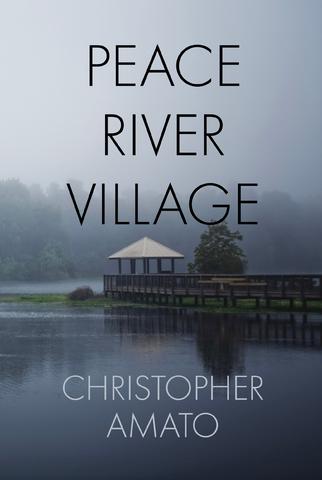


As the Sky Begins to Change is a book of poems to wake the world, lyric anthems for earth and kin.
In his third poetry collection from Red Hen Press, Kim Stafford gathers poems that sing with empathy, humor, witness, and story. Poems in this book have been set to music, quoted in the New York Times, posted online in the Academy of American Poets Poem-a-Day series, gathered in a chapbook sold to benefit Ukrainian refugees, posted online in response to Supreme Court decisions, composed for a painter’s gallery opening, and in other ways engaged a world at war with itself, testifying for the human project hungry for kinship, exiled from bounty, and otherwise thirsting for the oxygen of healing song.
Kim Stafford is a writer and teacher in Oregon, and founding director of the Northwest Writing Institute at Lewis & Clark College. His poetry titles include A Gypsy’s History of the World (Copper Canyon Press), and Wild Honey, Tough Salt (Red Hen Press). He has published a biography, Early Morning: Remembering My Father, William Stafford (Graywolf Press), We Got Here Together (a children’s book from HarcourtBrace), and a book about writing and teaching: The Muses Among Us: Eloquent Listening and Other Pleasures of the Writer’s Craft (University of Georgia Press).

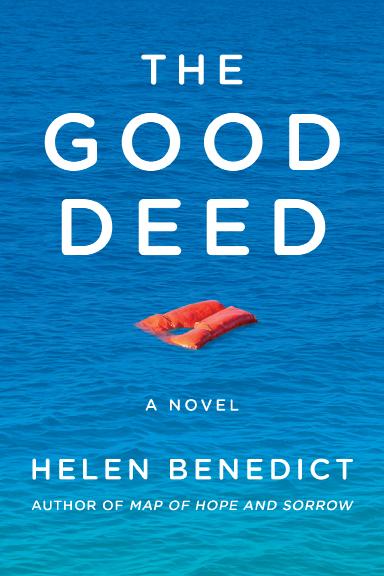
In The Good Deed, Helen Benedict offers a stark, powerful portrait of women on opposite sides of a refugee camp in Greece: the refugees trapped inside, and the troubled American tourist whose good intentions morph into a dangerous delusion, resulting in a poignant, layered novel on displacement and belonging, love and betrayal, and the jagged space between altruism and egoism.
Drawing from four years of interviews with refugees on Samos, along with twelve previous years of work on the Iraq War, Benedict has written The Good Deed as a series of lyrical, intensely felt alternating voices, following these women’s everyday lives in the camp, as well each of their backstories—stories of families, love, secrets, violence, war, and flight. When Hilma, the American, unwittingly does a “good deed,” she triggers a crisis that brings her and the refugee women into a conflict that escalates dramatically as each character struggles for what she needs.
In essence, The Good Deed is about the struggle never to lose hope, even in the face of war and the world’s hostility to refugees; the complexities that arise out of trying to help others; the healing power of friendship; and the everlasting bonds between mothers and children.

Helen Benedict, a professor at Columbia University, has been writing about refugees and war for many years, both in her nonfiction, Map of Hope & Sorrow: Stories of Refugees Trapped in Greece, published in 2022, and her two most recent novels, Wolf Season and Sand Queen. A recipient of the 2021 PEN Jean Stein Grant for Literary Oral History, the Ida B. Wells Award for Bravery in Journalism, and the James Aronson Award for Social Justice Journalism for her exposure of sexual predation in the military, Benedict is also the author of The Lonely Soldier: The Private War of Women at War Serving in Iraq.
Amy Shearn is the author of the novels How Far Is the Ocean from Here, featured as a notable debut by Poets & Writers and the Chicago Tribune; The Mermaid of Brooklyn, a selection of Target's Emerging Authors program and a Hudson News Summer Reads pick; and Unseen City, the 2021 Independent Publisher Book Awards' Gold Medal in Literary Fiction. Her essays have appeared in the New York Times Modern Love column, O, The Oprah Magazine, and several anthologies. A native Midwesterner, she earned an MFA from the University of Minnesota, and now lives in Brooklyn, New York, with her two children.
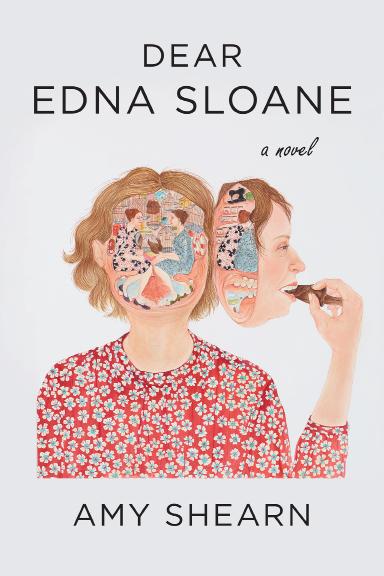
Dear Edna Sloane is a funny, fast-paced epistolary novel about fame, writers, ambition, and the ups and downs of a creative life.
Edna Sloane was a promising author at the top of her game. Her debut novel was an instant classic and commercial success, vaulting her into the heady echelons of the 1980s New York City lit scene. Then she disappeared and was largely forgotten. Decades later, Seth Edwards is an aspiring writer and editor who feels he’s done all the right things to achieve literary success, but despairs that his dream will be forever out of reach. He becomes obsessed with the idea that if he can rediscover Sloane, it will make his career. His search for her leads to unexpected places and connections, and the epistolary correspondence that ensues makes up this book, a novel infused with insights and meditations about what our cultural obsession with the “next big thing” does to literature, and what it means to be a creative person in the world.

A Professional Lola is a collection of short stories that blend literary fiction with the surreal to present the contemporary Filipino American experience and its universal themes of love, family, and identity. A family hires an actress to play their beloved grandmother at a party; a couple craving Filipino food rob a panaderya; a coven of Filipino witches cast a spell on their husbands; a Lolo transforms into a Lola. These are just a few of the stories in the collection that represent its roster of stories beautifully grounded in culture and vividly and meticulously painted to make the absurd seem mundane and the commonplace, sinister. Professional Lola embodies the joy, mystery, humor, sadness, hunger, and family that inhabit modern-day Filipino American virtues.
E. P. Tuazon is a Filipino American writer from Los Angeles. They have work in several publications such as The Rumpus, Lunch Ticket, Peatsmoke, and Five South. His work was chosen by ZZ Packer as the winner of the 2022 AWP Grace Paley Prize in Short Fiction. They are currently a member of Advintage Press and The Blank Page Writing Club at The Open Book, Canyon Country. In their spare time, they like to go to Filipino seafood markets to gossip with the crabs.

Cheri Johnson has won awards in fiction from the McKnight Foundation, the Bush Foundation, Yaddo, and the Fine Arts Work Center in Provincetown. She studied writing at the University of Minnesota, Hollins University, and Augsburg University. Her chapbook of poems, Fun & Games, was published by Finishing Line Press in 2009, and she’s written two series of nonfiction books for Full Tilt Press. Crocus Hill: A Ghost Story, a literary performance project she created with the composer Julie Johnson, the filmmaker D.J. Mendel, and the new-music ensemble Zeitgeist, was supported by the Knight Foundation. She lives in Minneapolis, Minnesota.


Ancient and contemporary myths—including both Ovid’s Metamorphoses and Ira Levin’s Rosemary’s Baby—overlay a coming-of-age story set in remote northern Minnesota.
Seventeen-year-old Annika Rose and her father Wes have spent the years since the death of Annika’s mother in self-imposed social isolation on their farm on the edge of the woods. When a young woman named Tina moves into a house down the road, the result is a sudden explosion of feelings in both father and daughter and a fierce rivalry. At stake in the competition is not only their relationship, but the life of the vulnerable young woman at the center of it all.

It’s not a river, it’s this river.
A hot, motionless afternoon. Enero and El Negro are fishing with Tilo, their dead friend’s teenage son. After hours of struggling with a hooked stingray, Enero aims his revolver into the water and shoots it. They hang the ray’s enormous corpse from a tree at their campsite and let it go to rot, drawing the attention of some local islanders and igniting a long-simmering fury toward outsiders and their carelessness. It’s only the two sisters—the teenage nieces of one of the locals, Aguirre—with their hair black as cowbird feathers and giving off the scent of green grass, who are curious about the trio and invite them to a dance. But the girls are not quite as they seem. As night approaches and tensions rise, Enero and El Negro return to the charged memories of their friend who years ago drowned in this same river.
As uneasy and saturated as a prophetic dream, Not a River is another extraordinary novel by Selva Almada about masculinity, guilt, and irrepressible desire, written in a style that is spare and timeless.

Selva Almada is the author of Brickmakers, Dead Girls, and The Wind That Lays Waste. She is considered one of the most potent literary voices in Argentina and Latin America.
Nicolette Polek is the author of Imaginary Museums (Soft Skull Press, 2020). She is a recipient of a Rona Jaffe Writers’ Award, and her work has appeared in the Paris Review Daily, BOMB, New York Tyrant, The Atlantic, and elsewhere. She holds an MFA in Fiction from the University of Maryland, and a masters from Yale Divinity School. She is from Northeast Ohio.

In 1967, the dancer Marta Becket and her husband were traveling through Death Valley Junction when they came across an abandoned theater. Marta decided it was hers. She painted her ideal audience on its walls and danced her own dances until her death five decades later.
In the present day, Gia has ended a relationship and taken a leave from her job in film studies at a university. She is sleeping fifteen hours a night and ignoring calls from her mother. In a library archive, she comes across a photo of Marta Becket and decides to write her a letter. Soon Marta magically appears in her home.
Gia hopes Marta Becket will guide her out of her despair. But is Marta—the example of her single-minded, solitary life—enough? Through precise, vivid vignettes, Bitter Water Opera follows Gia as she resists the urge to escape into herself and struggles to form a lasting connection to the world. Her search has her reckoning with a set of terrifying charcoal drawings on her garage walls, a corpse in the middle of a pond, a crooked pear sapling, and other mysterious entities before bringing her to Marta’s theater, the Amargosa Opera House. There in the desert, Gia finds one answer.
In this brief, astonishing novel, Nicolette Polek describes an individual awakening to faith while exploring our deepest existential questions. How do we look beyond ourselves? Where do words go? What is art for?

Like Love is a momentous, raucous collection of essays drawn from twenty years of Maggie Nelson’s brilliant work. These profiles, reviews, remembrances, tributes, and critical essays, as well as several conversations with friends and idols, bring to life Nelson’s passion for dialogue and dissent. The range of subjects is wide—from Prince to Carolee Schneemann to Matthew Barney to Lhasa de Sela to Kara Walker—but certain themes recur: intergenerational exchange; love and friendship; feminist and queer issues, especially as they shift over time; subversion, transgression, and perversity; the roles of the critic and of language in relation to visual and performance arts; forces that feed or impede certain bodies and creators; and the fruits and follies of a life spent devoted to making.
Arranged chronologically, Like Love shows the writing, thinking, feeling, reading, looking, and conversing that occupied Nelson while writing iconic books such as Bluets and The Argonauts. As such, it is a portrait of a time, an anarchic party rich with wild guests, a window into Nelson’s own development, and a testament to the profound sustenance offered by art and artists.
Maggie Nelson is the author of several books of prose and poetry including The Red Parts, Bluets, the National Book Critics Circle Award–winner The Argonauts, and On Freedom. She teaches at the University of Southern California and lives in Los Angeles.

Marie Mutsuki Mockett is the author of a previous novel, Picking Bones from Ash, and two books of nonfiction, American Harvest, which won the Nebraska Book Award, and Where the Dead Pause, and the Japanese Say Goodbye, which was a finalist for the PEN Open Book Award.

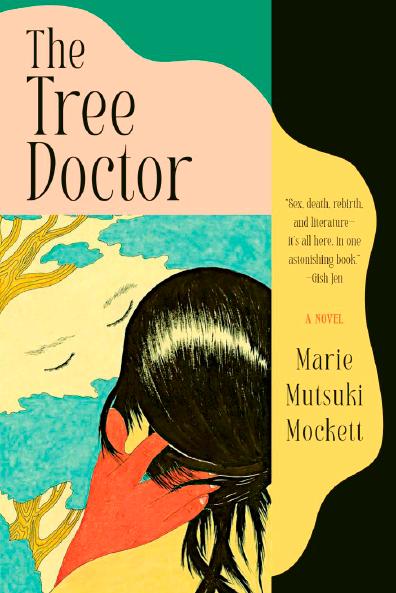
When the unnamed narrator of Marie Mutsuki Mockett’s stirring second novel returns to Carmel, California, to care for her mother, she finds herself stranded at the outset of the disease. With her husband and children back in Hong Kong, and her Japanese mother steadily declining in a care facility two hours away, she becomes preoccupied with her mother’s garden—convinced it contains a kind of visual puzzle—and the dormant cherry tree within it.
Caught between tending to an unwell parent and the weight of obligation to her distant daughters and husband, she becomes isolated and unmoored. She soon starts a torrid affair with an arborist who is equally fascinated by her mother’s garden, and together they embark on reviving it. Increasingly engrossed by the garden, and by the awakening of her own body, she comes to see her mother’s illness as part of a natural order in which things are perpetually living and dying, consuming and being consumed. All the while, she struggles to teach (remotely) Lady Murasaki’s eleventh-century novel, The Tale of Genji, which turns out to resonate eerily with the conditions of contemporary society in the grip of a pandemic.
The Tree Doctor is a powerful, beautifully written novel full of bodily pleasure, intense observation of nature, and a profound reckoning with the passage of time both within ourselves and in the world we inhabit.
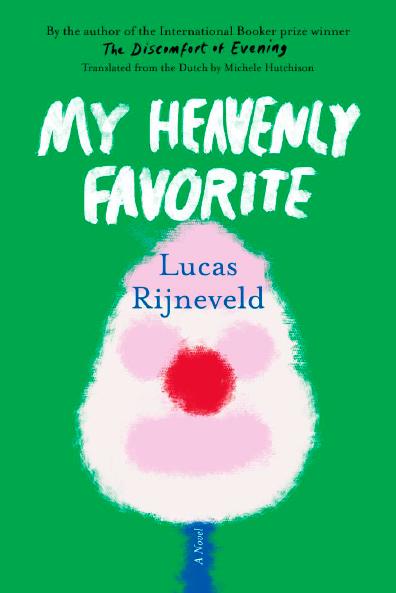
A confession, a lament, a mad gush of grief and obsession, My Heavenly Favorite is the remarkable and chilling successor to Lucas Rijneveld’s international sensation, The Discomfort of Evening. It tells the story of a veterinarian who visits a farm in the Dutch countryside where he becomes enraptured by his “Favorite”—the farmer’s daughter. She hovers on the precipice of adolescence, and longs to have a boy’s body. The veterinarian seems to be a tantalizing possible path out from the constrictions of her conservative rural life.
Narrated after the veterinarian has been punished for his crimes, Rijneveld’s audacious, profane novel is powered by the paradoxical beauty of its prose, which holds the reader fast to the page. Rijneveld refracts the contours of the Lolita story with a kind of perverse glee, taking the reader into otherwise unimaginable spaces full of pop lyrics, horror novels, the Favorite’s fantasized conversations with Freud and Hitler, and her dreams of flight and destruction and transcendence.
An unflinching depiction of abjection and a pointed excavation of taboos and social norms, My Heavenly Favorite establishes Rijneveld as one of the most daring and brilliant writers on the world stage.

Lucas Rijneveld grew up in a Reformed farming family in North Brabant before moving to Utrecht. He is the author of The Discomfort of Evening, which was the first Dutch book to win the International Booker Prize, as well as three poetry collections.
Amy Tector was born and raised in the rolling hills of Quebec’s Eastern Townships. She has worked in archives for the past twenty years and has found some pretty amazing things, including lost letters, mysterious notes, and even a whale’s ear. Amy spent many years as an expat, living in Brussels and in The Hague, where she worked for the International Criminal Tribunal for War Crimes in Yugoslavia. She lives in Ottawa, Canada, with her daughter, dog, and husband.


Dr. Cate Spencer is back in this highly-anticipated third installment of the Dominion Archives Mysteries.
It’s been a few months since the events of Speak for the Dead and Dr. Cate Spencer is seeking a temporary reprieve in the bucolic Eastern Townships of Quebec where she can come to terms with her brother’s death, find inner peace, build new relationships, and await a decision about her future. But when a man at a neighboring farm is shot through the eye with deadly accuracy, a metal detector lying next to him, Cate can’t help but investigate.
As she delves deeper into the mystery, Cate uncovers a world of drugs, lies, and violence hidden beneath the picturesque town, all of which threaten the tenuous peace she’s built for herself. As long-buried secrets and a centuries-old mystery become exposed, what will Cate lose to find the answers she seeks?
A gripping new mystery, Honor the Dead is a must-read for new and old Dominion Archives fans alike!

A killer terrorizes the morally bankrupt residents of an upscale neighborhood, leading them to turn to—and on— one another to survive.
The neighborhood of Oleander Court is the poster child for suburban bliss. The residents compare lawns beautified by hired help. They monitor home values. They toss perfect furniture because they wanted tapioca, not beige.
But when a string of murders rips through the neighborhood, suspicions abound as new secrets come to light. And as more and more bodies are taken away, it becomes clear that the killer is strategically selecting each and every victim, picking off the shallowest, most wasteful of the lot in spectacular fashion and leaving everyone in the neighborhood to wonder: Who’s next?
While most of their neighbors scatter like well-dressed cockroaches, a small group of the neighborhood ladies team up to solve their local mystery and restore their once-peaceful lives. But is this ragtag collection of amateur sleuths truly a united front? With reputations, freedom, and personal sanity on the line, the ladies must unmask the killer . . . even if the killer is among them.

Sarah Reida is an attorney whose work focuses on assisting veteran businesses performing federal government contracts. As an author, Sarah has published two middle grade books: Monsterville: A Lissa Black Production (2016) and All Sales Final (a Kirkus Reviews Best Indie Book of 2020). She lives with her husband and two young children near Atlanta, Georgia.
Ray Anderson is a hiker and the author of the AWOL Thriller novel series, which includes The Trail (2015), Sierra (2016), and The Divide (2020). Anderson has done a radio column on hiking. He has also written columns for the Appalachian Mountain Club (AMC) newsletter and contributed to the local news site, Patch.com, for Hingham, Massachusetts. Anderson lives with his wife, Nancy, near Boston.

With Earth on the brink of total annihilation, can a new universal language unite the world enough to save it?
It’s 2422 and the world’s governing mathematicians have calculated that society’s struggles with rampant war and homicide have put humanity on a crash-course with extinction. With an estimated fifteen months left until humankind’s total annihilation, the World Council of Mathematicians (WCM) determine the only way out of the crisis is to create the optimum language for humans, creating common understanding across all cultures and allowing them to work together for their joint salvation.
The WCM and Charles De Costa, a brilliant mathematics student, must rely on LIFT, a scientific breakthrough that allows them to enlist the aid of the greatest minds in history, to create this new world language based on mathematics, linguistics, and music. Can the great minds of the past help lead humanity to a better future? Can this new language be created in time? Or will society’s continued evil and miscommunication lead the world to an inevitable end?

Every now and then, more frequently than he cares to admit, antitrust lawyer Jack Patterson gets involved in a case more complicated, more dangerous, than just defending big companies who’ve run afoul. He doesn’t know it yet, but he’s about to take on a new client: the grandson of the head of the Louisiana crime syndicate in New Orleans.
Young David is a computer genius who has invented a software program considered to be a serious threat to both national security and most major technology companies. So when the FBI throws him in the DC jail without bond, and a conglomerate of tech companies sue him in Federal Court, Jack figures he can at least get the young man out on bail and be home for the weekend.
He couldn’t be more wrong. Before he can even meet with the client, his bodyguard is drugged and Jack is left for dead in the swamps of Cajun country. He must make his way back to DC, wage a battle in court, and dodge a hitman who lurks around every corner. Can Jack save his client and overcome those who will go to any length to prevent the software from seeing the light of day?

Webb Hubbell is a nationally recognized award winning author and popular lecturer on the U.S. criminal justice system, politics and government, writing a novel, and life lessons from sports. He also writes, speaks, and advocates publicly on social issues including the inhumanity of solitary confinement, racial bias in the criminal justice system, the collateral consequences of a criminal conviction, the marijuana legalization movement, and the miracle of organ transplants.
J.F. Riordan has been called "a modern day Jane Austen" for this series of character-driven novels that are by turns mystical, comic, and poignant. The author is an inveterate animal lover, and frequently brings her big German Shepherd, Moses, along to book signings. She lives in Wisconsin with her husband and three dogs.


A discovery on Washington Island brings new controversy among the locals, and Emily Martin has plans that will annoy all concerned. Meanwhile, Nancy is in love, Nelsen’s is for sale, and Fiona’s resignation from local government creates an opening that reopens old grievances. Even among the bickering, though, when bad news reaches the island, the shocked community forgets its animosities and rallies to offer support.


Each issue we feature a new bookstagrammer highlighting some of their amazing work.
NAME: NIKI
FAVORITE GENRE: ROMANTASY
BOOKS READ PER YEAR: 50-60 BOOKS
FAVORITE BOOK: THE BRIDGE KINGDOM
CURRENTLY READING:
DANCE OF STARS AND ASHES BY NISHA J. TULI
FAVORITE AUTHOR: DANIELLE L. JENSEN
TELL US A LITTLE ABOUT YOU.
@Sahmbookqueen: This question always stumps me a bit. I feel connected to so many different things, but at its center, I’m a mom who is passionate about connecting with and supporting other moms, preferably while sharing love for our favorite books while drinking a cup of coffee.
TELL US A LITTLE ABOUT YOUR BOOKSTAGRAM ACCOUNT AND HOW IT GOT STARTED.
@ Sahmbookqueen : I joined bookstagram in July of 2023 hoping to connect with other people who love reading as much as I do. I started by sharing reviews of my favorite books. Slowly, my account morphed into mom humor, bookish content, and the musings of an aspiring author. I’m not sure what direction my account is heading, but I love the positive space I’ve managed to carve out on the Internet.
@ Sahmbookqueen : I feel like this changes frequently, but if you asked me today, I’d say Nisha J. Tuli. She started out as an indie author and I adore her novels. Her banter is excellently written and I could curl up in the imagery of her novels.
@ Sahmbookqueen : Lady of Darkness by Melissa K. Roehrich
TELL US A BIT ABOUT WHY THE BOOKSTAGRAM COMMUNITY IS IMPORTANT TO YOU.?
@ Sahmbookqueen : I joined bookstagram hoping to find a few people that were willing to discuss my favorite books. What I found was an immensely supportive community and genuine friendships. I was incredibly thrilled to find people who love reading as much as I do. But, my favorite part about bookstagram is the endless support and kindness the community shares.


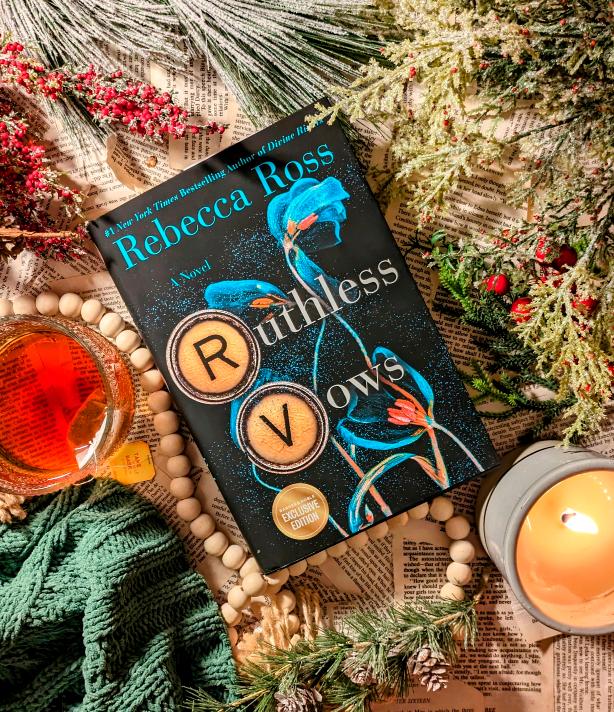



Thrilling, well-paced, and surprisingly dark, Naked Came the Detective is Glendall C. Jackson III’s beautifully written debut novel with a noir soul….The universe of escorting is shown with all its contradictions – the intimacy, secrecy, danger, allure, emotion, and transactional nature – without glamorizing it, or condemning it.”
—The Independent Review of Books
“ Available in Hardcover, Paperback and Ebook.
Jackson’s research into the reality of sex work gives the story persuasive power, the mystery plotting is suitably twisty, and the protagonist is funny, focused, and quick on her feet.”
— Publishers Weekly, BookLife reviews
WINNER: Best Indie Book Award, Paris Book Festival, Firebird Book Awards, The BookFest Awards.

Thus far, Dorothy had written her daughter three versions of the email inviting her to the opening of her retreat center in Woodstock, New York, but she hadn’t had the nerve to send any of them. In each message, she’d said that, along with wanting Cecily at the “gala”—the term her business partner had insisted upon using— she needed to talk with her. “There’s something important I’m finally ready to tell you,” she’d written in the first draft. Direct and honest, but she’d chickened out before sending it. Too ominous in tone. Cecily would think she had a terminal disease.
“There’s something you and I need to discuss” had been the second version. After reading it a third time, Dorothy was troubled by the portentous ring. It sounded almost like she was about to scold Cecily. In thirty-four years,
she’d never once scolded Cecily. That was for more conventional, disciplinary, and—let’s face it—boring mothers. She couldn’t stand the suggestion that she was about to start now.
When she composed and rejected the third and most-watered-down version (“I’d love for us to chat”), Dorothy had to admit her main con- cern wasn’t Cecily’s reaction but her own misgivings. Bringing up the topic in even the most obtuse way induced a flutter of anxiety that was akin to a heart palpitation, a symptom she now knew too well.
At this hour of morning, the sunlight that poured through the huge new window Dorothy had installed in the building she’d bought almost a year ago was blinding. Everyone who walked into the place praised it and raved about “the light.” There was that,

but the truth was, she preferred rooms in which the weather and the time of day were easy to avoid or ignore. When she lived outside Boston, she’d sometimes sneaked off to the casino in Connecticut and spent a day or two there. She’d always been drawn to gambling, but more than anything, she loved being in a place where time didn’t exist. She shouldn’t have let her designer friends talk her into this expen- sive addition. Because she had, she’d do what she’d always done: fake loving it in the hope that, eventually, she really would. That hadn’t worked with
her first boyfriend or her ex-husband, but it had been an effective strategy with sushi and T. S. Eliot. She repositioned her laptop to face away from the sun and tried the email again.
Finally telling her daughter the truth about her father was the right thing to do. It was time. Cecily had been with the same boyfriend for a few years now, and at some point, they might get married and have a baby. People cared about DNA these days, especially when it revealed interesting roots—that one drop of Egyptian blood that connected you directly to Cleopatra. Cecily had a right to know hers. No royalty in their background that Dorothy knew of, but certainly an element of the unexpected.
The problem was that Dorothy was proud of how honest and blunt she’d always been with Cecily, right from childhood. It had been the guiding principle of her relationship with her. She’d talked with her daughter about her problems with men, her use of drugs, Tom’s (her brother and Cecily’s uncle) sexuality, even the love affairs of the assorted people who sometimes stayed with them. She’d always treated Cecily like a (much) younger friend. Telling her now that she’d known the identity of her father all along and, obviously, how to contact him would be an admission of her having lied about this crucial piece of information for decades. She hated to paint herself as a liar, especially as a result of
After a lifetime of taking care of his impossible but irresistible sister and his cherished niece, Tom is ready to put himself first. An architect specializing in tiny houses, he finally has an opportunity to build his masterpiece―“his last shot at leaving a footprint on the dying planet.” Assuming, that is, he can stick to his resolution to keep the demands of his needy family at bay.
Naturally, that’s when his phone rings. His niece, Cecily―the real love of Tom’s life, as his boyfriend reminded him when moving out―is embroiled in a Title IX investigation at the college where she teaches that threatens her career and relationship. And after decades of lying, his sister wants him to help her tell Cecily the real identity of her father.
Tom does what he’s always done―answers the call. Thus begins a journey that will change everyone’s life and demonstrate the beauty or dysfunction (or both?) of the ties that bind families together and sometimes strangle them.
telling the truth. She couldn’t bear the thought of turning Cecily against her.
She read over the email yet again. She had to send this off. The open- ing party—the word gala had the same cringe factor for her as town home— was in two weeks, and she’d promised Fiona, her business part- ner, she would invite as many people as possible. In fairness, she needed to give Cecily advance warning and time to make plans. The whole point of including these hints was to demolish the option of changing her mind about telling her.

It was just like me to go ahead and die, leaving her behind. That’s what I’d hear her say, if I could hear her at all. Foolish, careless, typical. Expected, even. Another instance in which she was forced to clean up my mess, tend to my mistakes. Her guillotine voice would curse me in the sweetest tones. She would softly rake her bloody fingernails against my lifeless arm. She would say all the right things to lure me back, and keep all the wrong things to herself.
On that night we left the old neighborhood just as the rain began to fall. I ran first—I’ve always gone first—leading her back the way we came: through a colony of dusty relics, across a lush runway of grass, down a street where the homes are crowded with ghosts. I was not right. There was a pulsing inside my head, the tempo and weight of a thousand percussive drums, but
I convinced myself otherwise, let my mind talk me into believing my own lies.
As we set off, me behind the wheel and my twin sister by my side, the rain stopped and I felt a shivery relief. The clouds cleared and the full moon shot its light through the craggy branches, illuminating the road ahead.
I saw the deer’s body right before I swerved hard right, its long neck snapped unnaturally back. Then came a tree and a sheet of glass and the feeling that my head had launched away from my body, soar- ing into the sky, too far for me to retrieve it. I had time to form one last thought before my mind emptied itself of all things: She will know how to fix me.
Hours after the Accident MARCH 1983
Jude sits in the hospital

waiting room, folding and unfolding her hands, her fingernails still stained with her sister’s blood. Kat has been wheeled off to some distant room but Jude can see her perfectly—a tangle of wires on her chest and a tube stabbing her throat and the nurses fluttering about like a flock of poisoned birds. A drop of sweat falls onto Kat’s cheek. Machines blink and hiss. Instruments maneu- ver and gleam. Her long, taut body is hidden beneath a sheet. She has lost all sense of herself. The light begins to dim behind her closed eyes and Jude watches
it happen, an excruciating descent, a darkening by degrees.
Kat is leaving her. Against Jude’s will, her body holds itself absolutely still; the only moving part is a ticker in her mind, tallying Kat’s absence. One second, two, ten. Jude’s brain pulses and her heart grows quiet, as though the two organs are trading places, confusing their functions. Thirty seconds, thirty-five. Her lips collapse into a severe blue slash, trapping her breath behind them. Eighty-nine, ninety. Her ears register a strident voice, telling her to come back and stay with him, stay with him, stay with him, that’s it, steady, steady, good . . .
“Miss,” the doctor says, grasping Jude’s arm.
“Are you okay?” Those interminable ninety seconds rewind. Her body frees itself.
Her mind resumes being a mind and her heart a heart, racing and pounding as minds and hearts do. Her lips part and allow greedy gulps of breath. The waiting room shakes itself out and returns to its proper form: four dingy beige walls, a fake plant with dusty leaves, a tidy line of stackable fabric chairs, the sounds of coughing and weeping and the nightly news predicting nuclear war. The doctor squeezes Jude’s arm again and confirms what she already knows: Kat had been gone but now she is halfway back, alive but in a coma. He whispers a series of chilling words: traumatic brain injury, intercranial
pressure, damaged axons. She will live but might never be the same. Jude should expect the worst. She should prepare.
When Kat Bird wakes up from a coma, she sees her mirror image: Jude, her twin sister. Jude’s face and name are the only memories Kat has from before her accident. As Kat tries to make sense of things, she believes Jude will provide all the answers to her most pressing questions:
Who am I? Where am I? What actually happened?
Amid this tragedy, Jude sees an irresistible opportunity: she can give her sister a brand-new past, one worlds away from the lives they actually led. She spins tales of an idyllic childhood, exotic travels, and a bright future. But if everything was so perfect, who are the mysterious people following Kat? And what explains her uncontrollable flashes of violent anger, which begin to jeopardize a sweet new romance?
All their lives they’ve compensated for each other, and now, with Kat lying still and silent and swathed in bloody ribbons, Jude begins to do the work of her twin’s brain. Kat must be wondering why it’s so dark behind her eyes, a dark deeper than sleep, and why the voices she hears seem so slushy and far away.
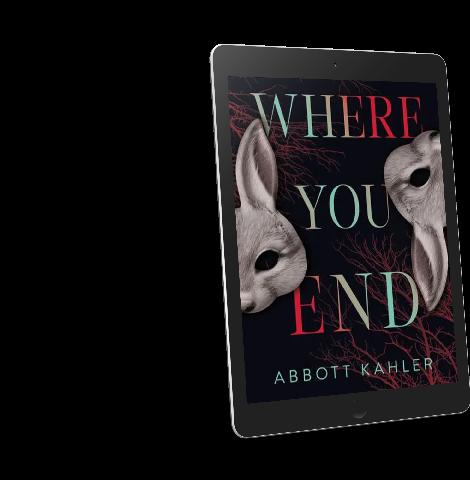
Worlds of Imperial Violence, I place imperial small wars at the center of a new history of global order. The book shows, first, how societies across the world embraced raiding and captive taking. Beginning in the fifteenth century, European empires mobilized these ancient practices on a novel scale. Conflicts in and on the edges of empires composed a global regime of plunder. Growing inequalities of power gave rise to new frameworks for violence in the eighteenth and nineteenth centuries. As Europeans asserted the right to set the laws of war and intervene anywhere to protect imperial subjects and interests, they assembled a sprawling regime of armed peace dominated by a handful of world powers.
As I traced these patterns, I was shocked by the frequency with which serial minor conflicts opened pathways to extreme violence. Wars that were billed as small and manageable exposed civilian
populations to ferocious attacks by fighters suddenly released, it seemed, from any obligation to refrain from cruelty. Strategies that had appeared to enhance security just as often produced catastrophe. Like players in a game in which routine moves drop pieces to positions on the board where all is lost, participants in small wars were aware that utter devastation was a real possibility, but they could not prevent it. Empires and their agents, meanwhile, deftly combined pledges to check the ravages of war with authorization of spectacular violence.
In writing about this history, I had to reach for new ways of studying “small wars.” Military analysts have tended to describe small wars as manifestations of insurgency and counterinsurgency. The bias has driven them to focus on questions about how and why global powers so often failed in the face of unconventional enemies. Typical of this tendency is the minor industry in the United States that aimed at assessing why American

officials made so many wrong moves in Vietnam. But schooling sponsors of war to learn lessons from the past so they might do a better job next time is an odd, even chilling, objective. It also answers the wrong questions. Our aim should not be to help humanity master the art of war but to understand the arc of war— the logic and practices that move antagonists with exquisite precision from conflict to conflict, and from exercises in containment right up to the edge of atrocity.
If I couldn’t rely on military analysts as guides, I also needed to cultivate a healthy skepticism of some common
approaches to law and war. Followers of the German jurist Carl Schmitt, who began to ponder war when he was an enthusiastic member of the Nazi Party, have focused on the relation of imperial violence to states of emergency or exception. The approach has opened new ways of mapping the dynamics of imperial violence, but it also misses a great deal. Although empires frequently deployed emergency measures like martial law to sanction and systematize violent repression, their baseline condition was low-level violence organized in routine sequences. This ongoing violence and its many forms gave emergencies their logic and rhythm—not the other way around. The phenomenon also naturalized extreme violence.
The slaughter and enslavement of civilians, starvation of whole towns, and campaigns of
dispossession—these and other brutal projects were integral parts of the global imperial order.
The age of empires is in many ways still with us. In the twentieth century, international treaties and institutions sought to ban war, and it is tempting either to portray the proliferation of small wars as a sign of international law’s failures or to regard parts of the world as descending into the unruly warfare of the premodern past. Instead, this book suggests many continuities in the mechanisms, justifications, and rhythms of war across global and international orders.
When twentieth-century empire-states packaged their violence, for example, as an inside job—a work of policing, not war—they were drawing on an imperial repertoire. It is worth exposing
Imperial conquest and colonization depended on pervasive raiding, slaving, and plunder. European empires amassed global power by asserting a right to use unilateral force at their discretion. They Called It Peace is a panoramic history of how these routines of violence remapped the contours of empire and reordered the world from the fifteenth to the twentieth centuries.
Holding vital lessons for us today, They Called It Peace reveals how the imperial violence of the past has made perpetual war and the threat of atrocity endemic features of the international order.
such continuities rather than highlighting the novelty of contemporary puzzles about how to regulate and limit war.
Today’s warmongers resemble agents of empires when they claim that “small” violence is necessary to keep and produce order. They deploy imperial languages of protection and peacekeeping to justify undeclared wars in far places. And they echo imperial sponsors when they assert that it is possible to limit the suffering unleashed by war. To be able to follow the underlying logic of small wars in the present, we need to understand the rhythms and rationales of imperial violence in the half millennium before the twentieth century.

If Ocean gets through this, she’s keeping the hoverbike. The rain’s blowing practically sideways with the wind as she races through it. She leans forward in her seat, her leg muscles tensed underneath her as the other hoverbike’s lights get closer. She pumps the two right pedals and anchors her foot swivel using her heel as she skids around a curve. The pitch of the hoverbike’s engine goes up a half octave as she urges it forward. She can’t see the path, but concentrates on following the other raider, his bike a flash of aqua blue in the gloom, his lights a stream of ruby. She has to catch up with him first; she’ll figure out the rest after.
The bike kicks and she controls the clutch release into the next gear. It’s been years since she’s ridden, but it’s all coming back to her, proving that adage true. Ocean’s lucky. The raider’s crew, Phoenix’s crew, if her eyes can be believed, must have chosen these hoverbikes because they’re cheap and difficult as hell to drive— less likely to be stolen.
This gen of hoverbike was built for drift-car fanatics and doesn’t include the brake-lever mechanism along its handlebars. Hajoon specialized in cars, including the Nissan 240SX that he rebuilt, but he taught her everything she needed to know about clutches, pedals, and gears. It’s all in the feet, and Hajoon always said her sensitive feet were her greatest asset. All those years of ballet training were the only useful part of her time at Sav-Faire.
The raider in front of her isn’t bad. She’s just better. Even with his head start, he’s losing time on the curves. She drifts through them faster, instinctively carving the best line. As she rounds the next corner, her bike tilts sideways, and she dips down. The road races by her cheek, spitting water and gravel. As she straightens, the helmeted head briefly swivels back to her. She’s glad she didn’t take Von’s advice to don one herself, even if the rain flicks her skin like a shivery spray of stinging nettle. It’s hard enough to see out here and she doesn’t

know the terrain well. She should have read Dae’s info packet. The raider revs up a steep climb and she closes in on him, pressuring him from the back. When the path opens up he cuts an abrupt left onto a bridge that stretches over the lake. She turns sharply after him, and the hoverbike whines in response.
Wherever he’s leading them, it’ll be better to force him to a stand before they arrive. The bridge is metal and slick with rain, the water sloughing off the edges in sheets. There aren’t any railings, and that’s what gives Ocean the idea. She speeds forward, kissing her front wheel against his
hoverbike. It’s not enough to throw him off balance, but he peers back again, just as she was hoping. Ocean twists her handlebars to the side and then punches the button on the front panel. Her hoverbike goes dead and slams downward. Ocean’s ready for it, though, and uses the momentum to launch herself from the bike. The bike’s still turning from her initial twist and as it hits the slick bridge surface, it careens into the raider. Ocean hits the ground hard and the air collapses out of her lungs like a popped paper bag. The raider leaps from his bike as hers takes it out. Both hoverbikes fly over the edge of the bridge into the water below.
There goes that dream. But there’s no time to mourn the loss because the raider has recovered a lot more quickly than she expected. He slides over to her, kicking her square
in the stomach. Ocean’s body slaps the ground with a splash. She tries to get up but slips, her boot squealing across the ground. She reaches for her gun. His gloved hand punches it out of her grasp. Pain arcs rocket hot in her face where he follows up with another fist. Stars explode in Ocean’s vision. She should have kept up with her PT, but raiders? Again? What are the chances? She tastes the blood dripping down her throat and when she spits, red mixes with the phlegm. He rips his helmet off and swings it around to hit her. She catches the blow with crossed arms. Rain’s pouring down and when she falls backward, it sloshes around her body. She quickly pushes herself up onto one knee but he’s already waiting. She lunges forward to tackle him. He throws his helmet away and grapples his arms around her. Then she’s flipped through the air, rolling again.
Ocean Yoon has never felt very Korean, even if she is descended from a long line of haenyeo, Jeju Island’s beloved female divers. She doesn’t like soju, constantly misses cultural references, and despite her love of the game, people still say that she doesn’t play Hwatu like a Korean. Ocean’s also persona non grata at the Alliance, Korea’s solar system–dominating space agency, since a mission went awry and she earned a reputation for being a little too quick with her gun. When her best friend, Teo, second son of the Anand Tech empire, is framed for murdering his family, Ocean and her misfit crewmates are pushed to the forefront of a high-stakes ideological conflict. But dodging bullets and winning space chases may be the easiest part of what comes next.
Ocean sees where she’s heading and scrabbles against the ground, trying to get purchase. Her fingers lock into the grate at the edge of the road, just as her body falls off the bridge. She holds fast against the wrench in her arms. She’s never come this close to having them torn out of their sockets. Agony rips through her right shoulder. Her scream erupts from her whole chest. The raider looms over her. He could stomp on her fingers and that’d be it. Instead, he crouches down above her, pulling off his gloves as he does. She blinks water out of her eyes. He’s a lot younger than she expected. Olive skin and catlike eyes. He has a hard, appraising gaze and dark, wavy hair that’s being flattened by the raindrops.
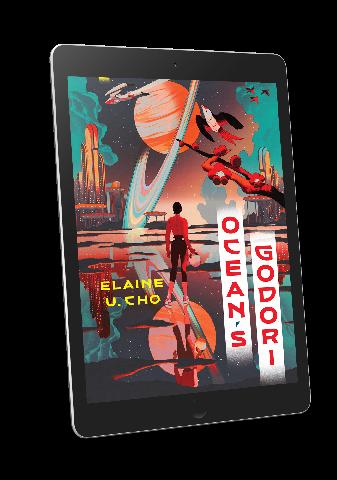
CONCEALS, sex reveals,” my sister said.
I thought she was driving me to Međugorje, but she had a different plan.
“There’s a nasty storm coming—we left at just the right time,” she continued. The anticipation in her voice was palpable.
“Isn’t it better to drive in nice weather?” I asked.
“I prefer rain,” she said, stepping on the gas. Her window was down and the wind was ruffling our hair. It wasn’t blowing hard, but I could tell it was going to get worse. We both listened carefully to the forecast. The rain didn’t matter— what excited my sister was the thunderstorm slowly moving inland. I closed my eyes as she described the sky. My mind halted at the color blue; I’d begun to forget it. It took me a moment to understand what my sister was talking about. Colors were growing more and more abstract. They were harder for me to imagine than God.
before, I had lost my sight.
Quite suddenly. My sister had taken me to various doctors, with no
results. My eyes were totally normal. Neither the ophthalmologists nor the neurologists could find the cause of my blindness. I’d suffered no physical injury: no fateful blow to the head, no tumble down a manhole. No one in my family had ever gone blind. Darkness had simply descended from nowhere and, panicstricken, I struggled to escape. After consulting the doctors I went on various pilgrimages, first to Marija Bistrica because it was closest, and then wherever else I could think to go. I visited all the monasteries in Serbia, Montenegro, and Croatia, all the hodže and imams in Bosnia, and even one rabbi in Zagreb. In Zavidovići, they performed molybdomancy on me, read the beans, blew in my ears. A woman from Subotica told me to put two nails under my pillow every night to drive away the Devil, but my sister wouldn’t hear of it. She didn’t believe in God and she despised priests, but she took me to see them anyway. I didn’t lose hope. I carried amber prayer beads in one pocket, a rosary in the other. My sister sewed talismans onto my clothes.
“It’s all nonsense,” she said. “If Yugoslavia hadn’t fallen apart, we would have decent doctors. Communists would

be able to help you see again.”
Whenever my sister would open her mouth to spit on God, I would recite a prayer or two to silence her. “Hail Mary, full of grace . . .” My sister was named Marija, and I felt like I was also praying to her. It was difficult, getting used to being blind.
For the first three months, I cried incessantly and prayed to God to either restore my sight or take my life. My sister got me a cane and a guide dog. They didn’t help though, because fear and shame kept me from leaving the house. Of all the senses, I’d always valued sight the most. So when I lost it, it was as if I’d lost my legs. I sat by the window all day, in complete darkness
regardless of the time. I sobbed loudly on purpose, so all the neighbors could hear.
“Enough!” snapped my sister. “It’s time to move on.”
To punish her, I vowed to seek answers in seminaries and monasteries. Without hesitating, she filled up the tank and we set off for Marija Bistrica. That pilgrimage didn’t help either, but once I got going, it was hard to stop me. I wanted to travel, and my sister spent weekends in her car anyway. She was constantly escaping from home, escaping from me. Now I began to escape with her.
THE DAY BEFORE I went blind, I’d masturbated for the very first time in my life. I was in the bed my grandmother used to sleep in. Above me hung a fragile ceramic crucifix. I came abruptly and Jesus fell to the floor, shattering. I didn’t say a word to my sister. The next night I lost my vision.
Marija sometimes went to Bosnia, so she remembered that there was a Franciscan monastery in Jajce. After Bistrica we went there, but instead of seeking help, we visited the bones of the last Bosnian king, Stjepan Tomašević. I couldn’t see him, but my sister described him succinctly.
“He’s very small,” she said. I felt nothing when I touched his glass coffin. My sight was not restored. It was at that moment that I began to doubt God. I felt ashamed, so the whole ride home I prayed. I gripped my rosary and thought of the Virgin. I understood Marija. Not my sister Marija, rather the Virgin Mary. I never managed to understand my sister. We were very different. She was a grumpy librarian, and I avoided literature because I feared it had made her that way, that books had ruined her life. While Marija went to the library, I sought out nature, far away from the literary heroes she served
The eleven stories in Sweetlust interweave feminist critique, intertextuality, and science fiction tropes in an irreverent portrait of our past, present, and future.
In a dystopian world with no men, women are “rehabilitated” at an erotic amusement park. Climate change has caused massive flooding and warming in the Balkans, where one programmer builds a time machine. And a devious reimagining of The Sorrows of Young Werther refocuses to center a sexually adventurous Charlotte. Asja Bakić deploys the speculative and weird to playfully interrogate conversations around artificial intelligence, gender fluidity, and environmental degradation. As she did in her acclaimed debut Mars, Bakić once again upends her characters’ convictions and identities—and infuses each disorienting universe with sly humor and off-kilter eroticism. Visceral and otherworldly, Sweetlust takes apart human desire and fragility, repeatedly framing pleasure as both inviting and perilous.
more devoutly than I did Jesus.
Once, when she wasn’t home, I took a peek at her personal library. She had books by the Marquis de Sade, whom I’d heard terrible things about at school. He was surely burning in hell. I opened one of his books right to the sentence: “Virtue, vice, all are confounded in the grave.” My sister had underlined it. She’d also marked: Oh! let her fuck with impunity! As I lay in bed, I thought about what I’d read. Before going to sleep I prayed, and then my hand lowered itself between my legs and waited for something. Then Jesus fell from the wall, and I lost my sight.

When I first started working as a princess, I felt a little self-conscious peeking through a gap in the fence into a client’s yard. Nowadays, it comes as second nature. Through a knothole, I see a French bulldog in a polka-dot bowtie, squirming on his back and sunning his round, speckled belly. I also see a rustic-looking shed with a massive window. In the window, I see the severed heads of bobcats and boars and black bears. I wonder for a moment if the hunter who owns this shed only kills animals that start with the letter b. No, there’s a sheep’s head right there. Ah, but is it a bighorn sheep?
My attention shifts away from the shed because a little girl appears with glittery stickers covering her arms like tattoo sleeves. She tickles the armpits of the French bulldog for a while, and then she lies down
beside him on the wellmanicured lawn. A boy with a buzzcut appears and drops a balloon onto the girl’s stomach.
The taxidermy shed gives me Norman Bates vibes, but at least there are actual children at this children’s party. That isn’t always the case. Now and again, guys will book you for a bachelor party, or worse. I haven’t experienced this myself, but I visit the princess forums and I read the stories.
Now that I’m feeling somewhat safe, I make my way to the front of the house where I make my grand entrance. Sometimes a parent will speak with me one-onone before leading me to the heart of the party, but most of the time I’m greeted at the door by a horde of wide-eyed, yipping children. This time around, three girls spill out of the front

entrance before I can even ring the doorbell.
Children soon surround me on the front porch, and I sing the Greeting Song. Or croak is more accurate, as this is my seventh party this week and I’m losing my voice. To those children who come close enough, I gently tap them on the head with my magic wand.
After I finish singing, a young mother shakes my hand and leaves behind a smear of frosting on my glove. She tells me her name, although her voice is too soft for me to hear
it, and she leads me into the house to the birthday girl, who also politely shakes my hand. While I sing the girl the Birthday Princess Song, she stares down at an astronaut doll bent in strange angles on the hardwood floor. Even when I present her with a magic wand of her very own, she takes it without looking at me and doesn’t say a word. I don’t mind.
I sing a couple more songs and teach the children to do the fairy tale shuffle. Eventually, the birthday girl musters up enough courage to approach me and say, “Do you want to see my dog?”
“Oh yes,” I say, in the sicklysweet manner that feels almost normal to me at this point. “I do so love animals.”
There aren’t any songs in the princess guidebook that are meant for pets, but I made one up about a year ago. Through song, I tell the French bulldog that his heart is full of gold and that his nose is very cold.
I won’t be winning any Grammys for my lyrics, I know, but the kids gobble this ditty up.
One of the good things about princess work, compared to my other jobs, is that time almost always passes swiftly. One minute I’m painting a golden tiara onto a girl’s chubby face, and the next, I’m packing my rainbow duffle bag to head out.
Before I leave the yard, the girl with stickers covering her arms hops toward me.
Seraphina must infiltrate a bizarre and dangerous cult to determine why her sister is in a coma after a mysterious accident at the hands of the cult members.
Seraphina Ramon will stop at nothing to find out the truth about why her sister Eff is in a coma after a very suspicious “accident.” Even it means infiltrating the last place Seraphina knows Eff was alive: a once-abandoned amusement park now populated by a community of cultists.
Follow Seraphina through the mouth of the Goblin: To the left, a wolf-themed roller coaster rests on the blackened earth, curled up like a dead snake. To the right, an animatronic Humpty Dumpy falls off a concrete castle and shatters on the ground, only to reform itself moments later. Up ahead, cultists giggle as they meditate in a hall of mirrors. This is the last place in the world Seraphina wants to be, but the best way to investigate this bizarre cult is to join them.
“Are you a real princess?” she says.
“What do you think?” I say, because according to the guidebook, a princess can’t answer a question about her true identity with the truth, or with a lie. The girl stares at me with her head tilted far to the side. After a few moments of scrupulous inspection, she peels a tiger sticker off her arm and holds the object out to me. “You can have this, if you want.”
“Thank you ever so much.” I take the sticker, and the girl waits silently until I press the gift onto my arm. Then she dashes away.
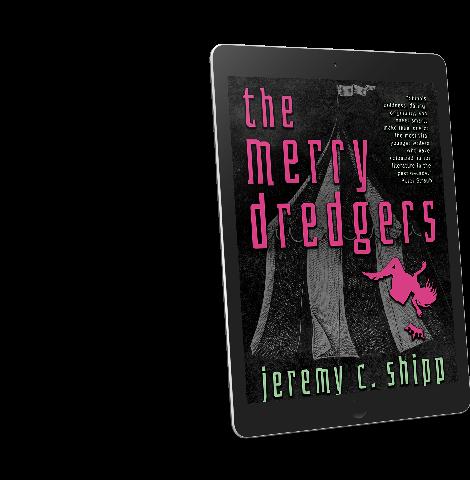


Back in 1998, Read Across America Day started as a way to get children to read, and it coincided with Dr. Seuss’s birthday on March 2. Since then, the day has evolved into Read Across America Month and a year-round program.
Thinking about this program, I wondered what books I’ve read that are set in our 50 states, and much like my travels, I discovered I’ve read at least one book from nearly half of the states. Below, I’m sharing the list of the books I’ve read over the years.
The story of Helen Keller has always fascinated me because I can’t imagine what it was like to be both deaf and blind. She wrote this memoir to tell her journey, and this book was later made into a movie called The Miracle Worker.
During my brief years of teaching high school English, I taught this novel to juniors. When I’d read it as a high school junior years before, I didn’t find it as interesting, but as an adult, it’s become one of my favorite books. Nine-year-old Scout tells the story about racial injustice in a small town in Alabama during the 1960s.
I haven’t read a nonfiction book quite like this one. It’s about the journey of Christopher Johnson McCandless, who lived in the Alaskan wilderness for four months before he died.

Krakauer used his journalism skills and investigated McCandless’s story so he could write this book.
As a dog lover, I can’t say I loved this book, but since it is considered one of the classics in American literature, I did finish it. Buck is a 140-pound mix who is stolen from his family and sold as a sled dog. He goes on a journey to adapt to the wilderness.
MAYA ANGELOU:
One of the many books I read in college, this book is about Maya and her older brother being sent to live with their grandmother in Stamps, Arkansas. She takes us on her transformation from a victim of racism to a young woman who deals with it in a dignified way.
OF MICE AND MEN BY JOHN STEINBECK:
Based on Steinbeck’s own
experiences, this novella is about George and Lennie as two migrant workers. They move from place to place during the Great Depression looking for jobs. I felt like this book gives us a good look at what it was like during that time in our history.
DIVERGENT BY VERONICA
ROTH:
After reading Hunger Games, I gave this one a try and enjoyed it. This young adult novel takes place in Chicago after an apocalypse. The citizens, including the teens, join one of the five factions. They aren’t allowed to show any independence. There is a romance subplot between the main character and one of her group’s instructors.
This book is another young adult novel about two teenagers who meet at a cancer support group and fall in love. Set in Indianapolis, Green does a decent job of taking us around the city describing various tourist
attractions as the teens get to know each other.
As a criminal justice major in college, a creative nonfiction book like this one fascinates me. Capote tells the story of a family who were brutally murdered in Holcomb, Kansas. He and author Harper Lee traveled to the town where they did interviews to learn more about what happened.
This is another book that fascinates me because Jefferson is in the wrong place at the wrong time. He is a young black man who is sentenced to death, and a teacher helps him become a man.

MAINE
CARRIE BY STEPHEN KING:
This book was probably one of the first ones I read by horror author Stephen King. He has lived most of
his life in Maine, so it didn’t surprise me that this story is set there. Carrie is a misfit who is bullied, and she begins using her telekinetic powers to seek her revenge.
MARYLAND
THE SISTERHOOD OF THE TRAVELING PANTS BY ANN BRASHARES:
As you can probably tell by now, I do enjoy reading young adult novels, and this one is no exception. Brashares writes this coming-of-age story about four teen girls who live in Maryland. They find a pair of jeans that mysteriously fits all of them even though each girl is a different size. They share these jeans as they travel to different parts of the world one summer.
MISSISSIPPI
THE HELP BY KATHRYN STOCKETT:
I also enjoy historical fiction, so this one was a must-read for me. A recent college graduate tries to make a difference during the 1960s in a Mississippi town. The book gives a good portrayal of what it was like for

African American women working in white households during that time in the South.
MISSOURI
THE ADVENTURES OF HUCKLEBERRY FINN BY MARK TWAIN:
This book is another of my favorites—probably because I enjoy a story told in first person. Huck tells us the story of his adventures to be civilized by his guardian and her sister.
ARE YOU THERE, GOD? IT’S ME, MARGARET BY JUDY BLUME:
As one of my favorite books from my childhood, this book tells the journey of teen Margaret Simon through adolescence. She is not only dealing with her lack of religious affiliation but topics about growing from a girl to a young woman.
NEW YORK
THE GREAT GATSBY BY F. SCOTT FITZGERALD:
I had to read this one in high school,
and I can’t say I am a huge fan of it. But I do realize it is a well-known book by Fitzgerald, especially after the movie. It takes place during the Jazz Age on Long Island and is the story of Jay Gatsby and his love for Daisy Buchanan.
SAFE HAVEN BY NICHOLAS SPARKS:
I haven’t read many of Nicholas Sparks books, but this is one I have. A mysterious woman shows up in a small North Carolina town and befriends a shop owner. She finds herself falling for him and his two children.

THE OUTSIDERS BY S. E. HINTON:
This classic book is another of my favorites. Set in Tulsa, Ponyboy tells the story of the two rival gangs—the Greasers and the Socs. This book deals with some serious themes, such as gang violence, underage drinking, and family dysfunction.
MY SISTER’S KEEPER BY JODI PICOULT:
This book was the first one I read by Jodi. It takes place in a fictional town in Rhode Island where Anna was born as a savior sister because her older sister was diagnosed with leukemia. When their parents ask 13-year-old Anna to donate a kidney, she sues them for medical emancipation.
THE FIRM BY JOHN GRISHAM:
This book was the first one I ever read by John Grisham. Mitch McDeere figures out his job at a law firm in Memphis isn’t what he thought it would be. Soon, he must choose between the law firm or the FBI.
TEXAS
HOLES BY LOUIS SACHAR:
This young adult novel was a book I taught to freshmen. Stanley is sent to a juvenile detention facility in a Texas
desert after he’s wrongfully convicted of theft.
This book is a classic among younger readers, and it’s another one at the top of my list of favorites. It tells the story of two friends who view the woods by their houses as a magical kingdom.
When I took a creative writing class in college, this memoir was one of the books I had to read as we studied writing styles. Annie shares about her childhood doing things like playing baseball and brings her stories to life with her writing.
Most of the time, I try to read the book before watching the movie, and I’m glad I did in this case. Susie is a
14-year-old girl who is murdered. She tells the story from Heaven.
WILDER:
Growing up, I read all of the books Wilder wrote. This autobiographical book is the first in the series. Wilder tells us memories of her early childhood growing up in Pepin, Wisconsin, in the 1870s.

I’m sure I have more books to share, but the list is a good start. Now it’s your turn. How many books have you read that take place in each of the 50 states?
Syrup Sandwiches
is a powerful story about a young black boy who defeats the odds. Anthony Owens shares how he became a successful man as he had to rise above the expected outcome for a child raised in poverty.

Syrup Sandwiches is an inspiring story that gives hope to all children, especially poor children of color, providing a message of hope and success. In a time when society is looking at stories that speak to the black American experience, this is a story that is unapologetically authentic.
Growing up in 1970s and 80s suburban Houston, Judy Haveson is funny, sarcastic, and fiercely loyal, especially to her family, friends, and big sister, Celia. When she suffers a series of unimaginable traumatic events, her seemingly idyllic childhood comes to a halt, changing her life forever.

In Laugh Cry Rewind, Judy takes readers on her journey of self-discovery, sharing funny, touching, and heartbreaking stories. Her message to others who have experienced loss or tragedy is this: stop waiting for the other shoe to drop. Let life go on, and good things will be waiting for you on the other side of the pain.
Sometimes an unimaginable tragedy can bring a new outlook on life and love. Twelve years ago, in the wake of a tragedy, Mariah rejected the church community that failed her. Mariah moved a thousand miles away to Boulder, Colorado, with her infant daughter, Star. But the past continues to haunt her, and Mariah has yet to reveal to Star what had happened. At thirteen, Star is brilliant and sensitive, with an uncanny ability to intuit truth. Through dreams, observations, and journaling, Star inches ever closer to uncovering her mother’s secrets.

In 2042 the United States is recovering from terrorist attacks that upended the government, rewrote our civil liberties, and erased two states from the map. River, a widow, single mother, and veteran of the Caliphate Wars, works as a waste hauling trucker, is weeks away from the end of her contract and returning to her young daughter. Finn Cunningham, a hydrologist, is suspicious of environmental changes he’s seeing in nearby western waterways and decides to investigate. His decision sets him on a collision course with River, sending them both on the run. One a fugitive, the other a reluctant participant, they develop an affinity for each other.

McVeigh puts the spotlight on Darcy in this imaginative re-telling of Austen’s classic tale. In a timeless story of love amid the clash of social classes, Darcy is faced with a terrible choice: to stay in London to force Wickham’s hand – or to go to Rome, to salvage his family’s reputation.
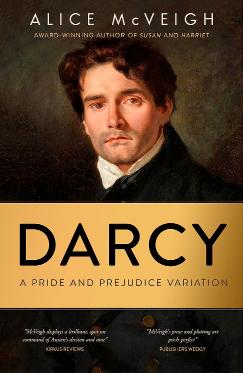
With a new Darcyesque slant, omitted scenes from the original, and an extra helping of humour – including excerpts from The Wisdom and Wit of Miss Mary Bennet – this is a fresh new Pride and Prejudice with (wedding) bells on!
The bombing of Pearl Harbor propels America into WWII and two Japanese Americans into chaos. Separated by the Pacific, each embarks on a tumultuous path to survive and live the American dream. Ruby Ishimaru loses her liberty and uproots from her Hawaii home to incarceration camps on the mainland. Koji Matsuo strains under the menacing clouds of the Japanese war machine and atomic bombing while concealing a dangerous secret-one that threatens his family's safety. When destiny brings Ruby and Koji together, their chemistry is magnetic, but wounds of trauma run deep and threaten their love as another casualty of war.
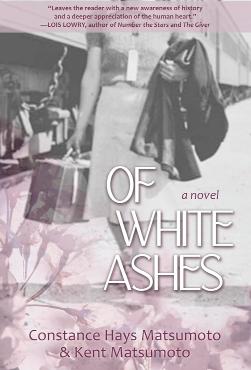
Clive and Henrietta return to England to find Castle Linley in financial ruin. When Clive’s cousin, Wallace, invites an estate agent in to assess the home’s value, the agent is later found poisoned. Clive and Henrietta are soon drawn into an investigation, which is slowed by an incompetent local inspector and several unexplained phenomena—the cause of which many believe to be the workings of the ghost of a hanged maid. Meanwhile, Gunther and Elsie have begun life on a farm in Omaha. Circumstances are difficult, but they are content—until Oldrich Exely appears, proposing an option Elsie finds difficult to ignore.

The year is 1844. On a May midnight, Eliza Haycraft flings herself into a canoe to escape a husband who beats her and a life that does the same. She is penniless and illiterate. Yet a decade later, sex and secrets will make her the wealthiest woman in St. Louis, a frontier boom town at the western edge of a restless nation. With only herself to rely on, Eliza becomes a prostitute and madam, then a property owner and puller of strings. She tangles with a vindictive rival and a governor who will become a Civil War turncoat. Scarred by experience, she finds true love but dares not admit it even to herself.
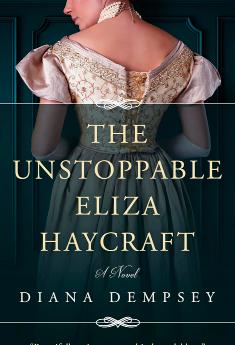
The fate of humanity rests in the hands of a few.

Pulse: Book Two is the conclusion of B.A. Bellec’s dystopian sci-fi horror duology. This time around we are tapping into iconic stories like The Stand, Station Eleven, Cloud Atlas, Contact, and The Road to add elite and ambitious scale. Our chaotic journey picks up moments after the first book ends with action from the second you start turning the pages, but if you thought you knew where the story was going, leave your expectations at the door and ask yourself this one question: How would a P-7500 defeat these creatures?

It’s 1967 and college freshman Pax Knox stumbles upon an unwanted ability: time travel. A campus bombing to protest the Vietnam War launches him on a quest for revenge. In the bloody crucible of jungle combat, his power to alter events into different outcomes works to his advantage but also places him in the crosshairs of those who would exploit him to change history regardless of the consequences.
After being suspended from his job as a police detective, Dave Ostrinsky, needing a respite from his stress-filled life, rides his bike along a mountain trail and accidentally goes over a dangerous cliff. During emergency surgery, Dr. Ivy McDermott discovers a strange microdot in Ostrinsky's brain. In researching the mysterious growth, Dave and Ivy are shocked to discover a conspiracy guided by criminals' intent to control a programmable public. An Inch from Oblivion is the harrowing journey of one man's accidental encounter with a secret so disturbing you will be compelled to reexamine your every move.
 EDITED BY JASON J. MARCHI AND JEFFREY L BUFORD JR.
EDITED BY JASON J. MARCHI AND JEFFREY L BUFORD JR.
41 stories & 9 poems
Since the first automobiles rolled down a street, the range of human emotions attached to these machines has run from love to hate, humor to horror, joy to sadness. This book is a sampling of how fiction writers have viewed the automobile from yesteryear to tomorrow. New writers mixed with famous writers. Stories by Richard Matheson, William F. Nolan, Jack Finney, Bruce Boston, Bruce Holland Rogers, and more.

Vagabonder
BY R.T. COLEMAN
This book shares memories from Joshua McKenney's life, from his premature birth to childhood moments, high school challenges, and college difficulties. This book aims to inspire and motivate those who have experienced neglect, abuse, and hardship. Joshua wants readers to know that the book is not intended to tear anyone down but to share the truth about his experiences. He hopes that readers will be encouraged to pursue their dreams and goals despite setbacks. God can make a way out of no way because success comes in God's timing, not ours.
A young man signs his own death warrant when he joins an already failing militia. A teenage girl is haunted by her childhood abuse and begins to crave the very things she hates. A childless mother finds herself on the run as a convicted murderer. Yet they are all unaware that their own fates are tied to a young orphan who has drowned and come back to life in a foreign land where he will be the death of everyone he meets. Haelend's Ballad is a grimdark fantasy/ steampunk tale about what happens when men and women from two colliding cultures realize they may not be on the right side. Heroes are villains. The persecuted are oppressors. And when rumors begin to spread that the world is dying, the darkness of their own hearts betrays them.

In a dystopian 2261, Caen, a survivor of Ruĝa Morto, a deadly virus, embarks on a perilous quest to find the Vagabonders and free his enslaved people from OnyxCorp. Hunted and expecting death, he crosses paths with Dr. Ligeia Obumbwe, a biogeneticist coerced to work for OnyxCorp. Together, they journey towards the Vine, a space elevator, hoping to uncover secrets that could either topple OnyxCorp or jeopardize everything they cherish.

A Ukrainian rebel. Three generations of women bearing the consequences. A journey that changes everything. When Ivanna opens the door to uniformed officers, her tranquil life is torn to pieces - leaving behind a broken woman who must learn to endure cold, starvation, and the memories of a man who died in the quintessential act of betrayal. Using her thrift, ingenuity, and a bit of luck, she finds a way to survive in Soviet Ukraine, along with her daughter, Yevtsye. But the question remains, will she be strong enough to withstand her daughter's deceit and the eventual downfall of the nation she has devoted her life to?


From shootouts and robberies to riding in cars with pimps and prostitutes, Frederick Reynolds' early manhood experiences in Detroit, Michigan in the 1960s foretold a future on the wrong side of the prison bars. Frederick grew up a creative and sensitive child but found himself lured down the same path as many Black youth in that era. No one would have guessed he would have a future as a cop in one of the most dangerous cities in America in the 1980s---Compton, California.
I'm So Glad is a positive and uplifting story that contains a template for healthy communication about feelings. The words validate a range of emotions that children (and adults) experience, from anger to loneliness, to sadness, to happiness. It also provides a guide to discussing these feelings, without judgment, for both the listener (child) and the reader (mentor/adult/parent) that does not patronize or criticize the child. www.orangehatpublishing.com
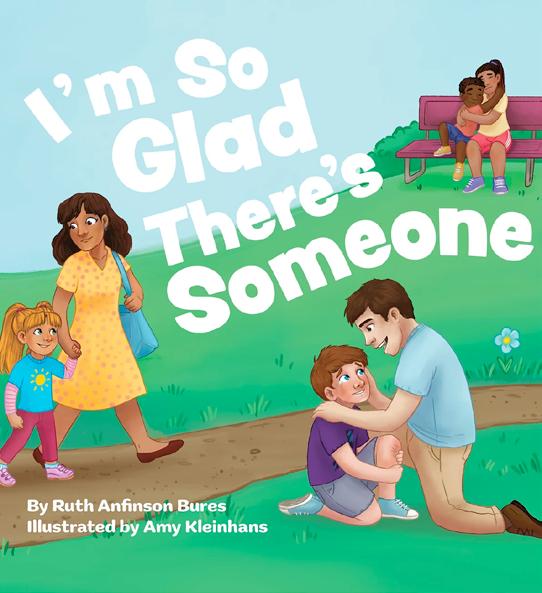

In the West, there are worse things to fear than bandits and outlaws. Demons. Monsters. Witches. James Crowley's sacred duty as a Black Badge is to hunt them down and send them packing, banish them from the mortal realm for good. He didn't choose this life. No. He didn't choose life at all. Shot dead in a gunfight many years ago, now he's stuck in purgatory, serving the whims of the White Throne to avoid falling to Hell. Not quite undead, though not alive either, the best he can hope for is to work off his penance and fade away.
Lord's Town is a refuge in a hungry world destroyed by climate change. Serving the soil is hard and cruel, but the seeds of humanity may yet survive in a young tender called Charlotte, and the friends she makes on her journey to discover Lord's Town's disturbing secret.
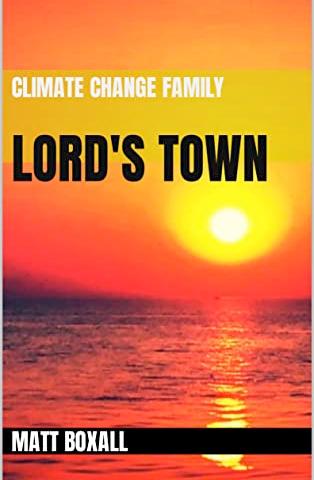
Here is the future we don’t want. A decade from now, Charlotte lives in Lord’s Town –a tyrannical horticultural fortress cobbled together from the remnants of the old world. A forever-hungry slave, clever Charlotte grows food in her sealed “greenhome” for the brutal elite. But after saving the citadel from disaster, the mysterious “Lord Himself” grants Charlotte the opportunity to embrace a new family… and uncover a horrifying truth.

A financial thriller and satire, Squeeze Plays is a contemporary morality tale set principally in New York and London. It centers on a bank CEO, a tabloid publisher, and a cunning Russian oligarch who steps in when the bank’s loan to the publisher goes sour. An intrepid financial reporter catches wind of the gambit and develops a front-page expose.
Professional reviewers have called the novel “captivating” and “thoroughly entertaining.”
In this sensuous debut poetry collection, Carolyn Grace explores meaning through body, image, form, music, myth, history, and language. To read these poems is to touch, taste, and hold love deeply in body and soul, to celebrate love, unflinching and painful and joyful.

Come, enter this magical, essential world. Let its music sound your depths, its precision sharpen your mind. Then prepare to leave changed, your self challenged and enlarged.
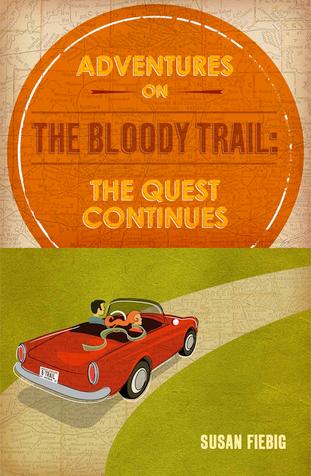
Adventures On The Bloody Trail is a travel guide that sends you to the best Bloody Marys in Wisconsin and so much more! If you're looking for those out-of-the-way places where good food and great views can be found, Fiebig's guide will take you there with Bloody Mary stops along the way. Filled with the history of the cocktail and instructions on how to score Bloodys using Fiebig's 50-point criteria, this is a fun-filled adventure guide to Wisconsin with a twist. As always, please take a designated driver with you on your adventures. Cheers!
www.ten16press.com
Available at Amazon and Barnes & Noble.
The color of your eyes will determine if you live or die!
Geophysicist Alex Cave discovers an alien spacecraft under the ice in Greenland, and is deceived by its artificial intelligence, who uses a woman named Pandora to represent it for what is about to happen. To protect her human slaves, she demands we kill every person with brown eyes, or she will destroy our entire species.

A fantastic ride, with thrilling scenarios, exhilarating situations, and nail-biting suspense, by this bestselling and award-winning author.
ENTER YOUR BOOK!

Shelf Media hosts the annual Shelf Unbound Best Indie Book Competition for best selfpublished or independently published book, receiving entries from May 1 to October 1 each year. In addition to prizes, the winner, finalists, and more than 100 notable books from the competition are featured in the December/January issue of Shelf Unbound.
.
Shelf Unbound book review magazine announces the Shelf Unbound Writing Competition for Best Self-Published Book. Any self-published book in any genre is eligible for entry. Entry fee is $100 per book. The winning entry will be selected by the editors of Shelf Unbound magazine.
To submit an entry, Apply Online at www.shelfmediagroup. com/competitions.
THE TOP FIVE BOOKS, as determined by the editors of Shelf Media Group, will receive editorial coverage in the Winter issue of Shelf Unbound. The author of the book named as the Best Self-Published book will receive editorial coverage as well as a year’s worth of full-page ads in the magazine.

The deadline for entry is midnight on October 1, 2024.
This Fall is a testimony of personal recovery told through a record of my daily walks in the woods over about a month’s time during the first stunning autumn after my wife Carol’s sudden passing. Our walks in the mazy sylvan spaces of Boyce Park just outside Pittsburgh had become over many years—what we talked about and witnessed together there—the foundation for our loving partnership. When she was no longer with me, I had to learn how to walk again, by myself of course, but with her still, in the way all the best people in our lives accompany us even when we’re not lucky enough to have them beside us. These vignettes, written spontaneously after each walk, before I went to work, opened a path for me to come to terms with my loss and with the new life that began to emerge day by day through the lustrous ongoing leaf fall.
ABOUT THE AUTHOR

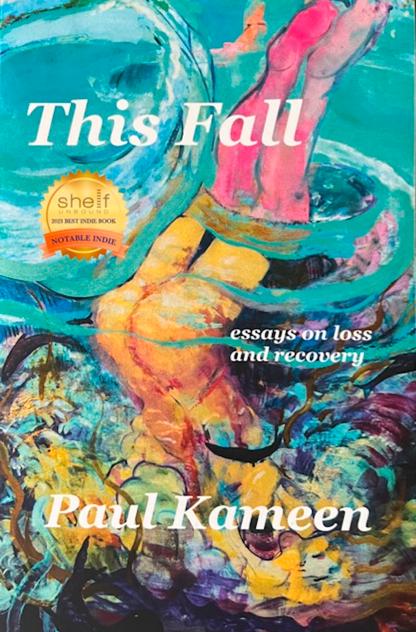
PAUL KAMEEN is the author of numerous books of poetry and personal essays—founded on his daily walks in the woods or by the water—and award-winning scholarly books (along with many scholarly essays) on teaching and poetics. His books are available in paperback, ebook, and audiobook formats at Amazon.com and paulkameen.com.
“ Brimming with heart, grace, and grit ... These stories from the Texas Storytelling Festival shimmer and sparkle like a radiant Texas sunset. Celebrate four decades of captivating storytelling, from true, heartfelt personal narratives resonating with raw honesty, to the rhythmic cadence of cowboy poetry echoing across the vast landscape, to tales taller than the towering Texas Sky and stretching wider than the expansive horizon. Each of these diverse stories reflects the gentle humor and generous spirit which define the Texan soul. Forty Years of Texas Storytelling is a celebration of tradition and the enduring legacy that is the Texas Storytelling Festival.”
—Alton Takiyama-Chung, Storyteller (altonchung.com) and Editor- In-Chief of The Story Beast, a quarterly e-Publication dedicated to the art of storytelling (storybeast.org)


The TSA Fortieth Anniversary Book Committee of Jaye McLaughlin, Hank Roubicek, Peggy Helmick-Richardson, and Chester Weems would like to make a special tribute to Parkhurst Brothers Publishers, for its part in development of Forty Years of Texas Storytelling. To them, this was more than a business project. Ted Parkhurst has been a longtime supporter of the Tejas Storytelling Association. He has provided exhibits, moderated sessions, and given overall support for many years, and not just to Tejas, but storytelling across the nation. Ted and his wife, Linda, the lead graphic designer on this project, have gone an extra mile to see this book through to completion. We appreciate them.
In these stories of fondly remembered people ... each exemplifying an enduring virtue— Donald Davis both entertains and inspires. As a frequent featured performer at the National Storytelling Festival (USA), he has revealed himself to be a deeply caring, wondrously talented storyteller. This book encapsulates his gentle wisdom and understanding of human nature.
“The wonderful Celtic scholar John O’Donahue once said, ‘Beauty is a homecoming.’ Donald Davis is a homecoming. There is nothing, I mean nothing, like witnessing Donald Davis tell a story. This collection takes me closer to that experience than I thought possible. His voice jumps from the page.”
—Kevin Kling, storyteller and author of The Dog Says How.
ABOUT THE AUTHOR


Donald Davis, a native of Waynesville, North Carolina, was educated at Davidson College and Duke Divinity School. A retired Methodist Minister, Davis tours the country, telling stories and conducting workshops. He is a regular headliner at the National Storytelling Festival and has been a featured storyteller at the Smithsonian Institution and the World’s Fair. He lives with his wife, Trish, on Ocracoke Island.
An Enemy Like Me, written by award-winning author Teri M Brown, is a powerful novel of love, war, and the complexities of family and identity.
How does a man show his love - for country, for heritage, for family - during a war that sets the three at odds? What sets in motion the necessity to choose one over the other? How will this choice change everything and everyone he loves?
Jacob Miller, a first-generation American, grew up in New Berlin, a small German immigrant town in Ohio where he endured the Great Depression, met his wife, and started a family. Though his early years were not easy, Jacob believes he is headed toward his 'happily ever after' until a friend is sent to an internment camp for enemy combatants, and the war lands resolutely on his doorstep.
In An Enemy Like Me, Teri M Brown uses the backdrop of World War II to show the angst experienced by Jacob, his wife, and his fouryear-old son as he left for and fought in a war he did not create.
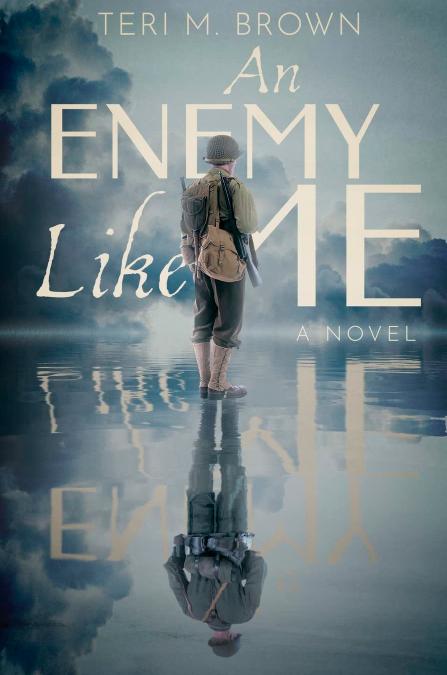
ABOUT THE AUTHOR

Born in Athens, Greece as an Air Force brat, Teri M Brown came into this world with an imagination full of stories to tell. She now calls the North Carolina coast home, and the peaceful nature of the sea has been a great source of inspiration for her creativity.
Not letting 2020 get the best of her, Teri chose to go on an adventure that changed her outlook on life. She and her husband, Bruce, rode a tandem bicycle across the United States from Astoria, Oregon to Washington DC, successfully raising money for Toys for Tots. She learned she is stronger than she realized and capable of anything she sets her mind to.
Teri is a wife, mother, grandmother, and author who loves word games, reading, bumming on the beach, taking photos, singing in the shower, hunting for bargains, ballroom dancing, playing bridge, and mentoring others.
In one moment, author Meagan O’Nan’s life changed. She suddenly found herself an outsider, both to the life she had known and to the life she did not yet know. A gay woman in Mississippi, she had been outed —and she wasn’t ready for it.
Feeling unworthy of the life she had always wanted, Meagan left her home and all that was familiar to her in order to find herself. At rock bottom, she screamed to the Universe, “I want to be loved the way that I love!” It was in this desperate moment that her answer came. It wasn’t what she had expected; it required her to break down all the walls she had built around her heart from her coming out experience. It required her to heal.
The only way for her to be Held And Free was to return to Mississippi and come out of her story.
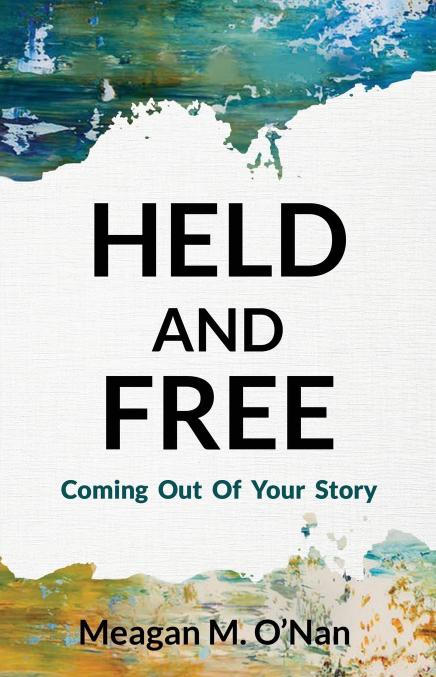

MEAGAN M. O'NAN
Meagan O’Nan is an award-winning author, keynote speaker, and vulnerable storytelling expert. She is the author of the award-winning book, “Creating Your Heaven on Earth,” “Courage: Agreeing to Disagree Is Not Enough,” and "Held And Free." Meagan is also a member of the Forbes Coaches Council where she produces regular content for Forbes.com.
Meagan has spoken to thousands of people at live events since 2008, including alongside internationally recognized spiritual leaders such as don Miguel Ruiz, author of the bestselling book, “The Four Agreements,” and she has appeared multiple times in local and national media. Meagan even received a personal note from Desmond Tutu after hearing a talk of hers on forgiveness. Meagan is passionate about creating deeper connections through speaking, workshops, and through her executive speaker coaching. Her approach is unique in that she uses storytelling as a way to overcome differences and generate healing.
Chris, Anne, Fiona, and Lauren were inseparable friends while earning MFAs in Creative Writing. Years later they've grown apart and are surprised to receive an invitation to a reunion from the fifth member of their group, Eric, a successful screenwriter. Eric flies them to a remote lake villa where he reveals his new obsession: their group is a modern version of the famous one from Villa Diodati in 1816, the iconic literary event during which Frankenstein was created. Chris and Anne are their Percy and Mary Shelley. The free-spirited artist Fiona is like Claire Clairmont. Instead of Dr. Polidori, they have Lauren, PhD in Victorian History. That leaves Eric, the Hollywood player, as Lord Byron. Like Byron, Eric proposes they write ghost stories, an homage to their famous predecessors. Laughter, creativity, and reminiscence are soon replaced with deceit, suspicion, and fear. What is the self-proclaimed clairvoyant Fiona seeing and hearing? Why does Eric lie? What does the creepy old housekeeper know about their host? Tensions grow as relationships are tested until a shocking discovery reveals the true intention for the reunion.


My author career began with a twisted fairytale retelling about the unknown 8th dwarf which turned into a trilogy of such tales. Over the years I've received book awards and industry recognition for which I'm very grateful. I'm currently working on a business plan for an educational company that uses the fairytale trilogy, TaleSpins, as curriculum to teach things like empathy and anti-bullying.
I've written marketing materials for the merch divisions of Disney, DreamWorks, 20th Century Fox, and Universal, but I gave all that up because I was tired of selling people junk that was just going to end up in a landfill. Before I was a writer, I was a preschool teacher and college professor, two positions I found disconcertingly similar.
Trouble lurks in the Lowcountry of South Carolina in the guise of a family feud, forbidden love, and a journalist hell-bent on uncovering corruption.
Meet Zingle Caddell, who doesn't regret the destruction left in his wake so much as he is annoyed by it. Figuring no man can continue to have such bad luck, Zingle is waiting for his fortunes to improve. He knows what he likes--alcohol, women, and family, in about that order--and he'll continue on with them as before. That is, until he's surprised by a violent encounter with his match, Jessie Bell, when her stepdaughter doesn't come home as expected. Bad blood is rampant between the Bells and the Caddells by the time Jessie's daughter and Zingle's nephew unwittingly fall in love. Forbidden to see one another, the couple must decide how much they're willing to risk. Is it worth being ostracized from their families? Destitution? Their very lives?


Sophia Alexander writes character-driven historical fiction that grips readers' emotions and surprises them with unexpected twists. A Lowcountry native, she is the award-winning author of the Silk Trilogy. Her writing is inspired by historical fact, genealogical investigations, intuitive guesswork, and fanciful romanticizations. Sophia is a graduate of the College of Charleston and Bastyr University. She lives with her husband in Savannah, GA. Visit authorsophiaalexander.blogspot.com to sign up for her newsletter.
Midnight in Syria is a Pentagon-approved, real-world story that will keep you on the edge of your seat until the very end.
The next Book in the Special Forces Connection series takes you to the far deserts of the Middle East. Dakota is an intrepid journalist set on making a name for herself, and while she hoped to sneak into Syria to write a story of a lifetime, she never expected to get trapped there. With no one to turn to, and the Civil War unfolding in front of her very eyes, the only chance of escape is with a mysterious Special Operator who is full of intrigue and guile - but it might already be too little too late.
Dive into this real-world riveting tale of courage, sacrifice, and resilience, that takes you on the ultimate journey, while following the delicate love story of two people pushed to their limits. Contrasted by the painful realities of war, politics, and lives in between, this book is guaranteed to strike at the heart and mind of every reader, and will immerse them into the complexities of the decade long Syrian civil war that has already claimed more than half a million lives.


JACEK WALISZEWSKI
Jacek committed his first crime when he was three months old smuggling Solidarity propaganda paperwork to Polish resistance leaders in prison. His father was the cofounder to the 1980s antiCommunist Solidarity movement, and his family had a choice, get traded to the Soviet's or become political refugees. Two pieces of luggage later, they made it to America. His Dad, Leszek Waliszewski, was the first Solidarity Member to brief Congress, and his parents worked multiple jobs to make ends meet.
Jacek is now a Dad, a writer, and a Special Forces Green Beret. He's traveled the world, run with the Bulls in Pamplona, and while deployed, earned his bachelor’s degree in International Relations from AMU. He then went on to earn a Graduate Diploma in Strategy and Innovation from the University of Oxford.


Across the United States, National Library Week is celebrated the second week in April. Originally, this week was only observed in the U.S., but the idea has spread across the world. This week is a time to promote and support libraries.
As a librarian at an intermediate school, libraries have a special place in my heart. They are where we find books to read, but they are also where we find history. In my own town, our local public library might not have existed if it wasn’t for Andrew Carnegie’s donation, so even in the construction of a library, there is history.
When I look beyond my hometown, I remember visiting the Lilly Library on the Indiana University campus as a student. This historical library contains such things as George Washington’s letter accepting his presidency, transcripts of Ian Flemin’s James Bond novels, and locks of Edgar Allen Poe’s hair.
At that time, though, I didn’t think about libraries around the world, but I must say there are some interesting ones if you ever have the chance to visit one of the countries where one of these libraries is located.
Back in 1679, the Strahov Monastery Library was established and has preserved thousands of books that date back to the 16th century. Originally, the library was part of the Strahov Monastery, which was founded in 1149. Inside as you explore, you will find gilded ceilings and carved bookshelves. Finished in 1779, Philosophers’ Hall houses a cabinet filled with rare items, like different animals, mock fruits, and minerals.

The Stuttgart City Library was designed by Germanbased Yi Architects, basing their design on the Patheon in Rome and taking a minimalist view. The only color you will see in this library is the spines of the books sitting on their shelves. All the walls of this nine-story building are white, and at night, the blue lights give it a unique look. Besides the library, you will find meeting rooms, cafes, and a rooftop space where readers can read all night if they want. The library has a designated area for readers to enjoy after hours as well as a collection of books available.



Located on the campus of Yale University in New Haven, Connecticut, the Beinecke Rare Book and Manuscript Library preserves rare books and documents as its name reflects and makes it one of the best libraries in the world. The library uses soft lighting and glass shelves in its preservation of the books. You’ll find works from authors like Joseph Conrad, Rudyard Kipling, and Sinclair Lewis. The building itself is designed to preserve these older writings from the past. Inside, you can view one of forty-eight copies of the Gutenberg Bible.
Nicknamed Ireland’s “copyright library,” the Trinity College Library houses over six million books. While the library is four separate buildings, the interior of the Old Library has a 213-foot-long wooden chamber that has a barrel-looking ceiling, perfect for housing some of the older books, like The Book of Durrow and The Book of Kells.


The New York Public Library is located in one of the largest cities in the United States—New York City—and is the third largest in the world. It houses almost fifty-three million items. The Rose Main Reading Room is so massive that it has forty-two long wooden tables for visitors to use. Outside the library, two stone lion sculptures stand, completed in 1911. If you would like to do a free one-hour tour of the library, make sure you visit before 11 a.m. any day but Sunday. The library has been featured in such movies as Ghostbusters and The Day After Tomorrow. and the act of creation by a master of the short-story form.
In 2002, the Bibliotheque Alexandria reopened after the original one, the Library of Alexandria, was destroyed by a fire nearly 2000 years ago. The original building was considered one of the Seven Wonders of the World. Today, the new library is shaped like a disc, and the reading rooms face the Mediterranean Sea. It houses a planetarium, academic centers, and four museums, and you can learn about Egypt’s history through multimedia presentations.


Located on the campus of Oxford University, the Bodleian Library was established in 1602 and is one of Europe’s oldest libraries. It has 13 million printed items, and among those, you will find Shakespeare’s First Folio from 1623 and four copies of the Magna Carta. The building is probably one you will recognize, not only because it’s circular, but because it’s popular in the movies. If you’ve seen Young Sherlock Holmes or the Harry Potter movies, you’ve probably seen this library.
Dating back to 1857, the George Peabody Library was founded by George Peabody as part of the Peabody Institute. Today, it is part of Johns Hopkins University and contains almost 300,000 books from science to religion to British art. The atrium stands 61 feet tall and has cast-iron balconies and gold scalloped columns, creating a unique space for studying and teaching.


As the most modern library on the list, the Beitou branch of the Taipai Public Library helps not only visitors but the environment. It is an eco-friendly library that runs water reclamation and has natural ventilation and solar panels. Its roof slants to allow the two-story building to collect and use rainwater. The library houses 20,000 books in Chinese and English. When visiting, you’ll feel as though you’re in a treehouse.
In 1822, three Portuguese immigrants originally founded the library and planned to bring literary masterpieces and traditions to the newly independent Brazil. However, the three-story library didn’t open to the public until 1887. It contains the most valuable and biggest collection of Portuguese literature, the only one outside of Portugal where you’ll find nearly 400,000 singular works and rare manuscripts. enjoy after hours as well as a collection of books available.

...... As I searched for the top 10 libraries, it was hard deciding which ones to add to the list, so I added two extras as honorable mentions. Of course, we can’t forget the Library of Congress, but the other one is interesting, too.......
Completed in 1897 and situated in Washington, D.C., this library is the largest in the world. As the national library, it houses the largest number of books—more than 61 million manuscripts, 32 million books, 14 million prints and photos, six million pieces of sheet music, and a rough draft of the Declaration of Independence. It also has the most shelf space of any library in its three buildings.


This library is located in the former mansion of Nawab Hamid Ali Khan, who ruled in India from 1889 to 1930. It has a collection of Indo-Islamic works from Islamic calligraphy and manuscripts, including the original first translation of the Quran. It also houses 60,000 books and 17,000 other manuscripts in various languages, such as Turkish and Arabic.
In my research for the top ten must see libraries around the world, I discovered other libraries that were just as beautiful or held historical items. Before you begin your travels, make sure you check for a unique library. You’ll never know what history you might discover on your journey.




Esther Goldenberg is an author, speaker, and educator from Chicago who currently lives in Israel. Along with multiple books for children, her work includes A Story Every Week: Torah Wisdom for Today’s World, which helps readers find relevance in the Torah, and The Out-of-the-Box Bat Mitzvah: A Guide to Creating a Meaningful Milestone, a guide to creating a joyful and significant ceremony. Her most recent work, The Scrolls of Deborah, released in February. Booklist said of the novel, “For any who enjoy a feminist Jewish perspective on the biblical era, this start to Goldenberg’s Desert Songs Trilogy is not to be missed.”
THE SCROLLS OF DEBORAH IS A RETELLING OF THE BOOK OF GENESIS. WHY AND HOW DID YOU CHOOSE THE BOOK OF GENESIS? WHERE DID THE ORIGINAL INSPIRATION FOR THE STORY ARISE?
EG: I was intrigued by a line in Genesis that mentions the death and burial of Deborah, Rebekah’s nursemaid. I feel that line holds a great mystery. Why write about her death when nothing about her life was mentioned? Who was this woman whose death was recorded in the bestselling book of all time – but not her life? This line sparked a huge curiosity in me. And because she was Rebekah’s contemporary, Deborah and her scrolls give us a peek into the lives of the matriarchs and patriarchs of Genesis.
THE NOVEL IS THE FIRST IN THE DESERT SONGS TRILOGY. DID YOU ALWAYS SET OUT TO WRITE A SERIES, OR DID THAT ARISE ORGANICALLY? WHAT CHALLENGES DID YOU FIND IN WRITING A SERIES, AND HOW DID YOU WORK THROUGH THEM?
EG: I initially thought it would be a series of two books. During the creative writing process, it became clearer there would be three books. In writing three books with some overlapping characters, one challenge I faced was to make sure that there was consistency across the longer storyline of the entire series. I haven’t finished writing the third book yet, so it’s easy for me to get a little nervous about what might come up there that needs to be aligned with The Scrolls of Deborah, which is in its final version in print.
A TRILOGY MAKES SENSE, KNOWING THAT THE NUMBER THREE REPRESENTS DIVINE PERFECTION IN THE BIBLE. THE NOVEL IS ALSO DIVIDED INTO SECTIONS—SCROLLS—THAT NUMBER SEVEN, ANOTHER SIGNIFICANT BIBLICAL NUMBER. WHEN IN THE WRITING PROCESS DID YOU DECIDE ON USING THREE AND SEVEN? DO THOSE NUMBERS
EG: Some Biblical numbers that come up in the novels are three, seven, ten, and forty. I’ve always been intrigued by numbers in the bible. I think we use numbers conversationally in ways that wouldn’t make sense to people of different times, or perhaps different cultures. An example is the phrase: “if I’ve told you once, I’ve told you a thousand times.” When saying that, neither the speaker nor the listener thinks that the thing has been said exactly 1,000 times. The number 1,000 is chosen here to emphasize something. Throughout writing The Desert Songs trilogy, whenever I have an opportunity to use a number, I think there’s an opportunity to understand that number as something beyond its numerical value.
THE STORY FEATURES REBEKAH, WIFE OF ISAAC, AND DEBORAH, HER NURSEMAID. THOSE FAMILIAR WITH THE OLD TESTAMENT MIGHT REMEMBER REBEKAH FOR DECEIVING HER HUSBAND WITH RESPECT TO JACOB, BUT HER ACTIONS ARE ALSO SEEN AS CARRYING OUT GOD’S WILL. HOW DID YOU GO ABOUT CRAFTING REBEKAH’S CHARACTER SO THAT SHE’S WELL BALANCED AND ENGAGING, A CHARACTER WHO DRAWS READERS IN
EG: Thank you for that question. When writing Rebekah and all the other characters, one main goal I had was to portray them as more rounded people. There are so few stories about Rebekah in the Bible that it’s easy to think of her only as one thing or another. Maybe as manipulative, or deceitful for her trickery. Maybe as obedient for perpetuating the plan. Whatever it is, it’s a character judgment based on one decision, not on a whole person – someone who made many decisions and took many actions in her life. This exact issue comes up in the book and Rebekah judges herself based on this one decision. I think all too often, we judge ourselves based on one choice, and even more unfortunate, we judge others based on one choice or action or belief rather than looking at the whole person. So when writing the characters, I wanted to tell more than just the stories that stand out. I wanted there to be stories about their daily lives, their joys and likes and dislikes, their challenges and their growth moments. I hope this gives readers the chance to think more about the characters as multifaceted – just like people today.
I LOVE THAT DEBORAH IS THE STORYTELLER BECAUSE YOU’VE GIVEN VOICE TO A WOMAN WHO DIDN’T HAVE
MUCH IN THE ORIGINAL BOOK OF GENESIS. CAN YOU COMMENT ON THAT?
EG: Other than her death, there are no stories about Deborah in the Book of Genesis. For me, this left infinite possibilities to my imagination.
ON THE FIRST PAGE OF THE STORY, DEBORAH IS SPEAKING TO JOSEPH, THE SCRIBE, SAYING, THESE SCROLLS WILL BE YOUR EDUCATION—AND MY LEGACY. DO YOU CONSIDER THIS TRILOGY EDUCATION FOR YOUR READERS AND YOUR LEGACY?
EG: Writing this trilogy has been educational for me. Connecting with the characters and scenes and the moments in the book has opened my eyes and broadened my experiences of relationships, core values, flora and fauna, and even scents that are ongoing parts of both the past and the present. I hope it will do the same for readers.
CAN WE TALK A LITTLE ABOUT THE WORD FEMINIST? WHAT DOES THAT WORD MEAN TO YOU? WHAT DO YOU THINK FEMINISM LOOKED LIKE IN BIBLICAL TIMES? WHAT MESSAGE DO YOU HOPE TO SEND REGARDING FEMINISM WITH THIS BOOK AND THE SERIES?
EG: Feminism is the simple idea of men and women having equal rights. I don’t think the men and women of biblical times had equal rights. I
don’t write stories that pretend that the women in the books had the same rights as the men, but I’m coming to the table with some stories from a more feminine lens. This is more holistic, encompassing a fuller view of life and tribe, and less linear. I’ll be thrilled if reading The Scrolls of Deborah and The Desert Songs Trilogy opens the readers’ minds to the idea that we never know the whole story, whether that’s a story in a book or a story in someone’s life. Perhaps we can approach these missing pieces with curiosity and compassion.
THE BOOK HAS THEMES OF COMMUNITY AND CONNECTION AND THE POWERFUL BOND THAT WOMEN CAN SHARE. WHAT COMMUNITIES HAVE YOU FOUND CONNECTION IN? DO ANY WOMEN IN PARTICULAR INSPIRE YOU AND YOUR WRITING?
EG: I’ve been lucky enough to find wonderful connections in chanting circles and drumming circles, sharing circles, and storytelling circles. I notice these all have circles. I think there’s something very powerful about being able to see each other and know that we’re all pieces of those circles. We’re all connected, we all support each other, and we’re all valuable and vulnerable – and hopefully appreciated. A person who shows up to such a circle with openness and compassion is inspiring.
WRITING A NOVEL LIKE THIS IN A PATRIARCHAL WORLD CAN GIVE RISE TO A PLETHORA OF EMOTIONS. HAVE YOUR EMOTIONS RUN THE GAMUT? AT ANY POINT, DID YOU HAVE ANY RESERVATIONS ABOUT PURSUING PUBLICATION?
EG: I often have a plethora of emotions. When I do, I try my best to follow the example in the book of taking deep breaths and reminding myself of the interconnectedness of everything. The Scrolls of Deborah offers a non-patriarchal way of experiencing divinity that many people welcome. I felt from the beginning that it would be good to have a team of people – or a tribe of people – to bring this trilogy into the world. As a woman author in 2024, I have the privilege and honor to work with a publishing

company that’s raising the volume on too-often silenced voices.
WHAT’S THE STATUS OF THE OTHER BOOKS IN THE DESERT SONGS TRILOGY? ANY OTHER PROJECTS PERCOLATING?
EG: The Scrolls of Deborah is now available in paperback, ebook, and audiobook. Seventeen Spoons is being polished up for release in a matter of months, and I’m still in the process of writing the third book. New projects arise whenever I get to lead workshops and circles that center around the themes in The Scrolls of Deborah. Each circle is like a new project because there are different participants every time. Together we create experiences of wonder, joy, and of course, connection.
The Scrolls of Deborah transports us to the awe-inspiring landscapes of the past and uncovers the intertwined lives of Rebekah, a revered matriarch in Judaism, and her devoted handmaiden Deborah. In this mesmerizing tale, their strength, wisdom, and love take center stage, shaping their destinies amid a world steeped in tribal tradition.
With poignant vulnerability, The Scrolls of Deborah, a work of Biblical fiction and the first installment of the Desert Songs Trilogy, illuminates the hidden stories of these remarkable women, whose pivotal roles have often been overshadowed. Against the backdrop of the desert and the opulence of palaces, the narrative weaves a tapestry of captivating tales. Each page reveals stories filled with heartbreak and inspiration, leaving an indelible mark on the very fabric of religious thought.
NEW TO SHELF UNBOUND!

Shelf Media Group's digital young adult community designed to connect readers with YA authors and books.
The Crew by Michael Mohr offers a gripping glimpse into the tumultuous world of adolescence, rebellion, and the allure of punk rock culture. Set in Southern California in 2000, the novel follows Jack Donnigan, a sheltered 16-year-old sophomore at St. Andy’s Prep, as he finds himself drawn into the renegade punk rock clique known as The Crew.
Led by the charismatic and cunning Cannonball, The Crew provides Jack with a taste of freedom and adventure that he has never experienced before. However, Jack's newfound sense of independence soon leads to conflicts within the group, particularly when he becomes romantically involved with Sarah, Cannonball's chosen girl.
As Jack's rebellion against authority escalates, tensions rise both within The Crew and at St. Andy's Prep. The faculty, determined to dismantle the group's influence on campus, target Jack as the perceived leader, setting off a chain of events that will test his loyalty, courage, and resilience.
Through Jack's journey of self-discovery, Mohr expertly captures the spirit of the late nineties punk rock scene, complete with its anarchic ethos, rebellious spirit, and wild excesses. The novel's fast-paced narrative and authentic portrayal of teenage angst make it a compelling and immersive read from start to finish.
With its richly drawn characters, evocative setting, and poignant exploration of themes such as friendship, identity, and the search for belonging, "The Crew" is a standout coming-of-age story that will resonate with readers of all ages. Mohr's vivid prose and keen insight into the human condition make this novel a mustread for anyone who has ever felt the pull of rebellion or the intoxicating allure of youthful freedom. Highly recommended.

Young adult fiction continues to become one of the most popular genres – mostly for adults. Join us each issue to find your next YA read.


or another since I was a kid. I first got into writing because I’m a visual person who can’t draw. The only way for me to illustrate the images in my head was to describe them with my words, so I was writing fiction as early as grade school.
Never miss an issue!
Throughout high school and college, I focused on studying history, so most of my writing was nonfiction essays. But a trip to Hungary in my twenties reawakened my creative-writing gene. The beauty of Budapest inspired me deeply, not only with what I could see with my eyes and capture with a camera but also with how that city made me feel. When I returned home, I started writing it all down using fictional characters. Nothing ever came of that Hungary piece, but the genie was out of the bottle, and I’ve been writing moody romance ever since.
SIGN UP FOR A FREE SUBSCRIPTION TO SHELF UNBOUND MAGAZINE.
and writing love stories with happy endings, so I naturally gravitate toward the genre.

Within the romance universe, there’s a great deal of variety when it comes to subgenres and tropes. I’ve written a few paranormal romance short stories, and I’ve finished the
Someday, I’ll branch into more areas of Romancelandia, I’m sure, but I’m not particularly interested in exploring outside
WHAT ABOUT THE
POSITIVE” BOOKS. WHAT DOES THAT MEAN, AND WHY IS WRITING SEX-POSITIVE STORIES IMPORTANT TO YOU?
SUBSCRIBE
CB: There are a lot of long-held taboos in our culture pertaining to sex, particularly
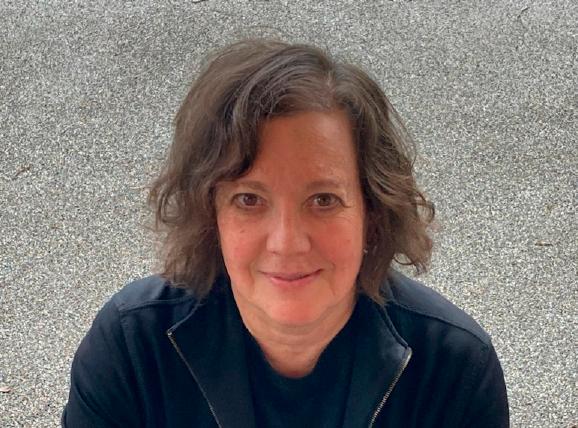

Stacey Levine is no stranger to writing. She is the author of “five books of uniquely original voicedriven fiction” and has had work featured in The Brooklyn Rail, The Fairy Tale Review, The Iowa Review, Tin House, and Yeti, among others. Her stories have been longlisted and shortlisted for multiple awards, including The Story Prize, The Washington State Book Award, and the PEN Award. She was also the recipient of a Genius Award from Seattle’s The Stranger newspaper. In this interview, she talks about her forthcoming novel, Mice 1961, which will be released March 19 by Verse Chorus Press.
MICE 1961 “RECOUNTS A PIVOTAL DAY IN THE FRAUGHT RELATIONSHIP OF TWO ORPHANED SISTERS THROUGH THE EYES OF THEIR OBSESSIVELY OBSERVANT HOUSEKEEPER.” HOUSEKEEPERS HAVE OFTEN BEEN VIEWED AS SECONDARY, EVEN INFERIOR, BY MANY IN SOCIETY. CAN YOU COMMENT ON YOUR CHOICE TO HAVE GIRTLE SERVE AS THE POINT OF VIEW CHARACTER?
SL: Girtle evolved as I worked
with her. She’s a complex person who comes from a disturbing place. Through the course of the book, she’s happy, even elated, to have left that place and to have found the sisters. In the “now” of the novel, which is a few months during 1961, she’s about 30, but younger than that emotionally, and she tolerates unkindness amazingly well. Her life and independence have just begun— the upshot is that her future is ahead of her and outside the novel’s perimeter.
A DESCRIPTOR LIKE “OBSESSIVELY OBSERVANT” INTRIGUES ME. WHAT MAKES GIRTLE THAT WAY? DO YOU THINK IT HELPS OR HINDERS HER ABILITY TO TAKE CARE OF THE GIRLS?
SL: The older sister, Jody, bosses poor Girtle around like hell and worse, and does the same to Mice, the younger sister. Though Girtle is meek, one of her strengths is her passionate habit of close observation. It’s sort of all she has.
BEING OBSERVANT CERTAINLY IS AN ADVANTAGE FOR WRITERS—IS THAT A DESCRIPTOR YOU WOULD USE
FOR YOURSELF?
SL: If I’m a novelist, it better be!
WRITER GARIELLE LUTZ SAID OF YOU AND YOUR WORK, “FEW WRITERS ARE EVER THIS ALIVE TO LANGUAGE AND THIS TENDER TOWARD THE LOT OF THE VIVIDLY DIFFERENT AMONG US. I AM IN AWE.” WOULD YOU CONSIDER YOURSELF “VIVIDLY DIFFERENT”? HOW FAR DO WE HAVE TO GO AS A SOCIETY TO CELEBRATE THOSE WHO ARE “VIVIDLY DIFFERENT”?
ABOUT THE BOOKS
SL: I am not vividly different, no, but I’m a little bit different, sure, just as many people are. Of course we should rejoice in difference. But in a better world, we would not need to do that because there would be no cruel emphasis on difference.
There’s something broken and unevolved about humans where we habitually group off and exclude other people. Mice 1961 is about that, mostly. The younger sister (whose nickname is “Mice”) has the genetic condition of albinism and is bullied pretty badly by the whole neighborhood, even elders! So as the writer, it was my job to explore that.
LET’S TALK A LITTLE ABOUT THE TWO SISTERS, JODY AND MICE. DID THESE CHARACTERS ARRIVE FULLY FLESHED AS SISTERS? WHAT MADE YOU CONCENTRATE ON A STORY ABOUT TWO SISTERS IN PARTICULAR? WHAT ABOUT THE SISTER BOND IS SO APPEALING TO WRITE ABOUT?
SL: For me, writing’s 90 percent process, meaning that you write from the dust up. In writing, you discover the particulars. No, they did not arrive to me developed in the least! They were dinky little dolls when I first saw them. I knew their potential. It took me a long time to lay down the minutia of their relationship. Losing their mother has warped their relationship, and it’s horribly co-dependent. But there’s a positive side to their closeness.
IN AN INTERVIEW WITH JEFF VANDERMEER, YOU STATED THAT YOUR STORIES OFTEN START FROM “EVOCATIVE MUSIC” OR “MOMENTS OF HUMAN CONNECTION.” WHAT SPARKED THE IDEA FOR MICE 1961?
SL: I was sitting on my couch and viewed a Facebook photo of a friend wearing a striped, blue sailor
shirt, smoking, and appeared, in my romantic view, like a Cuban revolutionary soldier from the twentieth century. I thought about the passion of the pro-Castro supporters who wanted to take their country back from a dictator, and conversely, the anger of the proBatista supporters to crush Castro. That was how the book started, though it veered away from the political struggle and now focuses on the sisters. The novel does spend some time on the tensions that arose in South Florida just before the Bay of Pigs incident.
HOW MUCH RESEARCH DID YOU HAVE TO DO IN ORDER TO CAPTURE THE WORLD THAT JODY, MICE, AND GIRTLE LIVE IN?
SL: I did a lot of research. I received a small grant from Seattle Artist Trust to travel to Florida and visit Miami’s older neighborhoods for a few days. I did lots of notetaking and got a sense of the old neighborhoods’ layouts and all the crazy canals winding around the business districts. I also watched any old movie I could find set in 1960s Miami.
THE NOVEL’S THEMES
INCLUDE SEPARATENESS AND OTHERNESS, WHICH SHOULD RESONATE WITH MANY READERS. IN TODAY’S WORLD, INSTEAD OF SEEING HOW ALIKE WE ARE, MANY CONCENTRATE ON THE DIFFERENCES, REINFORCING THE IDEA OF SOMEONE AS “OTHER,” OFTEN IN A DEROGATORY MANNER. WHAT MESSAGE ARE YOU HOPING YOUR READERS WILL TAKE AWAY WITH A FOCUS ON THESE THEMES?
SL: I do not espouse one particular message in the book, though I think the book embodies a tender feeling. Aside from that, the story asks questions. There’s a branch of philosophy called the Philosophy of Personal Identity that I’m fascinated with. It asks questions like If you are a wholly different person to what you were decades ago, what exactly has persisted in you between then and now? Or If we are all physically formed of the same fundamental elements such as carbon and oxygen, what precisely makes us different from each other? These kinds of ideas shaped parts of this book.
YOU’VE BEEN WRITING FOR A LONG TIME. HOW HAVE YOU
EVOLVED AS A WRITER? HOW DOES MICE 1961 FIT INTO YOUR OVERALL BODY OF WORK?
SL: If you keep working, you can’t help but evolve. Mice 1961 is longer and may be more dynamic than my previous works, which often describe people or places that embody everlastingness—not too much change occurs. And also, before this, I’d never written a long, ongoing party scene!
YOUR WORK HAS GARNERED SEVERAL DISTINGUISHED AWARDS. IS THERE ANYTHING YOU FEEL YOU HAVEN’T ACCOMPLISHED BUT WOULD LIKE TO DO SO?

SL: As I’m sure you know, literary fiction writers and poets write in order to be able to write, right? Well material recognition of some kind is very important for any artist, but the goal is really to be living the life and delving into work all the time vs. collecting acrylic award blocks. I’m the type who gets too nervous or anxious if I don’t have a project ongoing, a place where I can go and sit down and tinker.
SL: We live in an era of very bad, reprobate, and callous behavior. It’s like a common denominator. Wouldn’t it be nice to write about people and nations that are good and sweet to each other?
Mice 1961 recounts a pivotal day in the fraught relationship of two orphaned sisters through the eyes of their obsessively observant housekeeper. Will Jody be able to cope if her younger sibling Mice, subject to constant harassment in their community for her unusual appearance and habits, leaves home? How will their all-watching companion convey her fierce attachment to them both? When they cross paths with an unsettling stranger at a neighborhood party, all three women are driven toward momentous changes.
Set in southern Florida at the peak of Cold War hysteria, Mice 1961 is a powerful meditation on belonging and separateness, conformity and otherness.




Lindsay Merbaum is the author of the feminist horror novel The Gold Persimmon, and her short fiction has appeared in multiple outlets, including PANK, The Collagist, Epiphany, Gargoyle, Day One, and more. She also writes interviews and essays, which have been published in Bitch Media, Bustle, and The Rumpus, among others. Lindsay is high priestess of home mixology, a skill she translated into a column (now retired) for Electric Literature called “Booktails from the Potions Library.” In this interview, she talks about defining feminist horror, creating memorable characters, and supporting diverse voices.
TELL US A LITTLE BIT ABOUT YOUR BACKGROUND AND HOW YOU CAME TO BE A WRITER. WAS IT SOMETHING YOU ALWAYS PLANNED ON BEING? DID YOU ENCOUNTER ANY STRUGGLES THAT MADE YOU DOUBT YOURSELF?
LM: I think as soon as I understood what books were, I wanted my name on one. The doubts came much later. In my twenties, the doubt took the form of, Am I writing enough? Then it turned into, Why don’t I have a book yet? And now it’s, Will I ever
reach a wider audience?
IN AN INTERVIEW WITH THE RUMPUS, YOU STATED THAT “MYTH-MAKING IS AT THE HEART OF [YOUR] WORK,” AND YOU’RE A “MYTHOLOGY NERD.” WHAT DRAWS YOU TO THE MYTHS, AND HOW DOES YOUR WORK REFLECT THE MYTHS?
LM: At a very young age, I started connecting with Greek myths. Somehow I understood that absorbing these stories, and being able to remember them, was part of something larger.
I recently read Emily Wilson’s new translation of The Iliad, and I was struck by a lack of glorification in a story of war, how minor characters were humanized with details about their lives, and how explicit gore did not seem thrilling, but sad and pointless. These epics are often songs of grief, exploring the inevitability of fate, which is really just life’s indifference. The themes are universal, and therefore timeless.
YOUR WORK IS CATEGORIZED AS “FEMINIST HORROR,” WHICH YOU HAVE DEFINED AS “AN EXPLORATION OF
FEMINIST STORIES THROUGH THE TROPES OF HORROR.” HORROR MEANS DIFFERENT THINGS TO DIFFERENT PEOPLE, SO WHAT DO YOU CONSIDER HORRIFIC? WHAT IS IT LIKE TO PLACE YOURSELF IN THE PROPER HEADSPACE TO WRITE HORROR, CONSIDERING THE VULNERABILITY IT REQUIRES?
LM: Feminist horror is a useful term because it speaks to the terror inherent in so much literature—it’s a lens through which to look at these narratives. The intro to feminist horror class I teach, for example, uses Beloved and The Handmaid’s Tale as our primary texts, books that are typically labeled literary fiction, or even sci-fi, but never horror. And yet both are rooted in absolute horror, derived from history. So much of that horror is also experienced in and around the body. At the heart of feminist horror is the body, the inescapable physicality that makes us vulnerable as unequal or lesser beings.
I’ve often said to readers that my horror is no more horrific than real life. Meaning the experience of being a woman, a Jew, a queer person, and a witch in this age naturally lends itself to horror. Fictional horror
reconstitutes those feelings and experiences in potentially magical or surreal ways that are nevertheless grounded in lived experience. That can be hard to write, but there’s power in it.
THE CHARACTERS YOU CREATE, WHETHER IN YOUR NOVEL, THE GOLD PERSIMMON, OR IN YOUR SHORT STORIES, ARE MEMORABLE AND COMPLEX. WHO INSPIRES THESE CHARACTERS? WHAT MESSAGE DO YOU HOPE THESE CHARACTERS SEND?
LM: Thank you! Some say all characters are composites of the writer. I think there’s truth to that, in the sense that all fiction is a reconstitution of the writer’s experience.
Fiction is also where I let loose the unseen aspects of myself, the unknowable I can only express through storytelling. Of course, I’m also influenced by real-life characters, such as the many complicated women I have known. Right now, I’m focused on flawed characters who might be angry, selfish, or make bad decisions. You know, as humans do.
YEARS, THE PUBLISHING INDUSTRY HAS PUT SOME EFFORT INTO SUPPORTING DIVERSE VOICES, WHICH INCLUDES THOSE OF THE LQBTQIA COMMUNITY. IN YOUR OPINION, WHAT ARE WE GETTING RIGHT? WHAT ARE WE GETTING WRONG?
LM: Publishing is such a feral beast. No one knows what will sell, the big presses are getting harder and harder to break into, while also becoming more risk averse, and queer lit is by nature risky. As a result, more small presses are cropping up, more writers are self-publishing or hybrid publishing. A lot of voices from the margins are coming into focus. That said, the Big 5 have produced some incredible queer books in the past few years. But writers of color are still hugely marginalized, not to mention queer writers of color. My hope is the indie presses will gain further strength and become a powerful bastion of the most diverse, most interesting voices.
IN ADDITION TO WRITING, YOU’RE AN EXPERIENCED MIXOLOGIST. HOW DID YOU BECOME INTERESTED IN MIXOLOGY? DOES IT FEED THE SAME CREATIVE SIDE OF YOU AS WRITING, OR DOES IT TARGET SOMETHING DIFFERENT?
LM: Mixology is a physical, tangible art, which provides a wonderful counterbalance to the solitary and cerebral act of writing. I’ve enjoyed painting for similar reasons, but the temporal nature of drinks is significant too.
I started out as a hobby mixologist. At that time, I lived in San Francisco. I was dating my spouse, and we went to a lot of delightful cocktail bars. I was excited about what I was tasting, so I started trying to make my own drinks at home. I started out with champagne cocktails, then branched out to making up my own recipes, but I didn’t really begin to take it seriously until I crafted a set of six cocktails and mocktails to accompany the release of my first novel, The Gold Persimmon. It was a lot of work to record and quantify recipes, complete with photos, but I also found it to be a great deal of fun. I volunteered to make drinks for other authors’ books, and that was really the start of Pick Your Potions, the small business I co-run with my spouse.
Since then, we’ve collaborated on tarot-like recipe decks of cocktail and mocktail recipes, inspired by the Wheel of the Year, the Zodiac, and
Mortal Goddesses—with mocktail recipes derived from the life stories of currently living, badass, public figures like Gloria Steinem, Oprah, Patti Smith, Margaret Cho, Laverne Cox, and more.
LM: Though I got the idea as promo for my own book, it really became a next-level project when I began to look at other people’s books. I studied their texts and chose ingredients that derived specifically from important themes and symbols. Then I started writing plot

summaries and explanations of how the ingredients tied in to accompany the recipes. And I got a lot better at food photography. I’ve acquired so many props since 2019.
LM: I’m so glad you asked! I’m really excited to continue working with Creature Publishing to produce two more novels, in 2025 and 2026ish. The first is a coming-of-age story about witches, a terrifying goddess, and a magical Midwestern queer bar. The second, which I’m writing now, concerns polyamorous emotional vampires on an all-genders queer cruise around the Black Sea.
Clytemnestra is a check-in girl at The Gold Persimmon, a temple-like New York City hotel with gilded furnishings and carefully guarded secrets. Cloistered in her own reality, Cly lives by a strict set of rules until a connection with a troubled hotel guest threatens the world she’s so carefully constructed.
In a parallel reality, an inexplicable fog envelops the city, trapping a young, nonbinary writer named Jaime in a sex hotel with six other people. As the survivors begin to turn on one another, Jaime must navigate a deadly game of cat and mouse.
Haunted by specters of grief and familial shame, Jaime and Cly find themselves trapped in dual narratives in this gripping experimental novel that explores sexuality, surveillance, and the very nature of storytelling.
RETURN OF PODSTER!


Shelf Media Group's digital magazine about podcasts and podcasters.

Little Atoms is a weekly show about books, with authors in conversation.
Produced and presented by Neil Denny.

BY CORINNA KLOTH
Podster is a column for podcast listeners and serves as a curator for the best of known and unknown podcasts.
LITTLE ATOMS BY NEIL DENNY

READ THE INTERVIEW ON THE NEXT PAGE.

ND: My name is Neil Denny, I’m the producer and presenter of Little Atoms podcast, a role I’ve been doing for over 18 years now, so the podcast is old enough to drink (in the UK at least). I don’t have any background in the media, I’m a civil servant, but I love books and wanted to meet authors and that’s how the podcast came about.
ND: Little Atoms is an interview show about books, each episode I interview an author about their latest release. It started off as mainly a popular science themed show and then began to cover more general non-fiction. Then I realised that I wasn’t reading any contemporary fiction and so I started covering that too, and now the show is probably 70 percent fiction.
ND: Publishing a weekly show nearly every week for 18 years has been the most challenging part, but as I have an obligation to fill a radio slot too for another broadcaster that gives me a deadline to work to which helps. Also keeping on top of the reading is hard. I insist on reading the book before conducting the interview with the author, which seems obvious to me but according to the authors I interview it’s quite rare! The most satisfying part is getting to know authors I love. Authors really enjoy being on the show, and will come back again and again, I think the current record is 12 times!
ND: My favorite book of 2023 was A.K. Blakemore’s The Glutton,

a fictionalized life of a real-life revolutionary era Frenchman named Tarare who couldn’t stop eating. I really loved talking to Amy about it. You can listen to the episode here:
https://play.acast.com/s/ littleatoms/little-atoms-867-akblakemores-the-glutton
ND: The show is published
usually once a week on Tuesday’s, but sometimes there’s a bonus one on a Friday as I record too many! The show is booked up into the summer, and over the next few weeks will feature interviews with Sigrid Nunez, Kiley Reid, Lauren Tyler, Stuart Turton and Sarah Perry.
ND: As well as on Resonance FM on Mondays at 11:am GMT, you can find Little Atoms in all the usual places, Apple, Spotify or directly here:
https://play.acast.com/s/littleatoms

A.I has become the latest craze and the latest scare for gifted individuals. Although it has been around for quite a while, it is getting to a point where the things it can do are concerning and potentially catastrophic for many creative industries.
But, it is not all doom and gloom.
CAAB Publishing Ltd is a traditional, small, indie company helping unknown authors have a voice and inspiring new writers to take that first step into the world of publishing.

A.I can be a fantastic asset to help a writer with editing or to help an artist with their project. It can assist with visualization, planning or even spark new ideas. However, it can also be used to create work that may be infringing on others copyright and stealing from those that have worked very hard at their chosen field.
One worry is where A.I generates phrases or images from, and how it gathers them from everything that it can find on the internet. This could lead to art work or parts of manuscripts being taken from a writer or artist and used with out permission. A worry for all the creative people out there.
So, should you use A.I when writing or creating?
The answer is not as simple as you may think. Ideas can not be copyrighted and so if you use A.I to help you with an idea for a story or ask it for advice on how to develop one of your characters, this could be fine and very helpful. It may even mean an end to writers block, but if you allow A.I to write your story for you, you may find that entire paragraphs have been lifted from
other writers work. Not good when you get sued by that writer for copyright infringement.
This is a tool, not an alternative to hard work or creativity.
The same can be said for illustrations. If you want to add your own artwork to a book, you should really have some level of artist talent, using A.I to generate images seems like a cheap and easy option but could find you being labelled as a thief by the original artist, if the A.I uses work that is under copyright.
The final thought is that using A.I can be very helpful in small doses. Most technology is great if used as an aid and
This collection of short stories illuminates the particular in order to highlight the universal.
An anthology of stories by a master wordsmith. Through humour, satire and cynicism, the stories depict daunting elements of our time, and takes you on a journey into the lives of characters who you may recognise even if you don't want to.
not as a replacement. Be aware of the laws surrounding this type of use and embrace your responsibility to double check everything.
“I didn’t know.” Is not an excuse.
Make A.I work for you, but be sure to work for yourself as well. Getting A.I to write your story is just plain lazy and will never make you a fantastic writer. A.I will only make a mediocre writer more mediocre as their shallow pool of talent and creativity dries up and withers away from lack of use.
Write it yourself, write it well and be proud of your work .
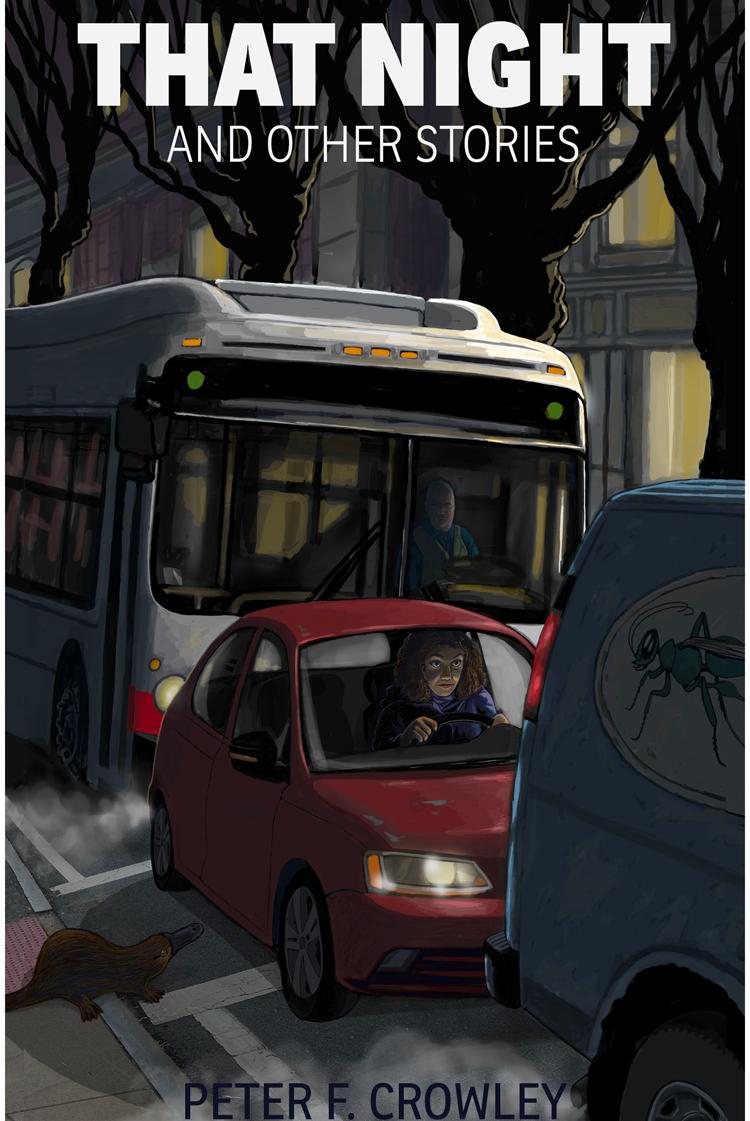

TELL US A LITTLE ABOUT BOUT YOURSELF AND QUIMBY’S BOOKSTORE.
LM: My name is Liz Mason. I’m the manager at Quimby’s, where I’ve worked since 2001. I’m also a zine publisher, and I sold my zines at Quimby’s before I ever worked here. Now I help other people sell their zines, as well as comics and books!
DO YOU SEE IN YOUR CUSTOMERS?
LM: Our customers get jazzed about strategies for self-care, pensive but arty fictional narrators, animals being existential, music memoirs featuring an artist coming into their own, and comics with pizza and/or cats and/or cats eating pizza. And intersectional feminism.
WHAT OTHER PRODUCTS AND/OR SERVICES DO YOU PROVIDE FOR YOUR CUSTOMERS?
LM: One of the things that we offer is a consignment policy that allows people who publish zines and comics to sell their work with us with no strings attached. Once their stuff sells, they get 60% of their sale. Most stores don’t do this because of how labor-intensive it is. But it does allow us to sell the types of things we do, small press titles that you won’t find at mst bookstores. We also have a monthly meet-up called Zine Club Chicago that features both in-person and on-line meetings that provide space for publishers to socialize and create with other makers. In addition to all this, we also do a weekly livestream called New Stuff Saturdays on our Instagram (https://www.instagram.com/ quimbysbookstore/) at 11:30am CT where
we -- surprise surprise! -- talk about the new stuff and other store news from the week.
LM: People need a place where they are exposed to new ideas and art. The bigger chains see their products and customers through the lens of theirnwallets, which can be antithetical to the experience of engaging in new ideas and art. The bigger chain stores try to appeal to everybody, therefore watering down what they offer. An independent bookstore that knows its audience (while still trying to find more likeminded customers) tends to offer more
interesting material because they aren’t trying to appeal to everybody. But for the people that are fans of any given store, independent bookstores are a godsend.
LM: What people crave is community and novelty. The stores that can customize the experience specific to their audience and offer things that their customers won’t find elsewhere are the stores that I imagine will thrive.
LM: Find us on the web at quimbys.com!
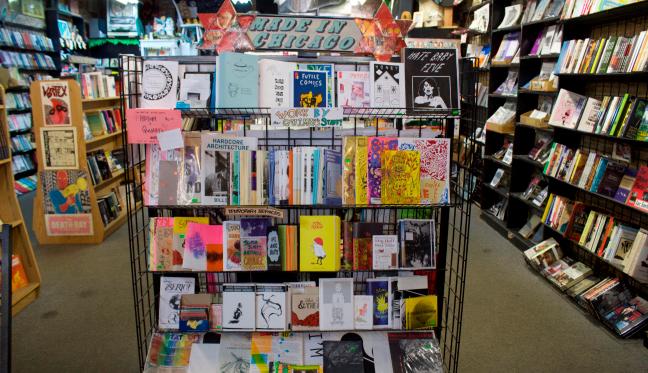


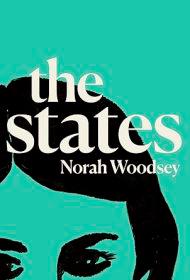 PUBLISHER: NORAH WOODSEY
PUBLISHER: NORAH WOODSEY
PAGES: 364
ISBN: 9798988445708

Blending science fiction and romance, author Norah Woodsey offers an intriguing premise: Can dreams guide reality?
Set in the near future, the story focuses on Matilda (Tildy) Sullivan. Plain compared to her beautiful sisters, she has never fit in well with her family or her millionaire father Patrick, whose once-successful cosmetics company is struggling.
During her childhood, she and her mother spent summers in Galway, Ireland, at her grandmother’s seaside cottage. Now that her mother has passed away and Nana is in a care facility, Tildy holds company stock and power of attorney over her grandmother’s property. Plagued by debt, Patrick wants both.
Hoping to live independently, Tildy works as a data scientist but is unhappy. She enrolls in a “lucid dreaming” experiment, donning a cap made of wires. It induces a dream state in which she visualizes relocating to Galway and
reconnecting with her first love Aidan, a Galway boy she broke up with at 17 to return to New York.
Meanwhile, in real life, she meets an attractive man in a NYC art gallery; later, she realizes he’s Jude Mills, whose father was framed by Patrick for a company scandal. Jude has vowed revenge, and Tildy is suspicious of his interest. Spurred by her dream-state, which she continues to invoke, Tildy flies to Galway hoping to start over.
Woodsey’s futuristic elements—the dream machine and an Alexa-style AI named Russell who mothers Tildy—are fascinating, and the book is filled with Irish Gaelic phrases and culture that will appeal to readers interested in the region.
The romance element, however, often feels overwrought: (“She wanted to scream…at the memories… feed[ing] her heart only anguish and misery, until it would accept nothing else.”), and the protagonist seems emotionally clueless and immature regarding love. Additionally, some elements are hard to believe; for example, Aidan runs a Michelin-starred restaurant at the unlikely age of 25.
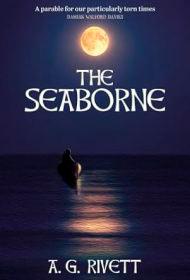
PUBLISHER: PANTOLWEN PRESS
PAGES: 353
ISBN: 9781739362379

A.G. Rivett’s The Seaborne is speculative fiction about modern-day engineer John Finlay, who leaves a failed business and relationship behind by hiring onto a fishing boat heading into the Atlantic.
When John wakes from an accident he can’t remember, he has been dragged from the sea by fishermen from a small island village, 1,000 years in the past. There he struggles to understand the culture and language. Gradually accepted into village life, he’s apprenticed to the village blacksmith.
To return their kindness, John wants to help, but his attempts to demonstrate electromagnetism with lodestones triggers suspicion that he’s using trickery. When he begins teaching the blacksmith’s daughter Shinane to read, tensions simmer as men worry that if women can read, they’ll want more than their traditional roles.
Then Shinane rejects a marriage proposal from Dermot, an angry, violent young fisherman who believes John has stolen her from him. He pursues John into the mountains, intent on murder, but during the chase, Dermot falls into a bog and dies. Although the fault isn’t John’s, he’s blamed by many villagers. John is subsequently forced into a challenge that becomes a spiritual quest, during which he embraces his new life.
The story is deeply and carefully imagined. John brilliantly tries to explain modern technology by cutting blades into a slice of turnip to demonstrate how a propellor works and compares the unimaginable number of people living in modern London to the number of leaves on the heather plants on a moor. The countryside is well described, the details and situations realistic, John’s struggles with language and culture compelling.
The Seaborne is about a man pushed to his limits, forced to go deep into himself to reassess what’s important in life. The book asks thought-provoking questions about what modern humans have given up in terms of community, faith and honor in favor of always grasping the new.

PUBLISHER: BALBOA PRESS
PAGES: 238
ISBN: 9798765239070

From Machu Picchu to Mount Rainier, retired nurse/ midwife Kathy Wright’s travels created a solid foundation for another unexpected odyssey: the journey she embarked upon with her diagnosis of ovarian cancer. This deeply personal memoir shares how world travel and cancer intertwined to support and enhance her quest to open herself to what’s truly important in life.
Wright’s narrative weaves travel stories with discussion of her cancer diagnosis at 72 and subsequent treatment. She shares how carefully chosen chemotherapy outfits— Superman socks and a necklace of religious medals from her trips—became life-affirming coping mechanisms. And how experiences such as the sacredness of Barcelona’s La Sagrada Familia basilica or death purification ceremonies in India’s Ganges River offered gifts of wisdom. She sought to create her own rituals: “Before I began my chemotherapy sessions, I would ring a Tibetan chime above my chemotherapy chair to create vibrations for positive healing energy. I would sprinkle essential oils to infuse healing aromas into the air…”
Searching out diverse myths and folklore, she learned of the survival and resilience of indigenous cultures. This gave her perspective on her own journey, as cancer, too, has its culture of survival and resilience, she notes.
The narrative isn’t strictly chronological, so readers can pick up the book at almost any point to enjoy the author’s warm embrace of other cultures, plus spiritual practices such as meditation and yoga. Readers who expect a romantic travel story such as Eat, Pray, Love or who want extensive information on ovarian cancer treatment should seek other sources. Wright’s combination of heart-felt, loving travel vignettes and her cancer journey mesh well, however, and her thoughtful voice eschews the trite platitudes common in other similar books.
The French term for midwife is sage femme, or wise woman. Wright shows readers through examples of her interior and exterior journeys that connected to sacred moments that they, too, can find wisdom in their personal quests.

PUBLISHER: FORSTER
PUBLISHING
PAGES: 218
ISBN: 9781735952277

Kim Catanzarite’s Staked poses an intriguing question for readers of vampire fiction: What if the vampire in question was both angelic and monstrous simultaneously?
Staked’s vampire is Gregorie Babin, who approaches life (or afterlife) like a philosopher. “He didn’t sleep just like he didn’t breathe,” the author writes. “That’s why he feared he was dead. But he wasn’t dead, was he? He was still thinking and moving, still remembering.”
Gregorie, born in the 1700s in a small fishing village in France, was confined in his “shell”— a trunk-like container on the ocean’s floor—for centuries. He suddenly awakes from a deep slumber and swims ashore to New England’s Wodge Island. After drinking a dying deer’s blood, he encounters three 20-something vagabonds living in a bus— Liam, Paul and Benicia—who introduce him to the modern age.
As Gregorie grows stronger, he slowly remembers who he was, and the novel alternates chapters between modern times and Gregorie’s memories of living in Saint-Suliac with his mother, the village healer. In assisting his mom in her healing work, he learns he has power to help those who are stuck crossing over to the afterlife (his mother calls him an “angel of death”). Gregorie is a good person, despite being a vampire —but when he encounters his evil maker Reynaud in the modern age, his reckoning with him propels the plot.
Catanzarite’s prose is evocative, almost lyrical at times as she weaves a tale of two different centuries. Under her skilled storytelling, suspense builds as Gregorie remembers how he came to be a vampire. She also delivers superb descriptions: “A brisk breeze slid down the dunes, and he sensed something indescribable that seized his attention. And now he moved in that direction without thought, losing control of the horrible wanting, knowing he would go wherever it led him.”
Fans of vampire fiction, particularly those who enjoyed The Historian, will delight in Gregoire’s journey and eagerly anticipate his next adventure.

PRESS AND MEDIA
PAGES: 48
ISBN: 9798886221961

In this short, illustrated parable, the Light Keeper helps a fading lighthouse regain its life-saving beam.
Offshore, a distant lighthouse guides ships through a treacherous stretch of water to safe harbor. As time goes by, it becomes lonely. The stubborn feeling of isolation dims its memory of the unique purpose for which it was built. Guilt, self-doubt, and despair rob the lighthouse of its glow. Its dreams are fleeting glimpses of some older time when life was brighter and more joyful.
“But the briefest instant is often long enough in the timeless realms known to dreams to find joy, happiness, and love residing there.” The lighthouse suddenly has a vivid memory of the Light Keeper who used to climb the tower to ensure its beam was as sharp and bright as it could be. The lighthouse cries out for the Light Keeper, and the presence arrives. The Light Keeper imparts guidelines to the lighthouse that allow it to regain its intensity and sense of purpose and shore up its foundations so it will never dim again.
This is a quick read, but a profound one that can be mined for layers of meaning over and over. In collaboration with two creative partners, Cliff Crain for story and Joe Bellows for illustration, author Linda Gallagher expresses deep psychological and spiritual concepts that humans have struggled with for millennia, such as suffering, surrendering, and “a tangible ‘awakening’ to an Omnipresent goodness of love and care.”
With a childlike innocence and illustrations of the lighthouse, the sea, seals, seagulls, and sailboats that blaze with gem-like colors, she offers insight and inspiration to help anyone with the creeping suspicion that’s there’s more they could be offering the world to “begin anew with grace, gratitude, love, and purpose.”
PUBLISHERPAGE
PUBLISHER: BOOKBABY
PAGES: 242
ISBN: 978-1667886657
“Gothic Revival” by Michael Mullin is an enthralling psychological thriller that cleverly draws inspiration from the creation of “Frankenstein,” spinning a suspenseful and intricate narrative.
The book reunites four estranged friends—Chris, Anne, Fiona, and Lauren—summoned by Eric, a successful screenwriter and the fifth member of their group. They converge at a secluded lake villa where Eric reveals a startling revelation: their relationships mirror the historic literary gathering at Villa Diodati, where Mary Shelley penned her iconic work. Each friend embodies a figure from that momentous event. As they delve into writing ghost stories, their camaraderie frays, giving way to suspicion and deception. Fiona’s uncanny insights, Eric’s mysterious behavior, and revelations from a cryptic housekeeper unravel hidden motives,
straining their bonds until an unforeseen discovery exposes the true purpose behind their reunion.
Mullin’s storytelling finesse shines through, crafting a narrative that intricately weaves suspense with believable character dynamics. The novel unfolds as a gripping tale, interweaving unexpected twists within the eerie ambiance of the mansion. Mullin’s clever inclusion of literary references adds depth to the story, enriching its layers.
A captivating thriller, “Gothic Revival” offers absorbing psychological suspense with a smart and nuanced narrative. Mullin’s skillful storytelling and strategic plot twists create an engaging and original tale. This book stands out in the psychological thriller genre, providing a compelling storyline that keeps readers engaged until the final revelation, establishing Michael Mullin as a masterful storyteller in the realm of psychological suspense.

PUBLISHER: MANUSCRIPTS LLC
PAGES: 212
ISBN: 979-8889268017
“Held And Free: Coming Out of Your Story” by Meagan M. O’Nan is a poignant memoir that traces the author’s transformative journey from feeling like an outsider in her own life to discovering the healing power of storytelling.
O’Nan’s life took an unexpected turn when she was outed as a gay woman in Mississippi. Struggling with feelings of unworthiness and a longing for authentic love, she embarked on a soul-searching quest, leaving behind familiarity to confront her inner turmoil. In a moment of desperation, O’Nan pleaded with the Universe for love that matched her own capacity to love. Her revelation was not what she anticipated—it demanded dismantling the emotional barriers she had erected following her coming out. Healing became her path to being both held and free.
The heart of “Held And Free” lies in O’Nan’s return to Mississippi, facing her story head-on and embracing vulnerability as a means to heal. Her memoir stands as a how-to guide, illustrating how sharing personal narratives can foster profound healing and peace within.
This book transcends a mere personal narrative; it’s an invitation to discover the potency of vulnerability and storytelling in cultivating connections and fostering hope. O’Nan’s journey as a gay woman navigating challenges in Mississippi exemplifies the transformative influence of remaining open to life through the art of storytelling.
“Held And Free” will resonate with readers who appreciate immersive memoirs, seek insight into the power of storytelling, and aspire to create wholeness in their lives. It offers a compelling narrative that underscores the significance of embracing personal narratives for growth, healing, and the potential to transform lives.

SELF-PUBLISHED
PAGES: 261
ISBN: 979-8389371101
“Midnight in Syria” by Jacek Waliszewski presents a compelling narrative set amidst the tumultuous backdrop of the Syrian Civil War. Through the protagonist, Dakota, an enterprising journalist trapped in the throes of conflict, the novel ventures into the intricate layers of war, romance, and survival.
Waliszewski’s storytelling prowess shines through Dakota’s gripping ordeal, navigating the chaos of Syria alongside the enigmatic figure of Special Operator Owen. Their journey unfolds amidst perilous circumstances and the looming threat of pursuit by security forces, painting a vivid portrait of tension and danger.
This narrative masterfully combines action with an engaging romantic subplot, portraying well-rounded characters like Dakota and Owen with depth and authenticity. The fast-paced plot ensures a captivating experience, rife with suspenseful twists that keep readers on the edge of their seats.
“Midnight in Syria” prompts introspection on the complexities and consequences of conflict, urging readers to contemplate the profound impacts of war on individuals and societies. Waliszewski’s adept capture of tension and anticipation renders this novel an engrossing and thought-provoking exploration of the human experience amid turmoil.

PUBLISHER: ONALEX BOOKS
PAGES: 280
ISBN: 1955444137
“Homespun” by Sophia Alexander is a gripping tale nestled in the depths of South Carolina’s Lowcountry, entwining a family feud, forbidden love, and the relentless pursuit of truth by a determined journalist.
Zingle Caddell, unapologetically rooted in his vices, reckons with the consequences of his actions until a jarring encounter with Jessie Bell, sparked by her missing stepdaughter, catapults their families into further discord. Amidst the animosity between the Bells and Caddells, an unexpected romance blooms between Jessie’s daughter and Zingle’s nephew. However, their love becomes ensnared in familial enmity, leading them to confront a crucial choice— risk alienation, destitution, or even endangerment to pursue their affection.
Sophia Alexander crafts a riveting narrative that weaves truth and fiction seamlessly, leaving a lasting impression on readers. The story resonates long after the final page, immersing audiences in the rich tapestry of the Great Depression era. With a skillful portrayal of South Carolina’s vernacular and a multilayered plot, the book offers a melodramatic yet enthralling slice of American history.
The novel’s air of mystery captivates from the onset, drawing readers into a world of provocative dilemmas and layered characters. Alexander skillfully unravels a tale of love, family ties, passion, and discord against a backdrop of compelling historical depth.
“Homespun” presents a 20th-century interpretation of a Romeo-and-Juliet-style narrative, delving into themes of love, loyalty, and disagreement. Alexander’s enchanting prose and meticulously crafted characters evoke deep emotions, ensuring readers remain engaged until the novel’s poignant conclusion. It’s a beautifully written, character-driven tale that effortlessly transports readers to an era fraught with passion and conflict, leaving an indelible mark on the reader’s heart.

PUBLISHER: PERSPECTIVE BOOKS
PAGES: 404
ISBN: 0999460285
In Jessica McCann’s “Bitter Thaw,” the narrative navigates between past and present, deftly exploring the impact of discrimination based on race and gender. McCann handles weighty themes like racism and sexism with sensitivity and insight, weaving a poignant tale that resonates deeply with readers.
Set in 1956 Minnesota, the discovery of longforgotten human remains reopens an old case for an Arizona family. Three generations embark on a cross-country journey seeking truth and closure, their quest serving as a metaphorical journey of self-discovery. As they unearth buried secrets, doubts surface, challenging their understanding of right and wrong, and forcing them to confront uncomfortable truths about their family's past.
The story unfolds across diverse landscapes, from the windswept plains of the Midwest to the rugged terrain of the American Southwest, highlighting how historical injustices echo in the present. It’s a tale of seeking truth while confronting personal histories, prompting characters to reconsider their moral compass and confront the complexities of their identities.
“Bitter Thaw” is a heartfelt exploration of memory, truth, and the complexities of ethical choices. It gracefully delves into the nuances of navigating the past, compelling characters and readers alike to ponder the shades of right and wrong in a world where justice is not always black and white.
 PUBLISHER: HENRY HOLT AND CO.
PUBLISHER: HENRY HOLT AND CO.
PAGES: 336
ISBN: 9781250873248
Released on January 16, Where You End is Abbott Kahler’s debut fiction novel. As a former journalist, she has four bestselling narrative nonfiction books.
Where You End is a psychological thriller about identical twins—Kat and Jude. As the story begins, Kat is in a coma after a car accident, and she has lost all of her memory. Jude helps her remember her past, but as time passes, Kat realizes her past maybe isn’t what Jude has told her.
As I began reading Where You End, I felt like I was reading more of a women’s fiction or a literary fiction novel, not a thriller, but I hung in there because I do read those genres and the story did intrigue me. Right away, I liked the way Abbott did a dual point of view and timeline. She labeled each chapter, so I knew
exactly who was speaking and where I was on the timeline. That made it easier to follow the story. I enjoyed Kat’s first-person narrative because I felt like I was inside her head more than Jude’s third person point of view. Being inside someone’s head in a thriller makes it that much more suspenseful.
As I have already mentioned, the prologue grabbed my attention right away, but the first several pages of the book moved somewhat slowly. Jude is helping Kat to relearn her past after she has come home from the hospital, but as Kat gets brave and goes out into society, she learns more and more about herself. That is when the pace picked up. The more Kat learned about her past, the more she wanted to know the truth, and that is what drove me to finish this thriller.
Overall, Where You End feels more like a combination of literary fiction and psychological thriller, but it is a book I would still recommend.

PUBLISHER: BLAZECREST
PUBLISHING
PAGES: 513
ISBN: 978-1-9514-1205-0
Stormless by Nick Stitle is a thrilling fantasy set in a world ruled by seven powerful Tempests. It’s a fullblown action-packed novel told from three points of view. This kind of spellbinding storytelling lets the reader visualize all the different struggles these entities go through since the land is ravaged by cataclysmic storms.
As the suspense and mystery build, and the storms start occurring with various types of temptations, it’s evident the once thought ancient sect wasn’t fully eradicated. This unique theme is the backbone of the story as we learn about Castien Varic, a soldier; Faelyn Titansworn, a powerful Summoner; and Asteros Silverglade, a member of a sect with godlike powers.
Together they face magic, war, love, and loss that will change the fate of their world. Of all the different characters, I really liked Castien because he was a common army soldier who goes through challenges that help him learn about himself and the powers he secretly has. It’s also fun that you get to follow the antagonist that spirals out of control and goes completely crazy. So as the characters set out to get answers about the ancient sects, they learn to trust, love, and find courage deep within themselves.
Stormless is an impressive debut for a 17-year-old author. Stitle’s has created a world that shifts between storylines, setting the tone for an epic fantasy readers will love. The writing is poetic and theatrical as it paints a picture every fantasy novel should have. I’m so ready for book two!

SELF-PUBLISHED
PAGES: 256
ISBN: 9798988070306
“Ruckus” by Aaron Richard Golub is an enthralling memoir that paints a vivid portrait of the author’s formative years in Worcester, Massachusetts, during the 1950s and ‘60s. Golub’s storytelling prowess shines as he takes readers on a wild ride through his rebellious and tumultuous adolescence.
Set against the backdrop of a working-class neighborhood, Golub’s narrative is a nostalgic exploration of love, friendship, and the challenges of growing up. The book introduces us to Richard’s family, his encounters with a diverse cast of characters, and his unforgettable romance with Linda Paul, a relationship that spans a decade. The author’s ability to capture the essence of the era, including the societal norms and challenges, adds depth to the narrative.
Golub’s memoir is a rollercoaster of escapades, from school suspensions to a cross-country road trip to Hollywood. The prose is laced with humor and poignancy, creating a compelling and emotionally resonant reading experience.
“Ruckus” not only offers a glimpse into Golub’s unconventional journey but also serves as a reflection on the universal themes of identity, resilience, and the enduring impact of one’s formative years. Golub’s narrative, described by AIR MAIL as a “rowdy journey to success recollected with humor and poignancy,” is a testament to the power of storytelling to entertain, provoke thought, and evoke nostalgia.

PUBLISHER: SOURCEBOOKS
PAGES: 416
ISBN: 9781728256177
In this lush romantic fantasy about forbidden love, duty, choice, and desire is a total blast. I went into this book with zero expectation since I’ve never read anything by Rachel Griffin, but now I look forward to reading everything by her.
Bring Me Your Midnight has an incredible forbidden/enemies-to-lovers romance enmeshed in politics and drama. Tana, the female lead, lives inside a witch coven on a beautiful island with friends and family. To keep the coven safe, Tana ensues its safety through an alliance. The overall world building was strong, complex, and original, and never got confusing.
I really liked how realistic Tana was portrayed as she went through challenging situations where decision had to be made for herself and others if the coven was to survive. Even as the romance between Tana and Wolfe blossoms, they understand each other no matter how crazy things get. The story also has a fun tropical early 20th-century setting that’s simply irresistible.
It felt so 1940s if you can imagine since so many of us weren’t born during that time. Rachel Griffin gave the coven’s magic system a solid twist because all the Dark Magic had to be banned since Low Magic was the only thing accessible to the witches, so it was a good how the mainlanders fear the coven. Bring Me Your Midnight effortlessly delivered a powerful arc for the heroine by adding layers to Tana and other characters who explore conflict, growth, and personal challenge.
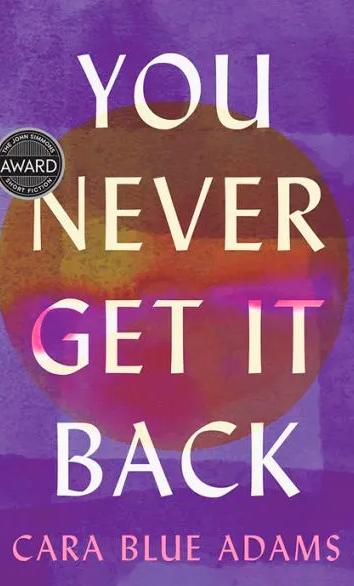
PUBLISHER: UNIVERSITY OF IOWA PRESS
PAGES: 186
ISBN: 9781609388133
Winning this year’s John Simmons Short Fiction Award, You Never Get It Back by Cara Blue Adams, is an outstanding book. The story begins with Kate, a young woman from rural New England, as she reflects on her life through snapshots ranging from her college years to her late 30s as she lives at various places throughout the northeast, southwest, and south.
The novel examines loss in all forms, and the collection of stories tie together as they pick apart Kate’s trauma through first- and third-person narratives. A vague and aloof protagonist tells these stories in little vignettes that make for a great mystery because whenever the story comes across any kind of romance, the protagonist becomes reticent. Between each story, there’s a jump in time through months to years, and the recurring theme includes the relationship between the mother, sister, various boyfriends, her lab work, and time as a writer and teacher. Every story grows stronger as the story unwinds, and by the end, I was left wanting more. Two stories that moved me most were Charity and Seeing Clear. Together, they allowed me to understand Kate and her troubled sister Agnes because it gave me a more in-depth description about her mother and father. I also got the feeling that the kids were the black sheep on the mother’s side of the family, and how the possibility of resentment and not having enough influence their reasoning. It’s a story about coming into oneself through life experience and helping us to understand our lives with all the different choices we make for ourselves and others.

PUBLISHER: HOWLING BIRD PRESS
PAGES: 128
ISBN: 9781736577752
Morgan Christie is a new and noteworthy poet, essayist, and fiction writer. Boolean Logic was a heavy but quick read. The essays and poems were my favorite part of the book since they were engaging and heartwarming. The book is short and stands around 128 pages, but the message is very thought-provoking.
You can skip around 12 essays you find more interesting than others, but as a whole, the book talks about future love integrated within social issues of the past that help us define the present. It has many themes on race, gender-inequality, and discrimination. Even if you’re not into politics, there’s something you can relate to. This will surely speak to anyone who likes collections, short stories, magazines and blogs.
The short story section requires a slower read since it seems the author intended the material to be digested that way, but since the concepts deal with injustice and being a woman of color, the essays were very personal, and some of the issues Christie talks about, things I’ve never experienced, can really make you feel uncomfortable because they shouldn’t be happening to anyone.
I really enjoyed the book and would like to read more by Morgan Christie in general. I don’t read non-fiction often but when I do, I like to read good stuff, so this was a great book to explore outside my realm of fiction. Christie’s words gave me a lot to reflect about and I really appreciate that. This was such a well written book that makes you sit up and think, so I highly recommend it.
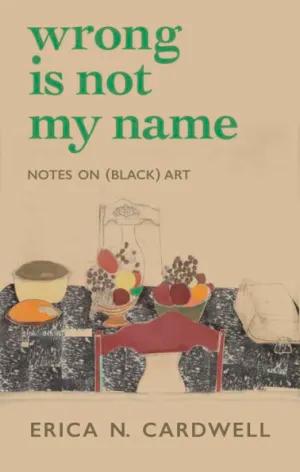
PUBLISHER: FEMINIST
PRESS AT CUNY
PAGES: 224
ISBN: 9781558613812
A dazzling hybrid of personal memoir and criticism, Wrong Is Not My Name considers the work of Black visual artists as a means to explore loss, legacy, and the reclamation of life through art.
At the age of twenty-one, Erica Cardwell finds herself in New York City, reeling from the loss of her mother and numb to the world around her. She turns inward instead, reading books and composing poetry, eventually falling into the work of artists such as Blondell Cummings, Lorna Simpson, Lorraine O’Grady, and Kara Walker. Through them, she communes with her mother’s spirit and legacy, and finds new ways to interrogate her writing and identity.
Wrong Is Not My Name weaves together autobiography, criticism, and theory, and considers how Black women create alternative, queer, and “hysterical” lives through visual culture and performance.
In poetic, interdisciplinary essays—combining analytical and lyrical streamof-consciousness—Cardwell examines archetypes such as the lascivious Jezebel, the caretaking Mammy, and the elusive Sapphire to formulate new and inventive ways to write about art.
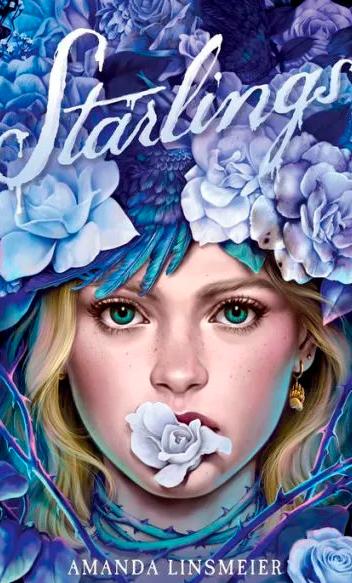 PUBLISHER: RANDOM
PUBLISHER: RANDOM
HOUSE CHILDREN’S BOOKS
PAGES: 336
ISBN: 9780593572351
In this debut dark-fantasy thriller, Amanda Linsmeier creates a story about family secrets and lies. After losing her father suddenly, seventeen-year-old Kit finds out about the existence of her grandmother―someone she and her mother didn’t know existed. Kit’s father was a huge inspiration to her since he’s the reason Kit wants to be an author.
So when Kit and her mother go visit his hometown in Rosemont, Kit feels like she’s landed in the 1950s. The town looks perfect, but it’s plagued with deep seeded mysteries. As time goes on, Kit eventually realizes that the town’s darkness is linked to her family: the Starlings. This brings a subtle supernatural lore that doesn’t overwhelm the story, so if you’re not into that genre, you still can enjoy this book since the dark fantasy element superbly sets up a fascinating and original world with monsters and magic.
The story also has a strong mother/daughter relationship, so readers looking for that sort of bond will find this book exceptionally gratifying. All this chaos creates two big plot twists, but the moment Sabelle comes out, the novel burns. Linsmeier’s haunting mystery holds the reader captive as you learn about Rosemont’s dark riddles and sinister energy. It simply leaves you breathless, so if you’re in the mood for some light goosebumps and tingles now that it’s winter, Starlings will hit the spot.
A must read in the world of YA.
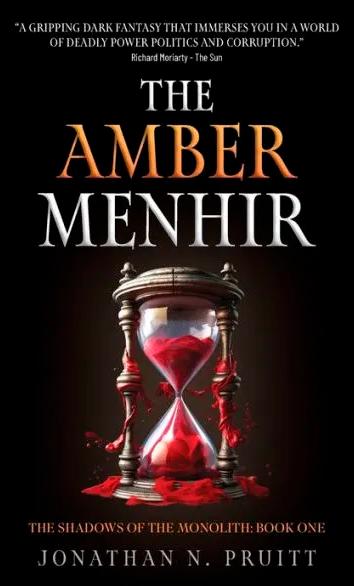
PUBLISHER: SPINNER
LOOM PRESS
PAGES: 384
ISBN: 9798988661108
Inside a school of magic for youngsters, The Amber Menhir is a stunning work of fantasy horror. Like good imaginary tropes, there’s a good mixture of political- and class-commentary at the school, so things aren’t what they seem.
Jonathan Pruitt does a great job building so many systems of magic in a story I guarantee will become a popular series with numerous installments. Characters like Delver Nash will make your skin crawl, so if you’re into dark world-building, this won’t disappoint. The book travels through an elaborate range of emotion spanning from laughter to empathy, something Pruitt’s storytelling does extremely well.
Since the end of the world is nearing in the plot, a more compelling aspect of the book is the exploration of all the complex themes between good and evil. Humanity’s delicate slice of hope rests in the hands of the menhirs, a group of scholars who devote themselves selflessly to the discovery of new magic so that the approaching apocalypse can be stopped.
Since its society is divided between potential- and regular-citizens, Tara Langcraw gets recruited into the Amber Menhir to help save the world, however, those who fail to meet the scholars’ expectations, or those who dare challenge the prevailing order, get more than their share of discipline. The Amber Menhir is an adventure you’ll be glad you didn’t miss, just take your time getting to know all the different characters and alternate worlds, and you’ll be happily rewarded.
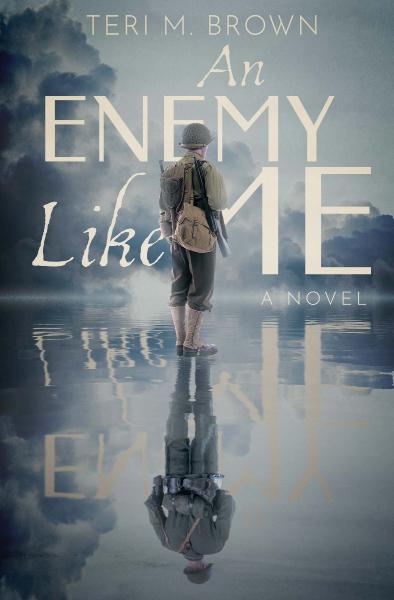
PUBLISHER: XLIBRIS
PAGES: 260
ISBN: 9781984591395
“An Enemy Like Me” delves deeply into the intricate complexities of loyalty—to heritage, family, and country— when these values collide. Set against the backdrop of World War II, the novel follows Jacob Miller, a first-generation American from a German-immigrant town, faced with the daunting decision of choosing between patriotism and the safety of his young family.
Teri M. Brown’s narrative artfully portrays the perspectives of Jacob, his wife Bonnie, and their son William as they grapple with the reverberations of war. Through relatable characters and internal conflicts, the story unfolds as a deeply personal exploration of profound emotions and ethical dilemmas.
The book eloquently explores themes such as the impact of war on individuals and families, the moral complexities of fighting against one’s shared heritage, the enduring scars of trauma like PTSD, and the far-reaching consequences for generations to come. Particularly poignant is the portrayal of a young boy navigating his father’s altered persona and the widespread effects of wartime turmoil.
Brown’s storytelling captivates with its evocative details, heartfelt reflections, and nuanced character development, creating a resonant and impactful narrative. Seamlessly blending multiple perspectives and timelines, the story engrosses readers from the start, leaving a lasting emotional impression.
For readers who appreciate immersive storytelling with rich themes and engaging prose, “An Enemy Like Me” stands as a powerful ode to family bonds, loyalty, and the trials faced during WWII. Its moving character portrayals and thought-provoking narrative make it an ideal choice for literary fiction enthusiasts and a compelling selection for book club discussions. This emotionally charged story provokes reflection on the enduring human spirit amidst the turmoil of war.


BlueInk Review offers professional book reviews ofindependently published and self-published books.
A fee-based book review service for self-published books. All of our book reviewers are professional reviewers with bylines from major newspapers and periodicals and senior editors from major NY publishing houses. All of our reviews are honest and credible.
Nobody loves books more than us. We're a team of readers with broad interests and strong feelings about the books on our shelves.


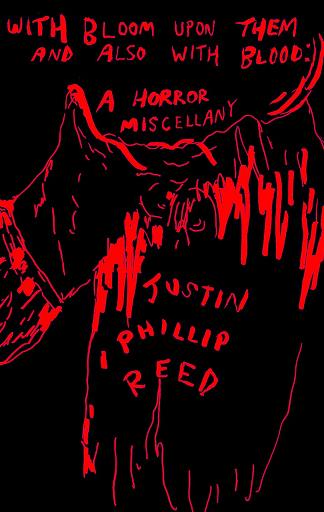
From the famous Mexican author, Sergio Pitol, comes his 1988 classic translated by George Henson. Taming the Divine Heron tells the semiautobiographical story of a novelist working on his newest masterpiece. The protagonist struggles to tell the perfect story—his own imagined protagonists mere imitations of the likes of Lord Jim and Alyosha Karamazov. To help eradicate writer’s block, Pitol uses his vessel to praise his own favorite authors. Pitol applauds Bakhtin’s world building, Gogol’s “carnivalesque [literary] breath,” and Dante’s dizzying intensity. The character finds a muse in Marietta Karapetiz, whom he aptly dubs Dante C. de la Estrella, and the two debate the literary greats.
As the pair attempts to pull from the techniques of the world’s best writers, Pitol creates a love letter to literature from around the globe while simultaneously telling his own magical story. To quote Pitol’s protagonist, “the quality of the story, its effects, its brilliance, its intensity, ma[k]e the most absurd circumstances plausible.” Taming The Divine Heron, second in a trilogy including already-published The Love Parade (Deep Vellum, 2022), houses history, hyperrealism, myth, folklore, and memoir; to read Pitol is to appreciate the power of language.
In August 1592, a bailiff and his two assistants arrive at the monastery of Úbeda, with the secret task of transferring the remains of Saint John of the Cross, the great Carmelite poet and mystic, to his final abode. When they exhume him, they find the saint’s body as incorrupt and fresh as when he died.
Thus commences a series of adventures and misfortunes populated by characters that seem to be drawn from mythology. Luis Felipe Fabre masterfully incorporates Saint John’s verses into his prose, as if the saint had prophesied the delirium that would surround his own posthumous transfer. This funny, highly entertaining novel manages to honor the mystical poetry of the Carmelite while inviting the reader to reflect on issues such as the sacred and the profane, the body and the soul, and spiritual (as well as carnal) ecstasy.
In 2019, Justin Phillip Reed’s romantic maiden voyage through the waters of American poetry and its communities ran aground in the barrens of Pittsburgh, Pennsylvania, when he found himself with two years of writing time on the horizon and no social context to keep him afloat. In anxiety and estrangement soon deepened by global pandemic, popular fascism, virtual being, intestinal distress, and the obscenity of his own privilege as a university pet, he retreated to the comforts of horror films with no intent but diversion. What happened instead was this reckless, unprecious, in-process reckoning.
Backdropped by sprawling cemeteries, soundtracked by too much Type O Negative, and totally hung up on cameras, With Bloom Upon Them and Also with Blood is a chase and a trip where lyric essays, ekphrastic poetry, and lectures grapple with alienation, professional disillusionment, perversion, and internal contradiction under racial capitalism through playful and critical encounters with horror cinema and cultural iconography.

A stylistically and conceptually daring collection that winds from fantastical horror to mischievous domestic realism and always keeps in its sharp, compassionate view the material, spiritual, and emotional lives of Haitian people.
Playful, kinetic, and devastating in turn, You Were Watching from the Sand is a collection in which Haitian men, women, and children who find their lives cleaved by the interminably strange bite back at the bizarre with their own oddities. In “belly,” a young woman abandoned by her only living relative makes a person from the mud beside her backyard creek. In “We Feel it in Punta Cana,” a domestic child servant in the Dominican Republic tours through his own lush imagination to make his material conditions more bearable. In “The Oldest Sensation is Anger,” a teenager invites a same-aged family friend into her apartment and uncovers a spate of disturbing secrets about her. Written in a mixture of high lyricism, absurdist comedy, and Haitian cultural witticisms, this is a collection whose dynamism matches that of its characters at every beat and turn.

Sex Augury is a collection of radical, trans poems which practice divination with the symbolism of our changed and changeable world.
Sex Augury is a collection that practices divination with the symbolism of our radically changed and changeable world. Exercising trans poetics, C. Bain denormalizes the violence embedded in the most intimate strata of American life. Confrontationally queer, urgently wounded, deeply political, and metaphysically transported, these poems create their own system of meaning in an environment that is increasingly hostile to meaning of any kind. This collection spans digital culture, gender reversals, and archetypal-mythic vocabularies, alongside close observation of the surround of “ordinary” urban existence. Sex Augury is a work of dyads, not binaries—concepts bound together which nonetheless refuse to form a coherent, harmonious whole; humor and despair, tenderness and brutality, desire and revulsion. These poems bristle with intelligence, acuity of feeling, and refusal to gloss the complexity of our moment into a false narrative of progress.

Written in memoir form through the language of flowers, this book of poems examines a daughter’s chronic illness in order to consider the vastness of human connection.
Floriography Child is a book about salvation: what gives people strength in the face of adversity, not just to endure, but to move through and beyond our myriad human sufferings. Through poems, microessays, and visual art, Floriography Child addresses fundamental questions about purpose, connection, and resilience. Written in memoir form, this book examines the mother-daughter relationship and its intimacies in the context of a daughter’s developing chronic illness. How to bear another’s suffering— how to find sustenance in a world fraught with uncertainty and pain— is addressed through the language of flowers and the natural world.
Ultimately, this book asks us to consider how each of us, whatever our path, is connected.
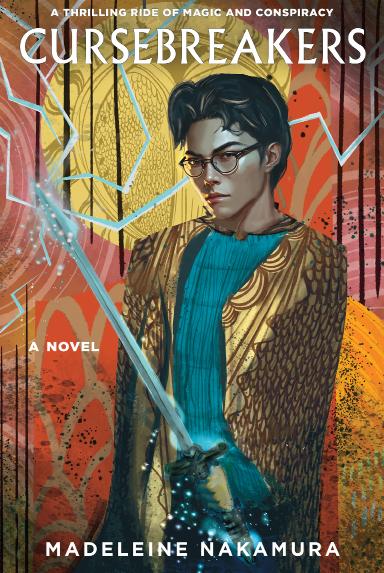
Adrien Desfourneaux, professor of magic, must survive his own failing mental health and a tenuous partnership with a dangerous ally in order to save the city of Astrum from a spreading curse.
Adrien Desfourneaux, professor of magic and disgraced ex-physician, has discovered a conspiracy. Someone is inflicting magical comas on the inhabitants of the massive city of Astrum, and no one knows how or why. Caught between a faction of scheming magical academics and an explosive schism in the ranks of the Astrum’s power-hungry military, Adrien is swallowed by the growing chaos. Alongside Gennady, an unruly, damaged young soldier, and Malise, a brilliant healer and Adrien’s best friend, Adrien searches for a way to stop the spreading curse before the city implodes. He must survive his own bipolar disorder, his selfdestructive tendencies, and his entanglement with the man who doesn’t love him back.
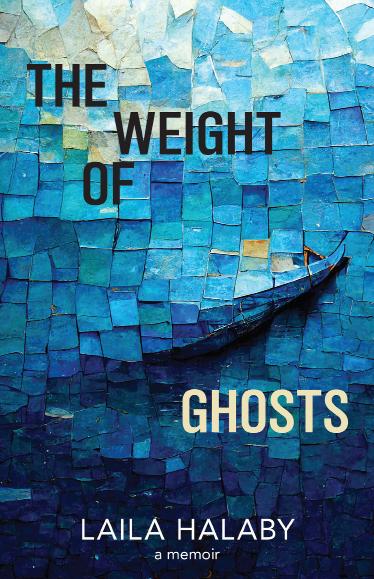
The Weight of Ghosts is a lyrical memoir by an author struggling with the death of her older son and sifting through the details of her life.
The Weight of Ghosts is a circling of grief following the death of the author’s older son when he was twenty-one, a horror that was compounded by her younger son’s drug use, the country’s slow eruption as it dealt with its own brokenness, and reckoning the author had to do regarding her own story. The Weight of Ghosts is a lyrical reclaiming and an insistence by the author that she own the rights to her story, which is American flavored with an unreleasing elsewhere. The Weight of Ghosts is an immigrant story and a love story. While it is raw and honest and tragic, it is also a hopeful, funny, and original telling that demonstrates the strength of the human spirit, while offering a vocabulary for these most unmanageable human experiences.

Theresa Bonpane’s memoir Sister Rebel is an inspiring and powerful read for anyone interested in the world of activism and social justice. The book charts Bonpane’s journey from a young Irish-American woman, to a Maryknoll sister working in Chile, to a dedicated peace activist and director of the Office of the Americas. Along the way, she shares her experiences working alongside notable figures such as Howard Zinn and Martin Sheen, and how they helped shape her beliefs and actions in the fight for peace and justice. Through her personal anecdotes and reflections, Bonpane offers an insightful and thought-provoking look at the inner workings of the peace movement and the challenges faced by activists on the frontlines. This memoir is not only a testament to the power of one person’s commitment to change, but also a call to action for readers to join the fight for a better world.

The stories in I’m Here dramatize life in the Alaskan interior, describing the difficult lives of people in Fairbanks, Alaska as they move through the long, brilliant days of summer into the deep winter months. These are characters living on the tenuous edge of things—on the economic edge caused by poverty and disillusion, on the dividing line between outsider and insider, and on the literal edge of the Alaskan wilderness. The stories in this collection move from beauty to danger and back again with decisive grace, although the lingering effect is not shock, but empathy toward people simultaneously alien and oddly familiar.
David Nikki Crouse’s work has always explored the mysteries of identity, and these remarkably rendered stories double down on that subject by focusing on the self-mythology of people living in Fairbanks, Alaska, merging the hard exterior world of the Alaskan wilderness with its inhabitants’ complicated interior landscapes.

Island Man is a story about a father and son who struggle to forge a relationship out of generations of family trauma, secrets, and loss.
A grieving Hector Peterson and his estranged father Winston Telemacque arrive on the lush island of Dominica in 2017 to spread his mother’s ashes when Hurricane Maria strikes. Amid the devastation, the fragile peace between father and son is tested as long-buried family secrets at the heart of Hector’s identity are unearthed. Hector faces down his failed marriage, shipwrecked career, and his own failures as a father, while Winston, after three decades of striving as an immigrant in Boston, seeks to reclaim the losses from a painful childhood and the bloody betrayal by his one true love. In Island Man, the ruins of past and present are reconciled and shattered generational bonds are restored.

This collection of innovative, penetrating, and lively essays features swimming pools and poets, road trips and museums, family dinners and celebrity sightings. In a voice that is at once piercing, mournful, and slyly comic, Aisha Sabatini Sloan inhabits several roles: she is an art enthusiast in Los Angeles during a city-wide manhunt; a daughter on a road trip with her father; a professor playing with puppets in the wilds of Vermont; an interloper on a police ride-along in Detroit; a collector of the dreams of scientists at a biostation. As she watches cell phone video recordings of murder and is haunted in her sleep by the news, she reflects on her formative experiences with aesthetic and spiritual discovery, troubling those places where Blackness has been conflated with death.
Sabatini Sloan’s lively style is perfectly suited to the way she circles a subject or an idea before cinching it tight. The curiosity that guides each essay, focusing on the period between the 2016 election and the onset of the pandemic, is rooted in the supposition that there is an intrinsic relationship between the way we conceptualize darkness and our collective opportunity for awakening.
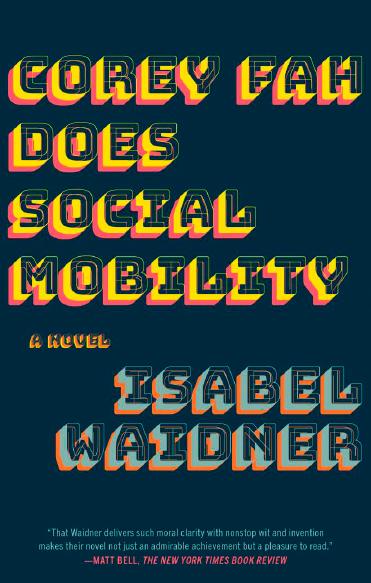
This is the story of Corey Fah, a writer who has hit the literary jackpot: their novel has just won the prize for the Fictionalization of Social Evils. But the actual trophy, and with it the funds, hovers peskily out of reach.
Neon-beige, with UFO-like qualities, the elusive trophy leads Corey, with their partner Drew and eight-legged companion Bambi Pavok, on a spectacular quest through their childhood in the Forest and an unlikely stint on reality TV. Navigating those twin horrors, along with wormholes and time loops, Corey learns—the hard way—the difference between a prize and a gift.
Following the Goldsmiths Prize–winning Sterling Karat Gold, Isabel Waidner’s bold and buoyant new novel is about coming into one’s own, the labor of love, the tendency of history to repeat itself, and what ensues when a large amount of cultural capital is suddenly deposited in a place it has never been before.

more.
From the earliest computers to the smartphones in our pockets, video games have been on our screens and part of our lives for over fifty years. Critical Hits celebrates this sophisticated medium and considers its lasting impact on our culture and ourselves.
This collection of stylish, passionate, and searching essays opens with an introduction by Carmen Maria Machado, who edited the anthology alongside J. Robert Lennon. In these pages, writergamers find solace from illness and grief, test ideas about language, bodies, power, race, and technology, and see their experiences and identities reflected in—or complicated by—the interactive virtual worlds they inhabit. Elissa Washuta immerses herself in The Last of Us during the first summer of the pandemic. Nana Kwame Adjei-Brenyah describes his last goodbye to his father with the help of Disco Elysium. Jamil Jan Kochai remembers being an Afghan American teenager killing Afghan insurgents in Call of Duty. Also included are a comic by MariNaomi about her time as a video game producer; a deep dive into “portal fantasy” movies about video games by Charlie Jane Anders; and new work by Alexander Chee, Hanif Abdurraqib, Larissa Pham, and many more.

Shannon Sanders’s sparkling debut brings us into the company of the Collins family and their acquaintances as they meet, bicker, compete, celebrate, worry, keep and reveal secrets, build lives and careers, and endure. Moving from Atlantic City to New York to DC, from the 1960s to the 2000s, from law students to drag performers to violinists to matriarchs, Company tells a multifaceted, multigenerational saga in thirteen stories.
Each piece in Company includes a moment when a guest arrives at someone’s home. In “The Good, Good Men,” two brothers reunite to oust a “deadbeat” boyfriend from their mother’s house. In “The Everest Society,” the brothers’ sister anxiously prepares for a home visit from a social worker before adopting a child. In “Birds of Paradise,” their aunt, newly promoted to university provost, navigates a minefield of microaggressions at her own welcome party. And in the haunting title story, the provost’s sister finds her solitary life disrupted when her late sister’s daughter comes calling.
These are stories about intimacy, societal and familial obligations, and the ways inheritances shape our fates. Buoyant, somber, sharp, and affectionate, this collection announces a remarkable new voice in fiction.

In a dark and crooked lane in an unnamed city where it never ceases to snow, a small white box falls from a coat pocket. It is made of paper strips woven tightly together; there is no apparent way to open it without destroying it. What compels a passing witness, a selfdescribed anthrophobe not inclined to engage with other people, to pick up the box and chase after the stranger who dropped it?
The Box follows an impenetrable rectangle as it changes hands in a collapsing metropolis, causing confluences, conflicts, rifts, and disasters. Different narrators, each with a distinctive voice, give secondhand accounts of decisive moments in the box’s life. From the anthrophobe to a newly hired curator of a renowned art collection, from a couple who own an antiquarian bookshop to a hotel bartender hiding from a terrible past, the storytellers repeat rumors and rely on faulty memories, grasping at something that continually escapes them. Haunting their recollections is one mysterious woman who, convinced of the box’s good or evil powers, pursues it with deadly desperation.
In this mesmerizing, intricately constructed puzzle of a novel, MandySuzanne Wong challenges our understanding of subjects and objects, of cause and effect. Is it only humans who have agency? What is or isn’t animate? What do we value and what do we discard?
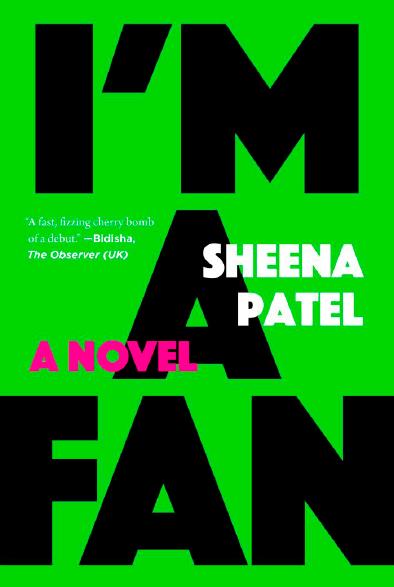
I stalk a woman on the internet who is sleeping with the same man as I am.
Sheena Patel’s incandescent first novel begins with the unnamed narrator describing her involvement in a seemingly unequal romantic relationship. With a clear and unforgiving eye, she dissects the behavior of all involved, herself included, and makes startling connections between the power struggles at the heart of human relationships and those of the wider world. I’m a Fan offers a devastating critique of class, social media, patriarchy’s hold on us, and our cultural obsession with status and how that status is conveyed.
In this unforgettable debut, Patel announces herself as a dynamic, commanding new voice in literature, capable of rendering a rollercoaster of emotions and experiences viscerally on the page. Sex, brutality, politics, work, art, tenderness, humor—Patel tackles them all while making the reader complicit in the inescapable trap of fandom that seems to define the modern condition.

In his debut work of nonfiction, awardwinning poet Roger Reeves finds new meaning in silence, protest, fugitivity, freedom, and ecstasy. Braiding memoir, theory, and criticism, Reeves juxtaposes the images of an opera singer breaking the state-mandated silence curfew by singing out into the streets of Santiago, Chile, and a father teaching his daughter to laugh out loud at the planes dropping bombs on them in Aleppo, Syria. He describes the history of the hush harbor—places where enslaved people could steal away to find silence and court ecstasy, to the side of their impossible conditions. In other essays, Reeves highlights a chapter in Toni Morrison’s Beloved to locate common purpose between Black and Indigenous peoples; he visits the realities of enslaved people on McLeod Plantation, where some of the descendants of those formerly enslaved lived into the 1990s; and he explores his own family history, his learning to read closely through the Pentecostal church tradition, and his passing on of reading as a pleasure, freedom, and solace to his daughter, who is frightened the police will gun them down.
Together, these groundbreaking essays build a profound vision for how to see and experience the world in our present moment, and how to strive toward an alternative existence in intentional community underground. “The peace we fight and search for,” Reeves writes, “begins and ends with being still.”
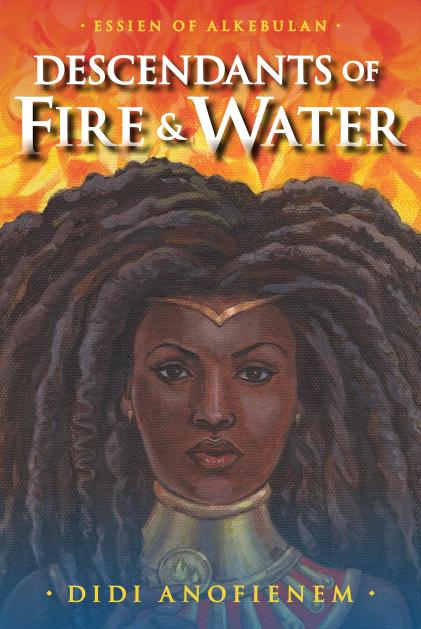
What would the world be like if Africa had never been colonized—and if the transatlantic slave trade had never happened?
The only daughter among five brothers, Essien was raised in a village where women are bred to tend to their husbands and bear children. One night, after she is led by akukoifo—mythical beings of Alkebulan folklore—to a fabled river, Essien emerges from the waters with superhuman abilities: hands that burn with the flames they contain, and the strength to overpower any of the men around her.
Unsure of what this newfound power means, Essien returns to an unfamiliar world a changed woman. And when militant rebels destroy her father’s fields, leaving him crippled for life, Essien is left with no choice but to defy the social conventions of her upbringing and become the first woman to enlist in Alkebulan’s formidable military. Without the presence of her family and friends, surrounded by fellow soldiers who want her dead and powerful forces that seek to manipulate Essien’s inner magic for evil, Essien must learn to control and harness her new powers, even as she fights her destiny to become her country’s long-awaited goddess. But not everything is as it seems. Will Essien step into her destiny as Goddess of Alkebulan, or will she make a decision that will alter the course of Alkebulan history forever?
Fueled by ancestral magic and the power of gods on earth, Descendants of Fire & Water is the thrilling first book in the powerful new Essien of Alkebulan series.

After parting ways with the eponymous McAfee Antivirus software company in 1994, McAfee embarked on innumerable business, political, and criminal enterprises. From investing in cybersecurity and cryptocurrency to accusations of murdering his neighbor in Belize to making two unsuccessful bids for President of the United States—the latter attempt done in exile following a federal indictment—this largerthan-life man nurtured a rakish public profile while evading law enforcement for his involvement with drugs, weapons, and murder.
For six months, Alex Cody Foster— hired as McAfee’s ghostwriter— traveled with McAfee across America and Europe, occasionally going on the run to evade purported killers and kidnappers. Foster tells the incomparable tale of how the two of them met, where their adventures had taken them, and what precipitated McAfee’s death.
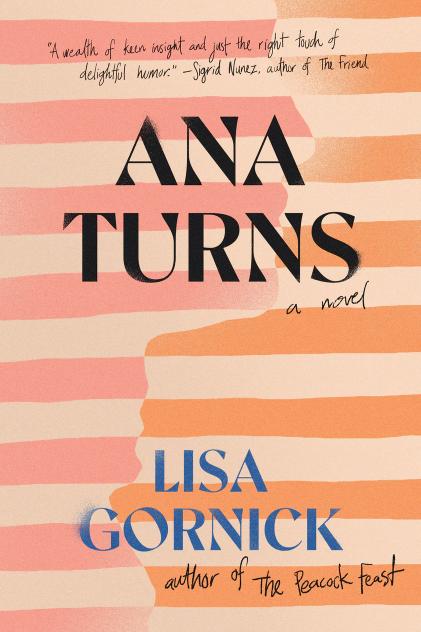
Nine years have passed since Ana Koehl had sex with her pot-addicted anesthesiologist husband; seven since she began an affair with a gonzo journalist. She’s gratified by her work as a book doula but burdened by her belief that she need always be on call. Her elderly mother’s birthday greeting is an inflation-adjusted calculation of the cost of raising Ana in a mice-infested house, her brother has hijacked the will of their recently deceased starchitect father, her adult child is changing rapidly before her eyes, and her best friend advocates for the truth in lies. Gazing out at the dark moat of Central Park from behind her desk, Ana sees that she can no longer postpone making peace with her past or confronting her present.
Narrated by Ana and the key figures in her life—her husband, her brother, and her lover’s wife, to name a few—Ana Turns spirals through issues from capital punishment to the dynamiting of the Bamiyan Buddhas, culminating in a watershed dinner party, with Ana’s family members’ true colors on full display. By day’s end, the bounds of her own collaboration and forgiveness illuminated, Ana turns towards a vision of what she wants next in this blink of a life.

A deeply affecting dual narrative separated by several centuries, Cities of Women examines the lives of women who dare to challenge the social norms of their days, risking their reputations and livelihoods for the sake of their passions.
In the twenty-first century, we meet Verity Frazier, a disillusioned history professor who sets out to prove that the artist responsible for the illuminated artwork in Christine de Pizan’s medieval manuscripts was a remarkable woman named Anastasia. As Anastasia’s story unfolds against the exquisitelyrendered medieval backdrop of moral disaster, political intrigue, and extraordinary creativity, Verity finds her career on the brink of collapse by her efforts to uncover evidence of the lost artist’s existence.
Inspired by a decade of research, Jones has woven together a luminous and incisive masterpiece of historical fiction, evoking the spare joys and monumental pitfalls facing medieval women artists and a contemporary woman who becomes obsessed with medieval books.

“Mr. Melvin Levin, I’m going to kill you.”
The Threat tells the darkly comic story of Melvin Levin, a middleaged man who is dissatisfied with his dull and mediocre life. That is, until he receives a mysterious death threat in the mail. Terrified at first, Levin soon becomes accustomed to the threat—and then, increasingly, delighted with it, thrilled with his newfound importance as a “threatened man.” But as his obsession with maintaining this identity becomes all-consuming, he risks blinding himself to the twin dangers of the threat itself and—perhaps worse— his own deranged mind.
At once absurdist, moving, and savagely funny, The Threat is a timeless parable of the comic lengths to which people go to protect the delusions that validate them.

An audacious, clever, and poignant debut novel from author David Starkey, Poor Ghost tells the unforgettable story of Caleb Crane, a retired insurance salesman whose average suburban life is upended when—on a September afternoon in Santa Barbara—a private jet carrying the members of one of America’s most storied rock bands plunges into his backyard.
Still mourning his wife’s death from Covid, Caleb finds himself navigating trauma, grief and loss, all while his quiet neighborhood is invaded by pushy reporters and rabid Poor Ghost fans.
Recalling Daisy Jones and the Six by Taylor Jenkins Reid in its fictional documentary structure, Poor Ghost moves back and forth between the impact of the plane crash on Caleb’s life and an oral history of Poor Ghost, from its beginnings as a working-class punk band to rock icons.
Connecting these two suspenseful threads are text messages and news articles, Instagram, Nextdoor, Twitter, Youtube and fansite message board posts. As the twisting and turning strands of the plot converge, the mystery of what happened to Poor Ghost’s plane is finally revealed.
Reverberating with the whole range of human emotion, Poor Ghost is an elegiac novel of art, ambition, and the ephemeral nature of fame; a love song to the relationships that sustain us and the painful beauty of the world as we know it.

In his memoir Try Not to Hold It Against Me, Schlossberg shares stories from a lifetime in entertainment, from his childhood in the Bronx to his years as a producer for screen and stage. Schlossberg takes us through the trials and triumphs of work and play in every avenue of the business: negotiating with Al Pacino, Burt Reynolds, and Lillian Hellman; hosting the syndicated radio and television production Movie Talk, which introduced him to hundreds of stars; experiencing the paranormal with Shirley MacLaine and Betty Hill; running the Orson Welles estate and restoring Welles’ masterly film adaptation of Othello; partying with Barbra Streisand and Liza Minelli; testifying in a lawsuit against The Beatles; and interviewing over 120 of the most influential figures of the 20th century for his series Witnesses to the 20th Century.
Written with engaging humor and selfdeprecation—and with a foreword by Academy Award winner Elaine May—Try Not to Hold It Against Me gives readers a behind-the-scenes pass to Cannes and Las Vegas, the lives and homes of the stars, and the rarely seen but crucial work of the producer in the midst of it all. It’s a compelling read for film, television, and theater enthusiasts alike—and a one-of-a-kind autobiography by one of entertainment’s true insiders.

When your dying mother has one last request, how can you say no?
Grace Tingley and Brian Posey are forty-something twins whose lives have gone in very different directions. Grace, now a private school teacher in coastal Connecticut, was a PhD candidate at Yale when an unexpected pregnancy threw her plans into a tailspin. Brian, an adventure travel executive in Seattle, barely scraped through an obscure New England college and recently married Ella, after three years in an intimate relationship with a charismatic man from Jamaica.
When their widowed mother Cinny, a charter member of Woodstock Nation, is diagnosed with Parkinson’s disease, Grace and Brian are there for her last days in hospice care. This is where Cinny reveals her staggering plan for the siblings: They’re to sprinkle her ashes, mixed with their father’s, at a series of exotic locations around the globe—some remote, some challengingly public, all known and loved by the Poseys. Joined by their own immediate families, Grace and Brian set off on a funereal odyssey that uncovers more about their parents’ relationship, and themselves, than the twins find it easy to admit.
By turns hilarious, profound, jarring, and poignant, Pocketful of Poseys bounds dizzily across the United States to New Zealand, Thailand, Italy, and more, as the last of Cinny Posey’s secrets are exposed, and her survivors are forced to confront the strength of the ties that bind them all together—for worse and for better.

Secrets are revealed. Lies are exposed. And in order to have a future, William and Eva will have to delve into the past.
William Templeton, widower and police chief of Eden, North Carolina is working the scene of a local woman’s drowning when the body is found with an old gold coin in her pocket – identical to a coin that was discovered on Catherine’s body, his estranged wife, over a year ago. Catherine’s case, originally deemed a tragic accident, has been reopened, forcing William to step down as police chief.
Historian and Blackbeard expert, Eva Knightly, is brought into the investigation to help identify the coins and can’t understand why her good friend Catherine never mentioned anything about it. When more coins surface at a local church, Eva and William know it’s more than mere coincidence. With the entire town whispering about Blackbeard, cursed coins, and lost treasure, it becomes hard to separate what is true and what is a myth.
The Seafarer’s Secret is a thrilling cinematic mystery featuring the exigent slow-burning romance between William and Eva as they work together to reveal the secrets and lies of Eden, North Carolina. Though, in order to have a future, they’ll have to look deep into the past to keep from being a modern-day killer’s next victim.

A Novel Inspired by True Events
Shattered Bodies
Broken Dreams
The Race to Win Back Hope
In a novel that fuses the riveting action of The Boys in the Boat with the emotional heft of The Fault in Our Stars, twenty men and women with cancer-ridden bodies compete in a grueling race only to discover that real victory is achieved within.
After he is diagnosed with neuroendocrine cancer, Tripp Avery feels like all is lost. He finds himself coaching a team of twelve men and eight women with cancer diagnoses of their own, hoping to qualify for the Mixed Masters Dragon Boat national championship and defy their prognoses. If they win, they will represent the United States at the International Dragon Boat races in Hong Kong.
But things soon get complicated, as four of his teammates struggle against their physical limitations and the psychological weight of their conditions. In the summer heat of Chattanooga, their resolve grows thin—along with Tripp’s patience. After a devastating loss to the defending national champions, Tripp can only see the finish line, and he pushes the team even harder. Soon, the team starts to fall apart.
As members of the team collapse under the pressure and one is hospitalized, he must confront his own failings and find a way to move forward. He begins to question his motives, wondering if the win is worth the trauma and what that says about him. Despite the odds, he resolves to rally the team toward a comeback that seems impossible, if only for one final victory.

A debut novel of female friendship and coming-of-age from Jazmina Barrera, acclaimed author of Linea Nigra and On Lighthouses, translated by Christina MacSweeney.
It was meant to be the trip of a lifetime. Mila, Citlali, and Dalia, childhood friends now college aged, leave Mexico City for the London of The Clash and the Paris of Gustave Courbet. They anticipate the bookstores, cafés, and crushes, but not the realization that they are steadily, inevitably growing apart.
That feels like forever ago. Mila, now a writer and a new mother, has just published a book on needlecraft, an art form long dismissed as “women’s work.” After hearing that her old friend Citlali has drowned, Mila begins to reminisce about their years together for the first time since becoming a wife and mother. What has come of all the nights the three friends spent embroidering together in silence? Did she miss the signs that Citlali needed help?

Maria Judite de Carvalho (1921-1998) is now recognized as a major Portuguese writer of the twentieth century. In the short story she found the perfect vessel for her frank depictions of tragic, ordinary lives, and So Many People, Mariana collects her first four books of short fiction in English for the first time, telling of women and men in moments of existential conflict: with their families; with themselves; with the prospect of a better future—or any future at all. These stories, originally published between 1959 and 1967, when the Salazar dictatorship and the rigid edicts of the Catholic church reigned, are acerbic, artful, and funny. Translated by the renowned Margaret Jull Costa, Carvalho leads readers into the sensuous dark of life under patriarchal capitalism, proffering tragic visions of classconscious malaise “as precisely and without sentiment as an autopsy” (New York Review of Books).
 ELEKTRIK by Multiple Authors
ELEKTRIK by Multiple Authors
What does it mean to be Caribbean in the 21st century? Is it imprinted in the landscape, the language, or is it perhaps, in the words of Mireille Jean-Gilles (tr. Eric Fishman), “a place that lives in me, and that I unfurl, like a nomad his tent, in each place where I live”? In Elektrik, eight female writers from Haiti, Martinique, and Guadeloupe explore the beauty, pain, and complexity wrapped up in their identity. An undercurrent of silence pervades each story, each poem: a group of women walking silently along the shore, forgotten by the world; a waitress who doesn’t dare stand up to her abusive boss; a teenager discovering her sexuality in the shadow of her more outgoing twin sister; and a poet who summons a chorus of sirens, only to warn them: “Keep your voices’ beauty from waylaying sailors.” In glittering translations from French, Elektrik is a celebration of writing at its very best, of language as defiance.

Who are the green women? They are powerful (one is a disciplinarian teacher). They are mysterious (one haunts a house like a ghost). They are seductive (one marries her best friend’s father). And they are unbearably personal (one is the author’s own mother).
They are all aspects of their creator: Marie NDiaye, an author celebrated worldwide as one of France’s leading writers. Here, in her own skewed take on the memoir, NDiaye combs through all the menacing, beguiling, and revelatory memories submerged beneath the consciousness of a singular literary talent. Mysterious, honest, and unabashedly innovative, NDiaye’s self-portrait forces us all to ask questions—about what we repress, how we discover those things, and how those obsessions become us.
This 10th anniversary hardcover edition of Marie NDiaye’s genredefying classic restores photographs that appeared in the original French edition alongside Jordan Stump’s dazzling translation, revealing in English, at last, the complete vision of NDiaye’s influential masterpiece.
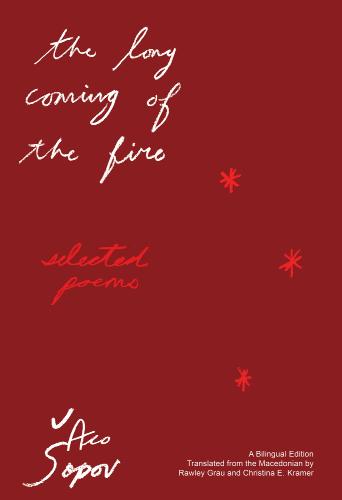
by
Aco ŠopovTranslated by Rawley Grau and
Christina E. KramerThis substantive collection represents Šopov’s creative career, starting with his first book of poetry in 1944, when he was fighting in the Yugoslav resistance to the German occupation. In the early 1950s, he published two collections that signaled a new direction for Macedonian poetry as a whole, announcing the arrival of new form “intimate lyricism”. Over the next 25 years, Šopov’s work deepened further, acquiring a philosophical cosmic dimension and at times venturing into surrealism. The Long Coming of the Fire shares the work of a consummate craftsman littleknown in the Anglophone world, achieving a “penetrating, resonant, and melodic” poetic language with “a lively and pregnant imagery that binds together the experience of the author and reader” (Graham W. Reid).


Books and doors are the same thing. You open them, and you go through into another world.”
– JEANETTE WINTERSON
